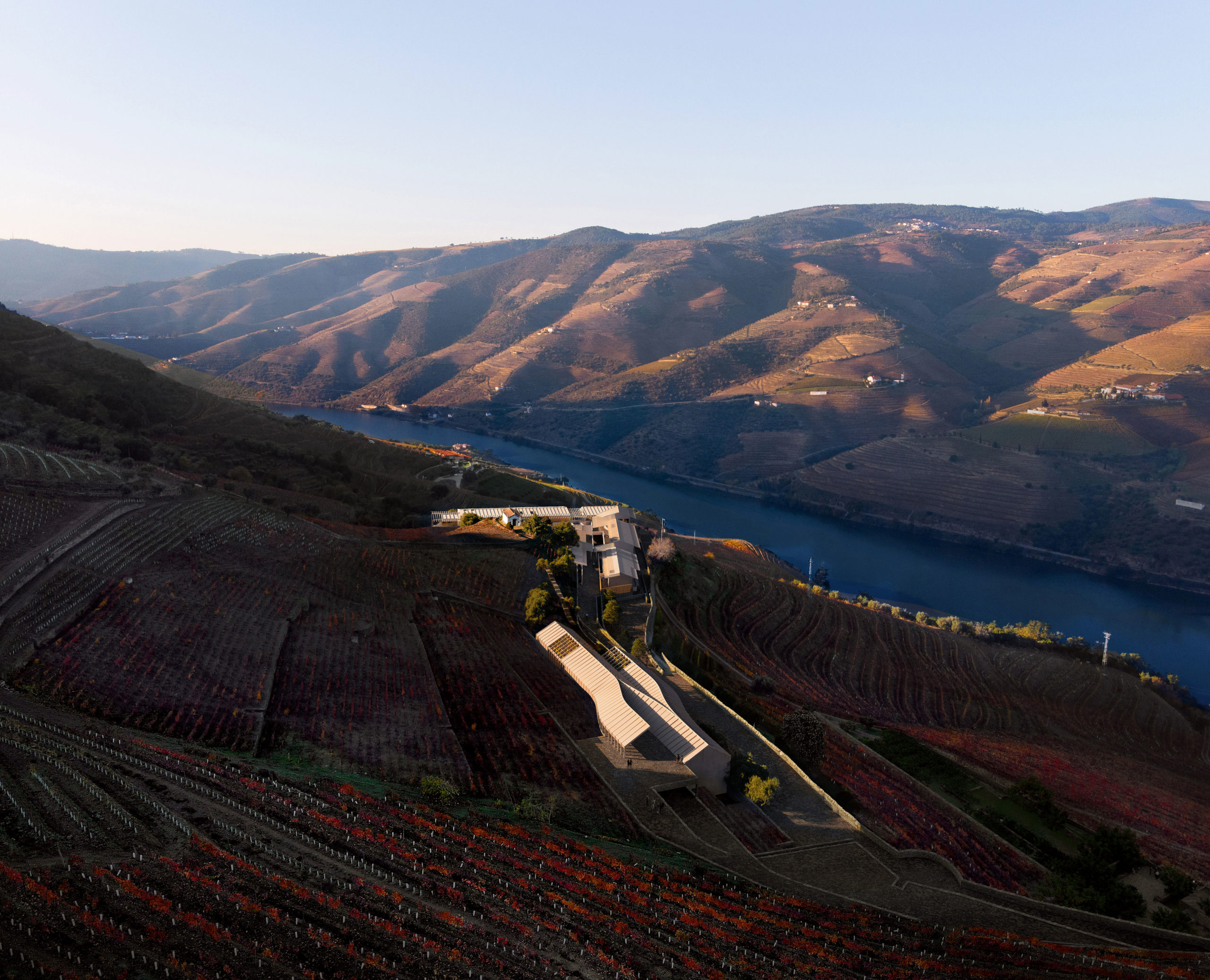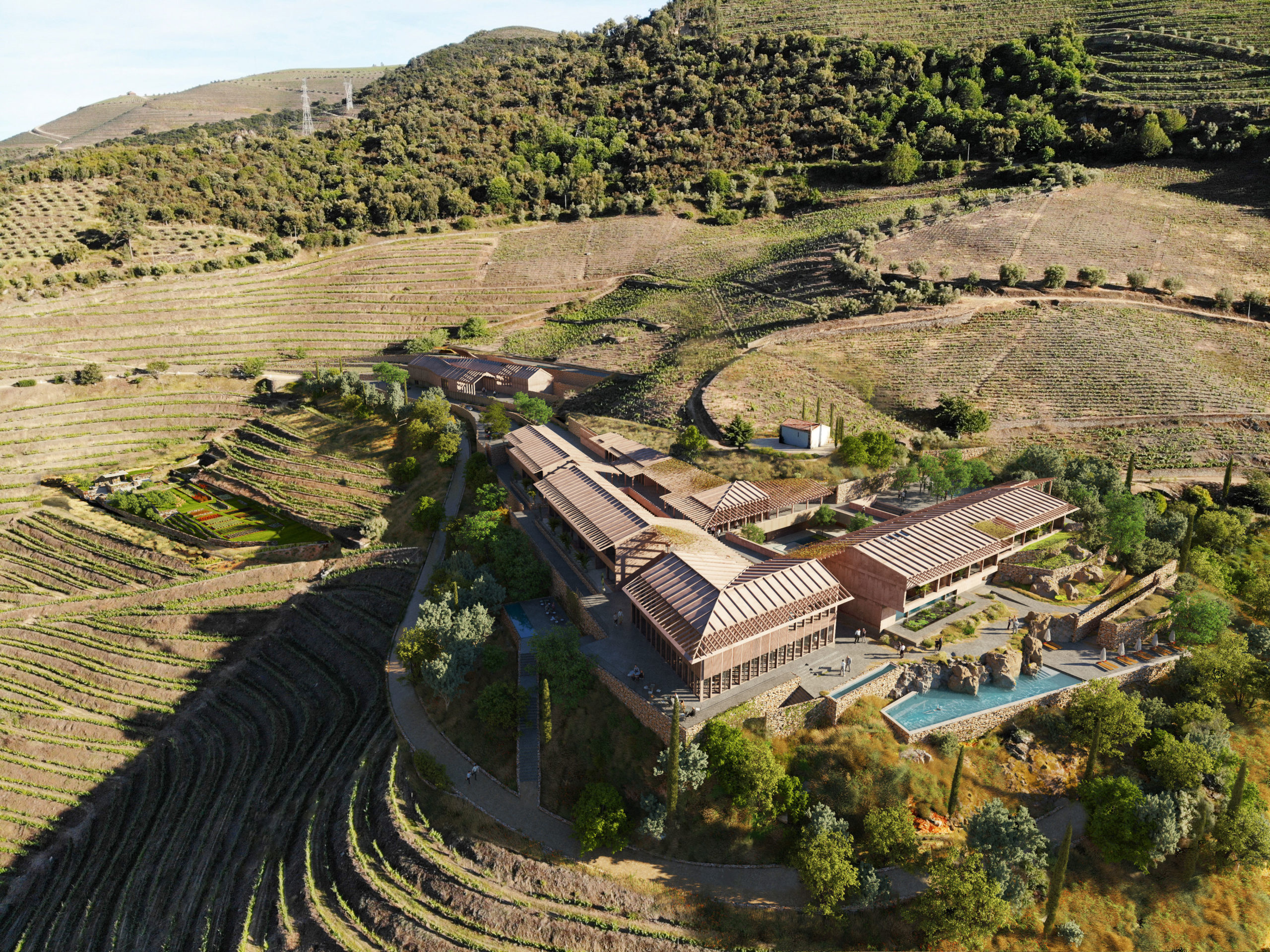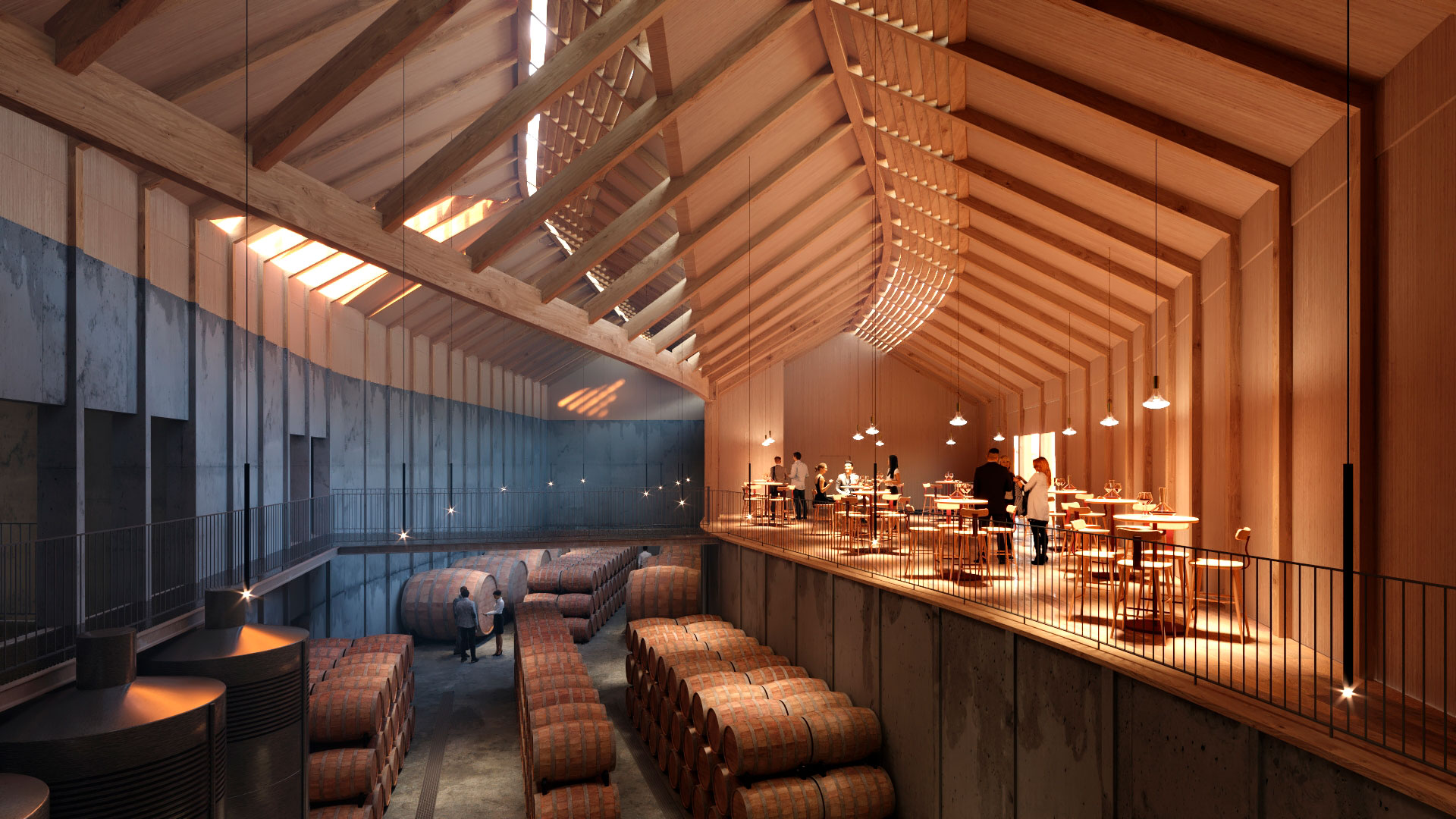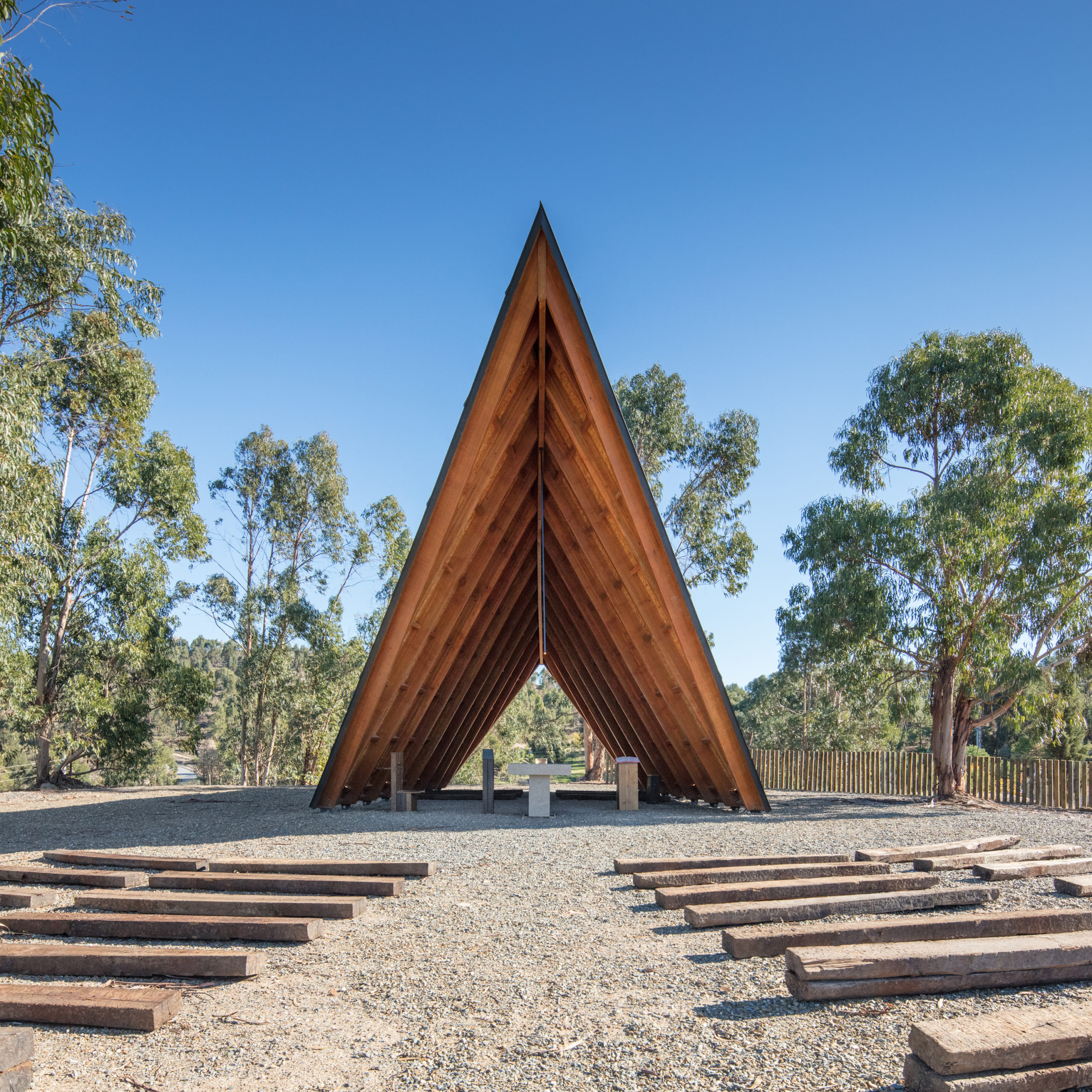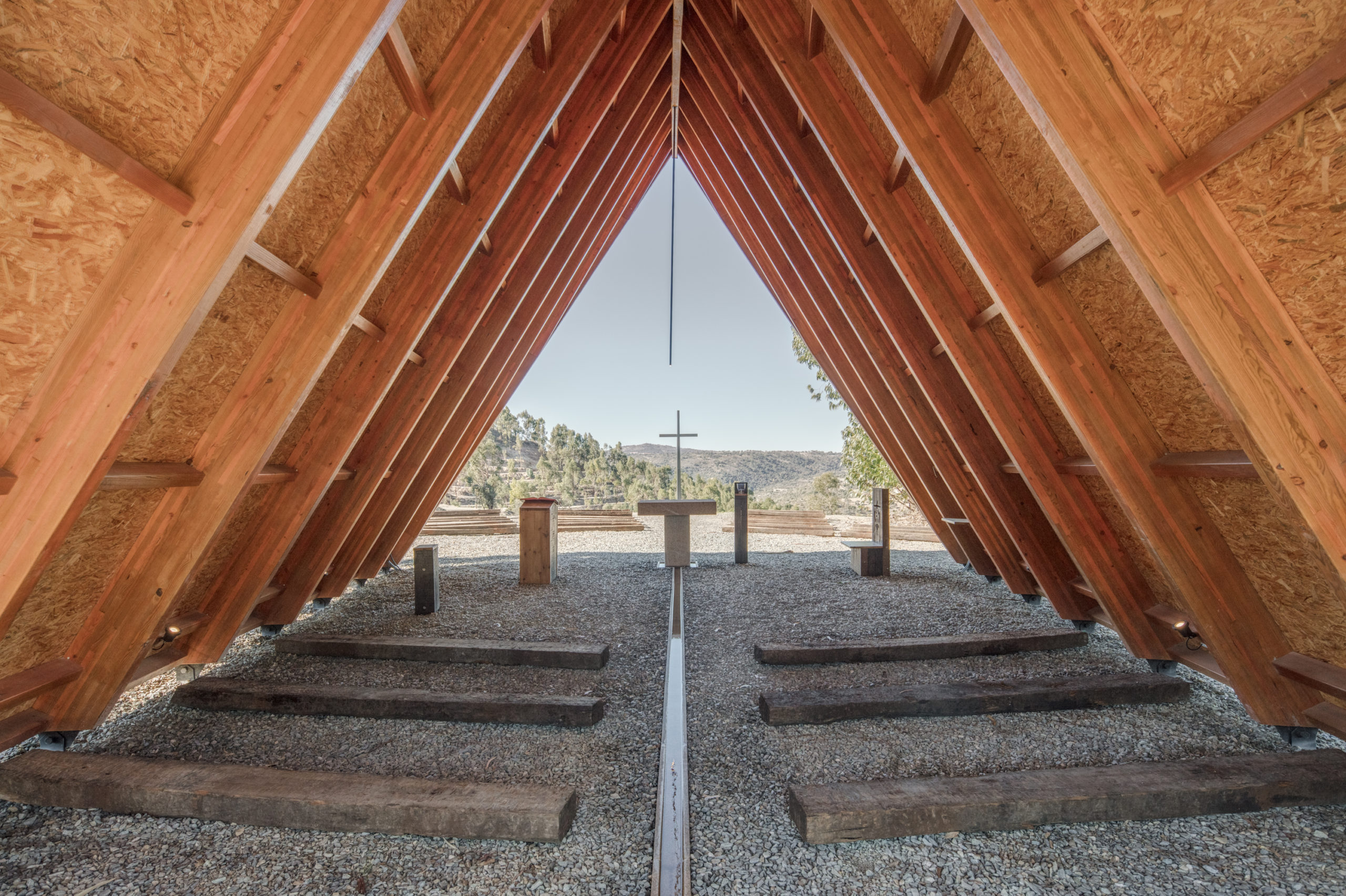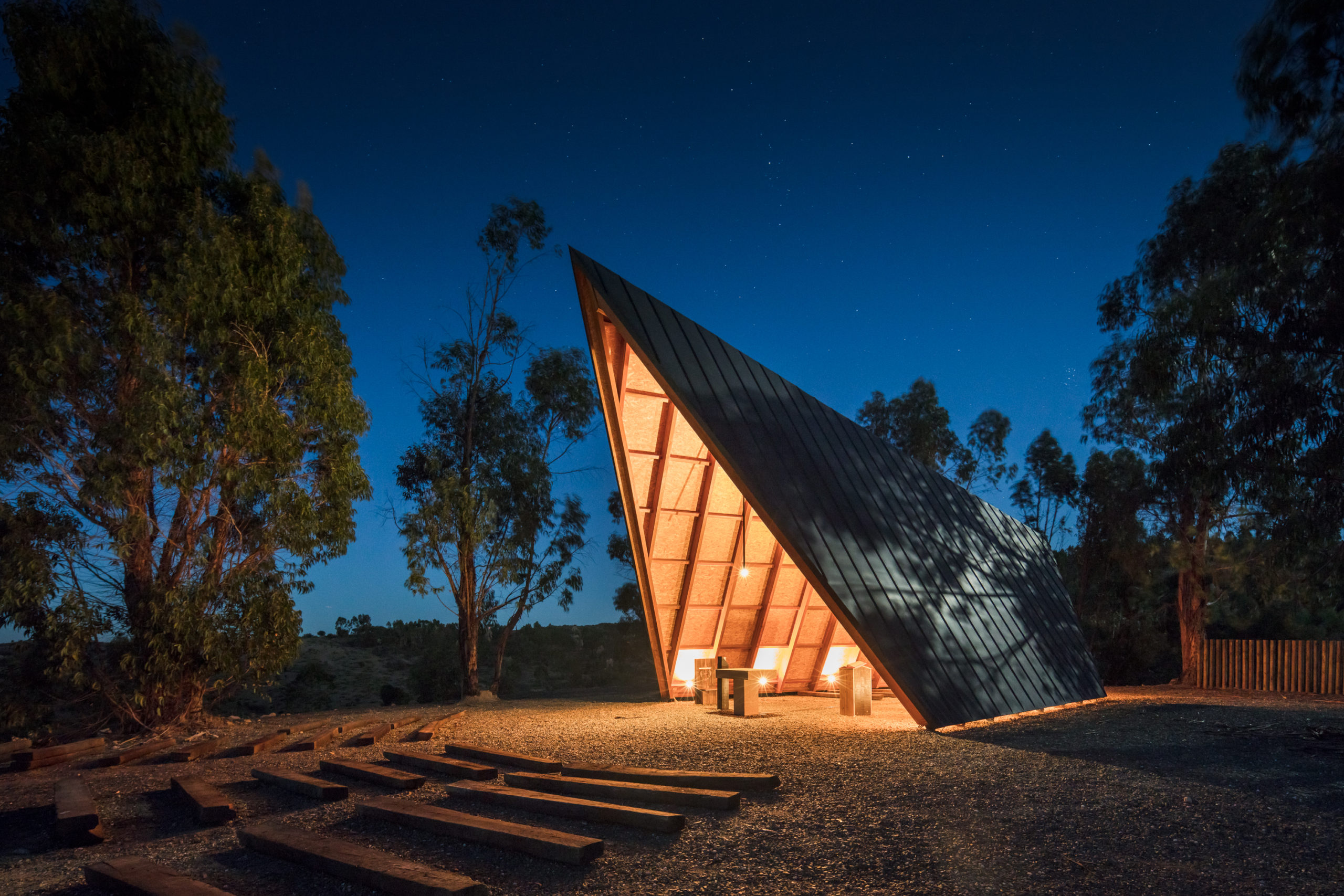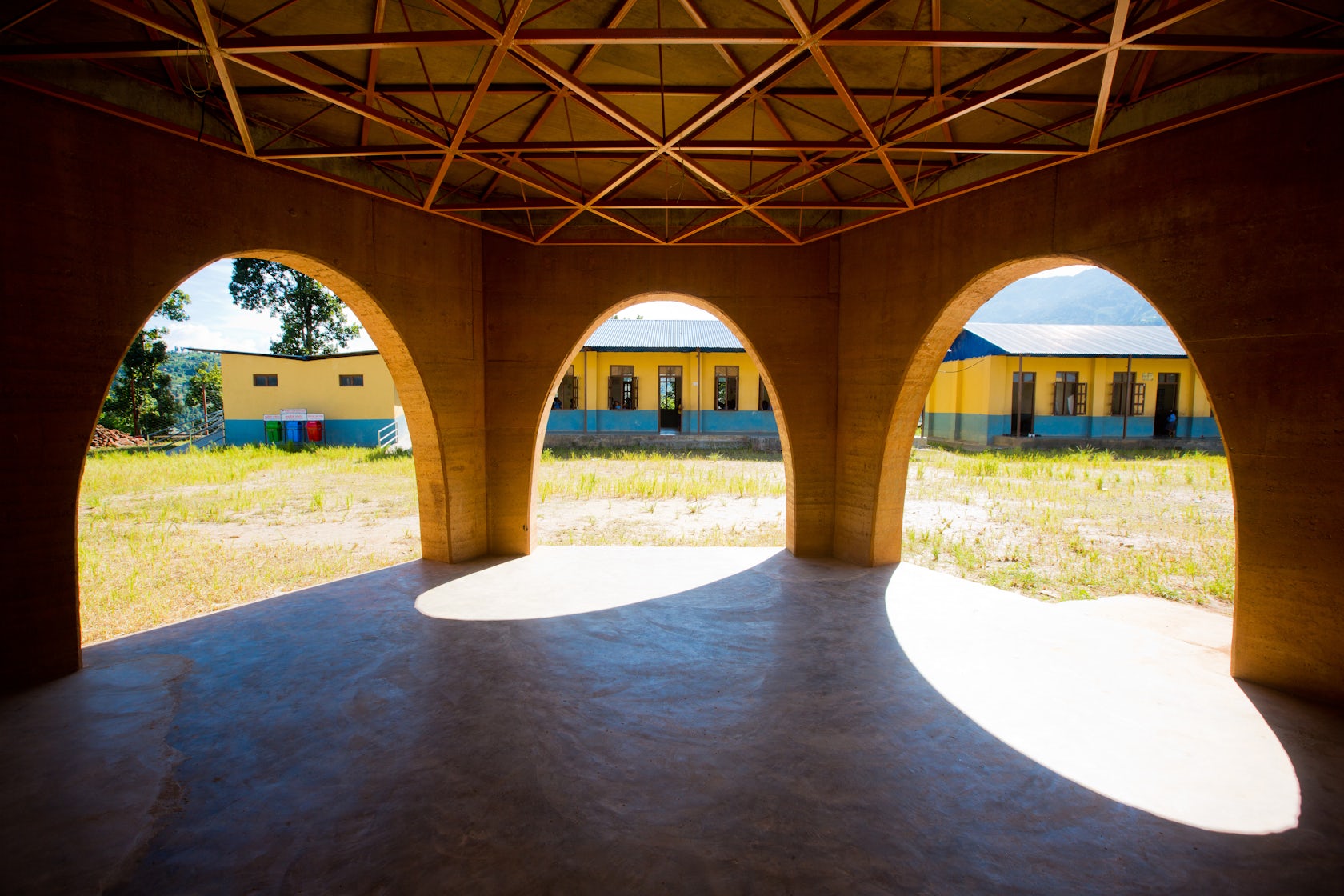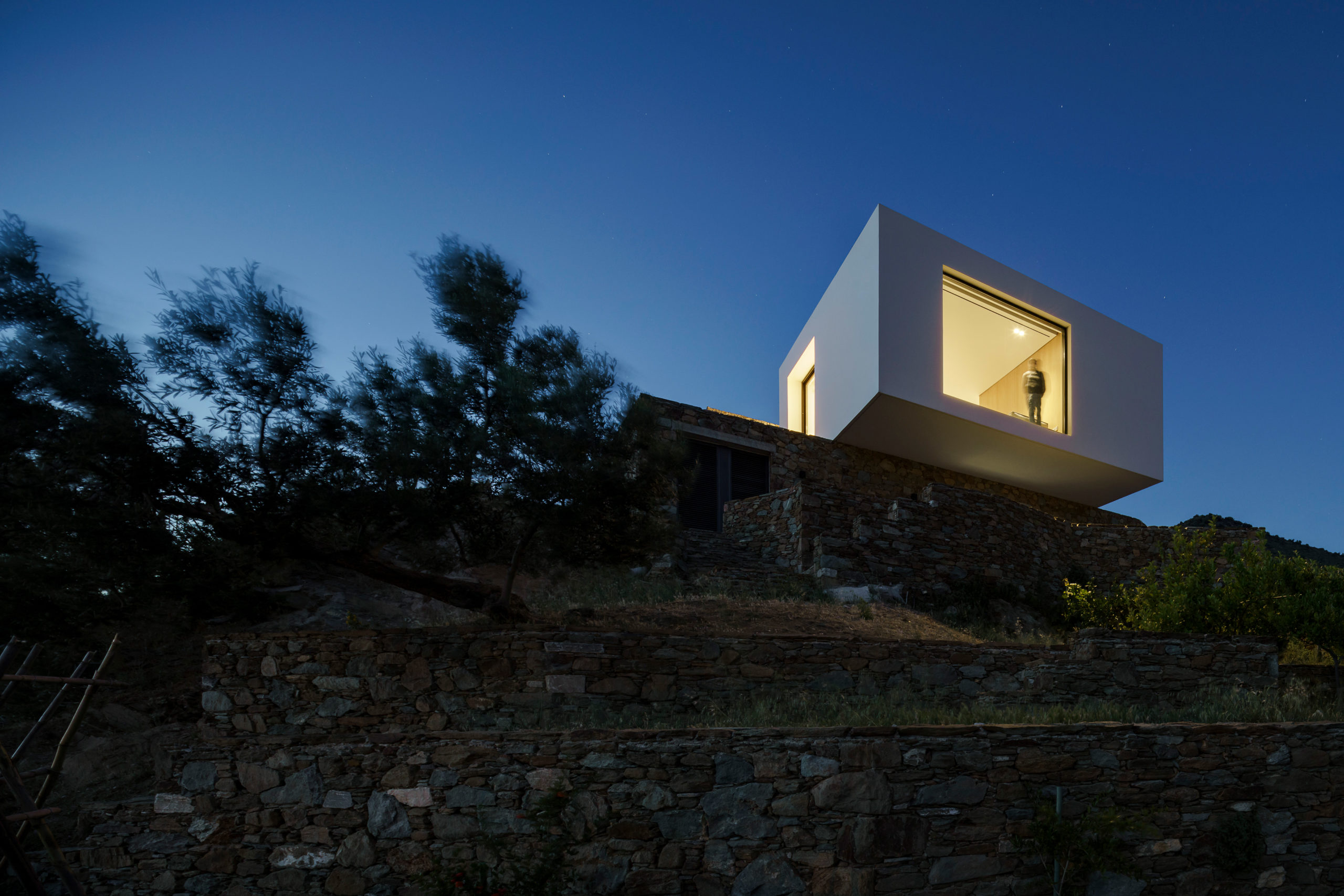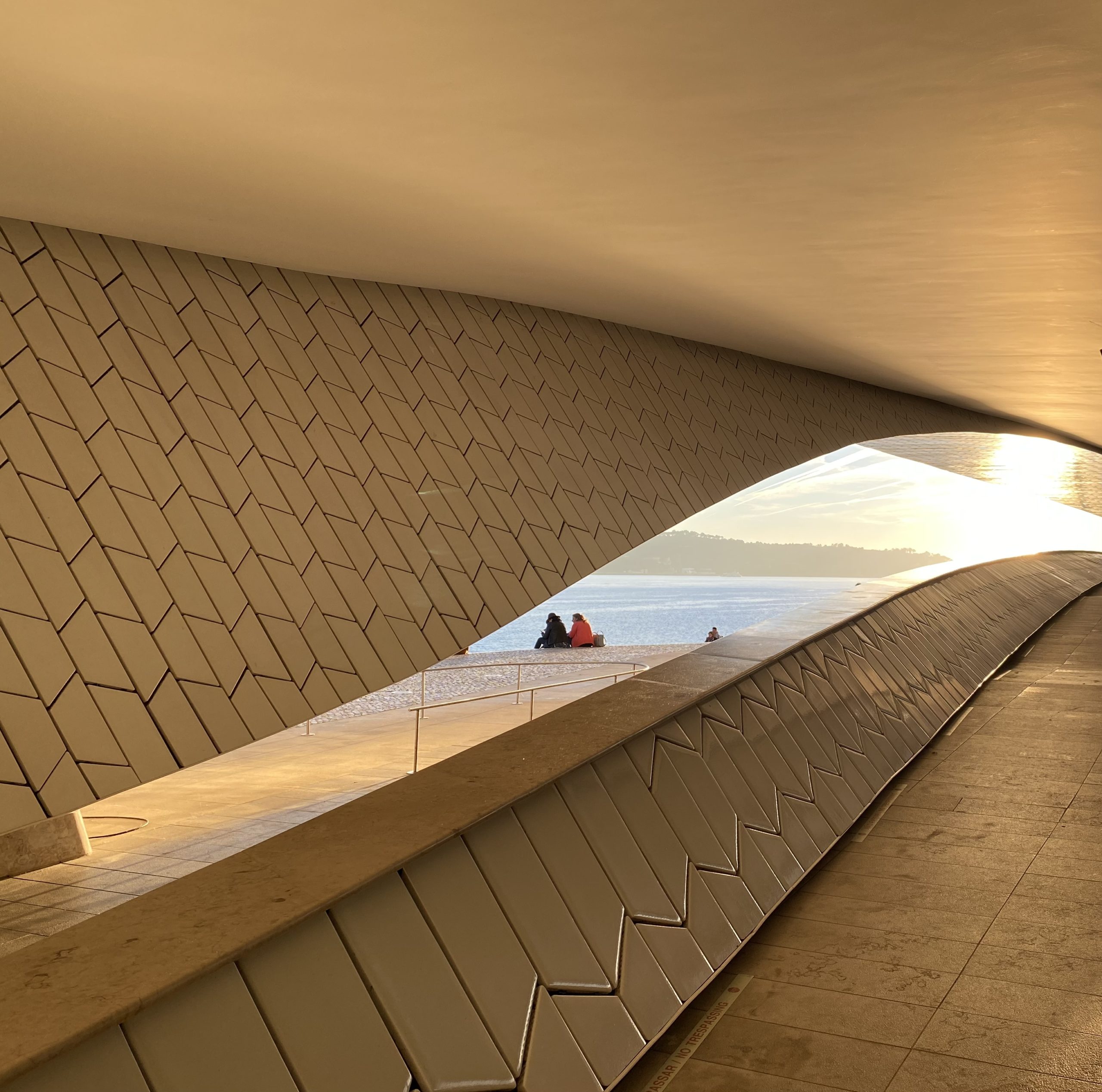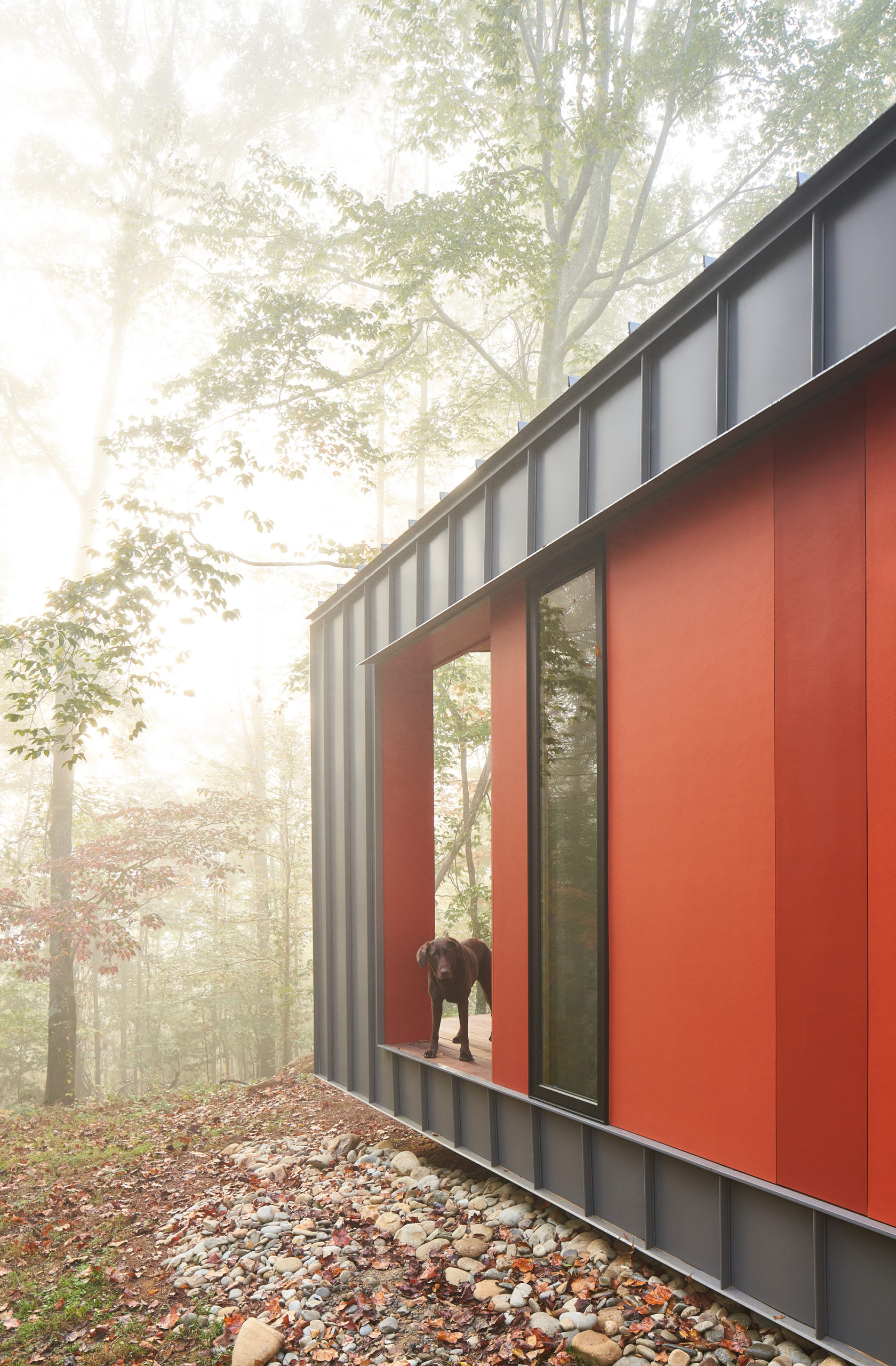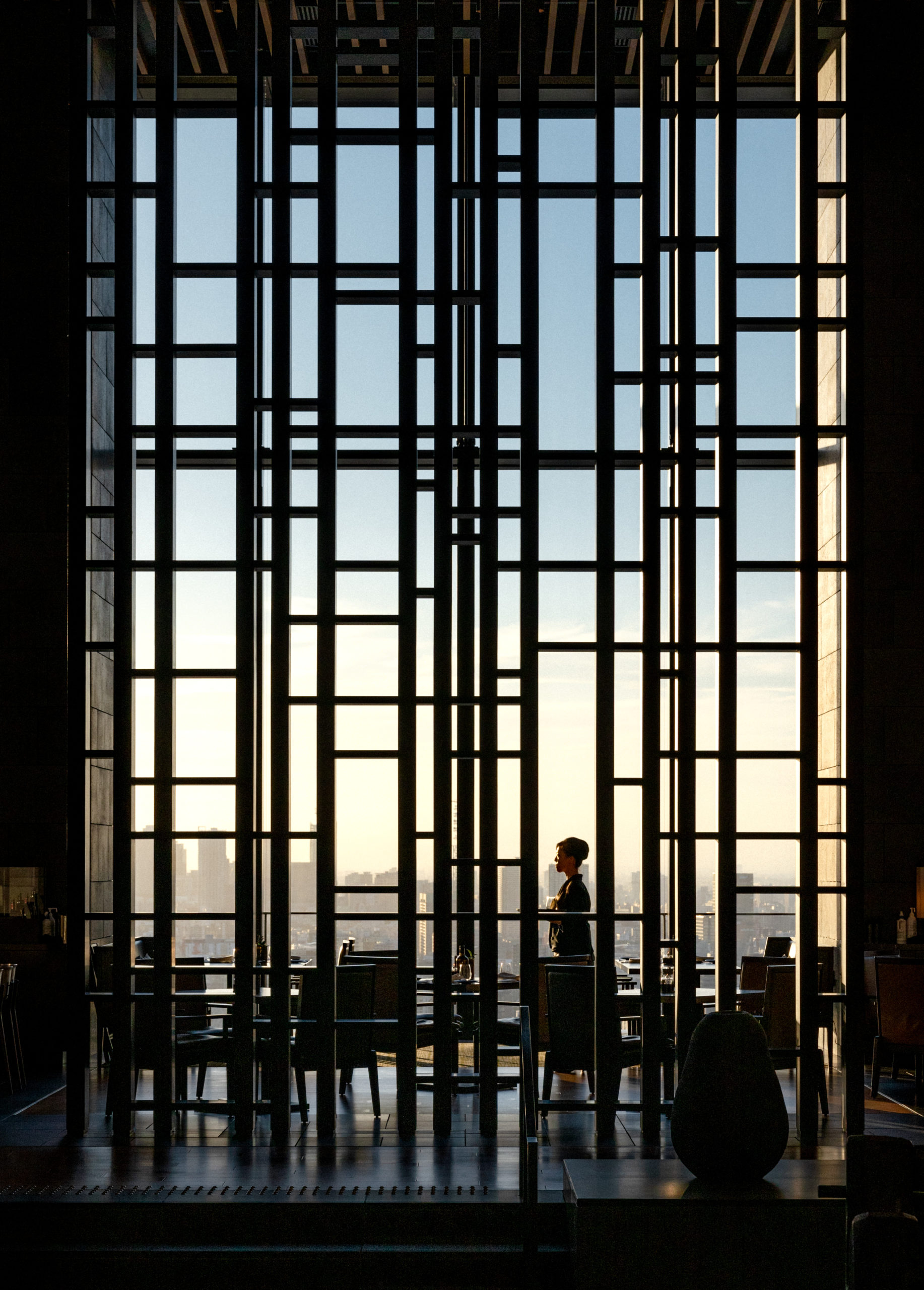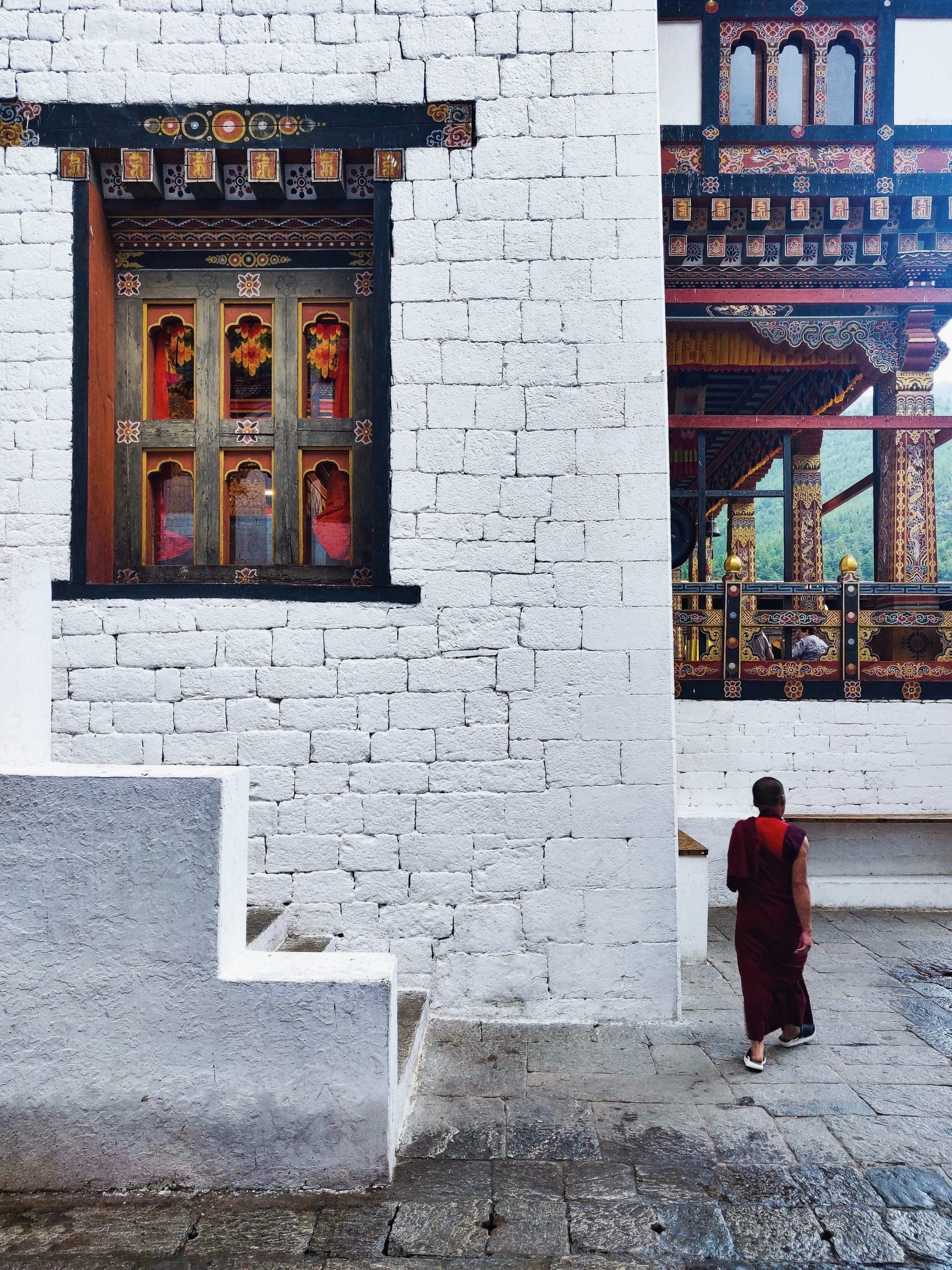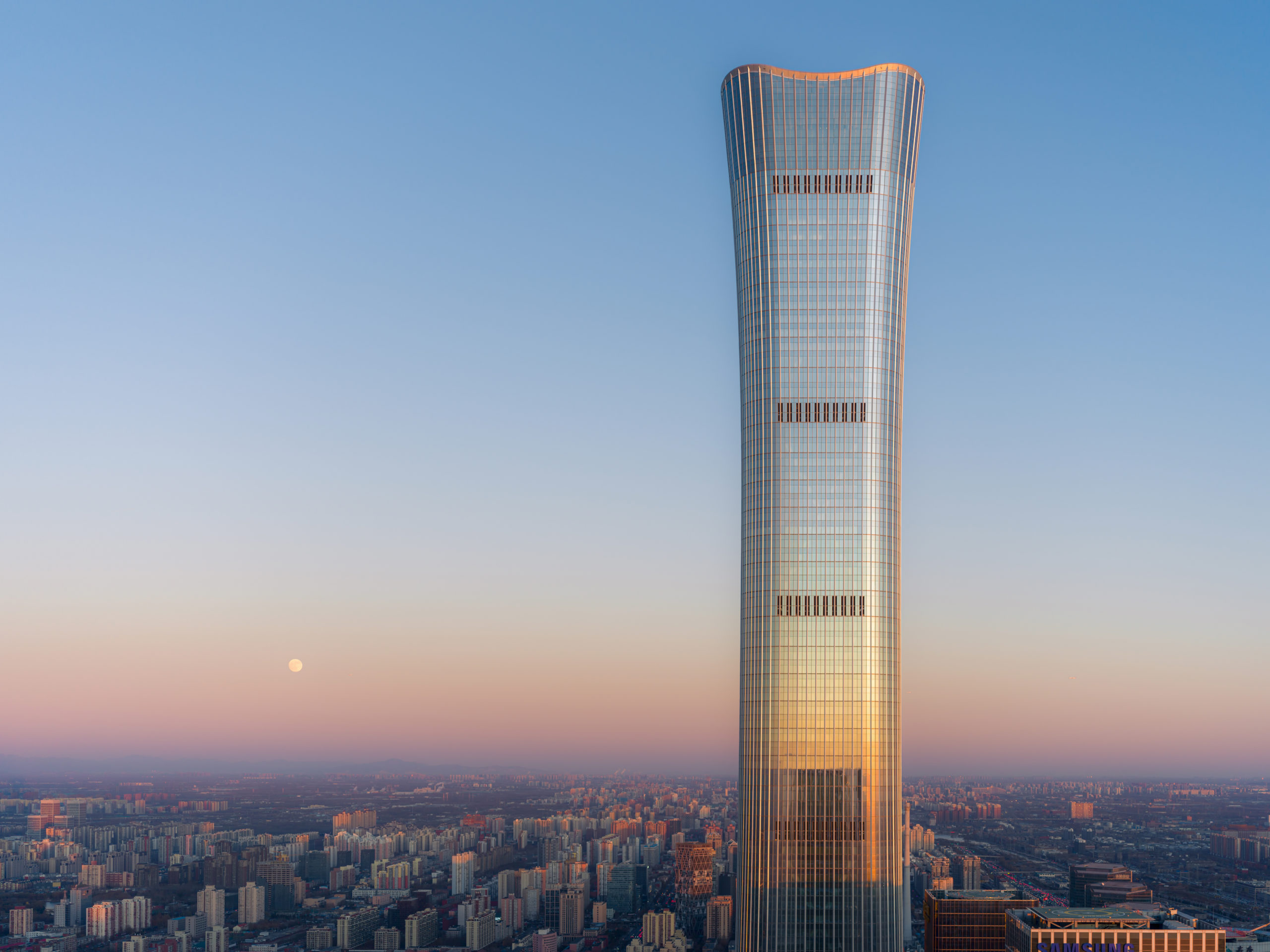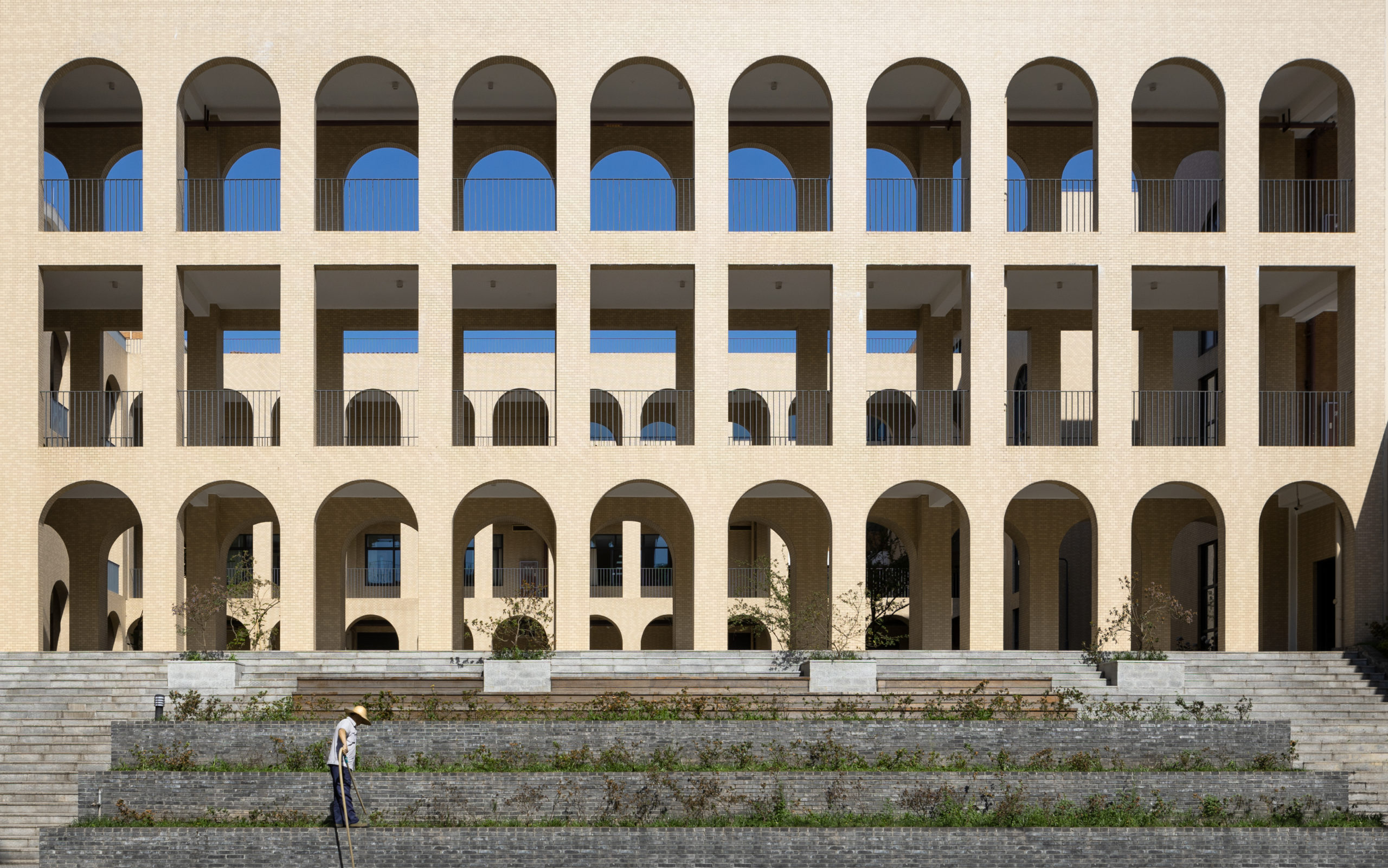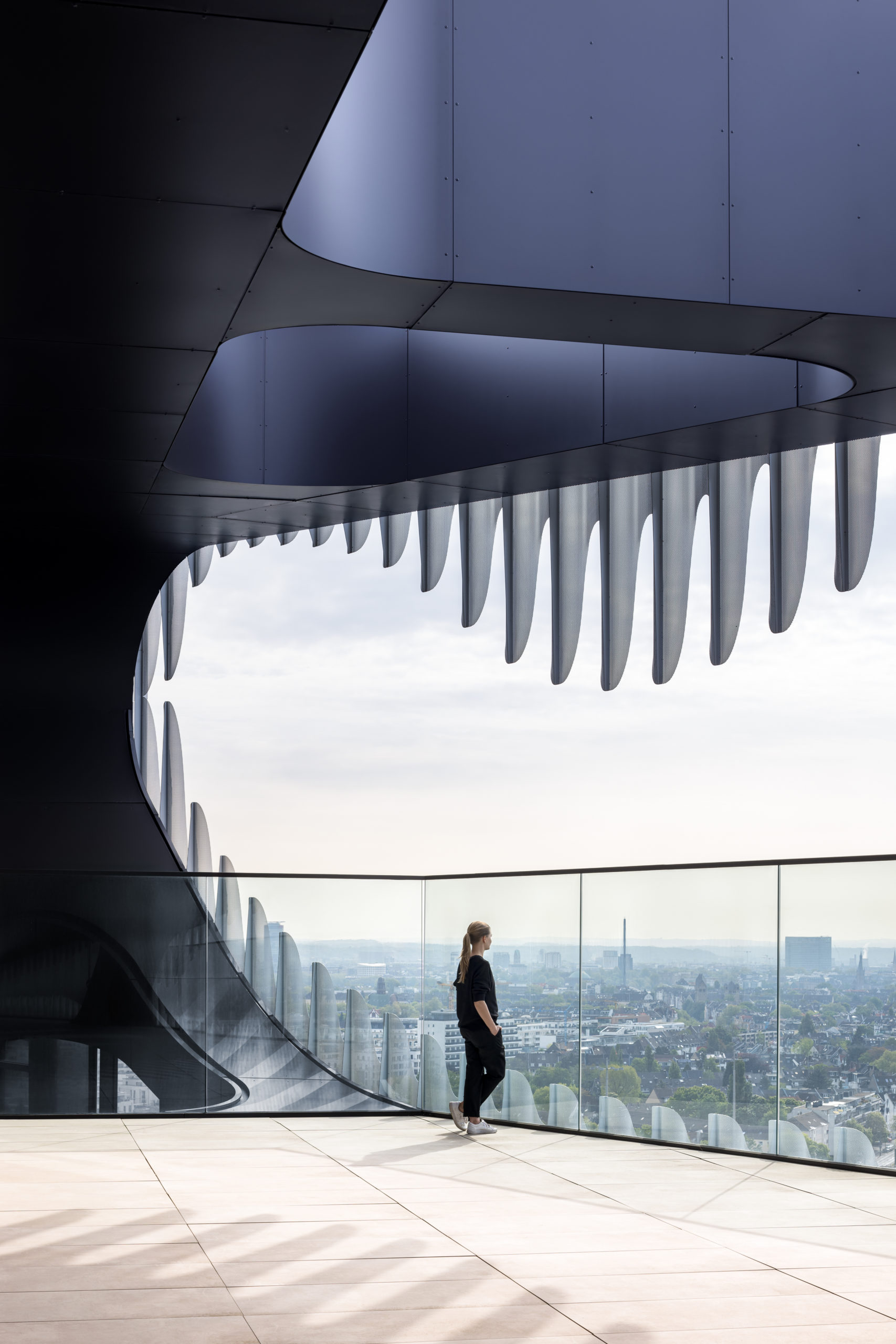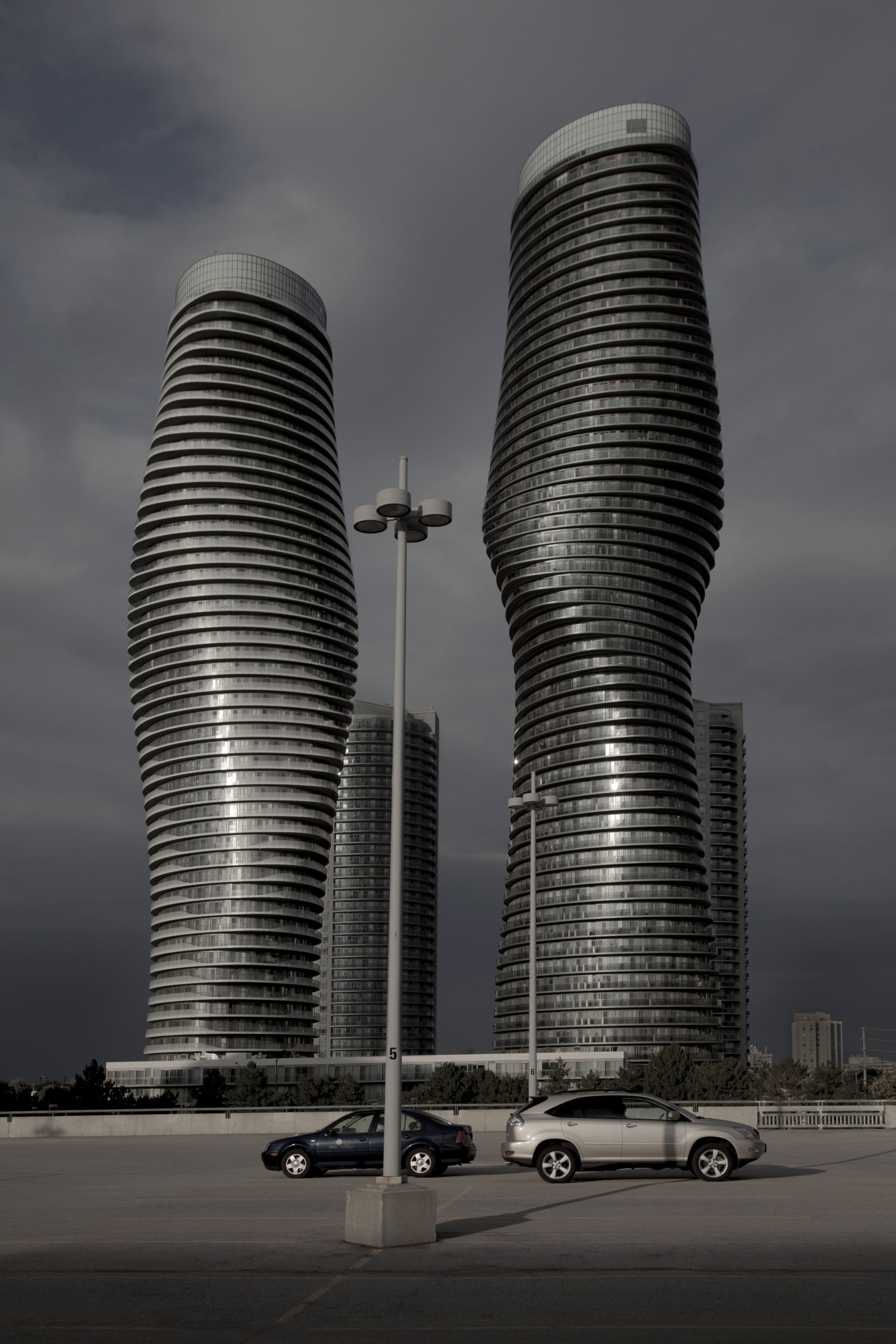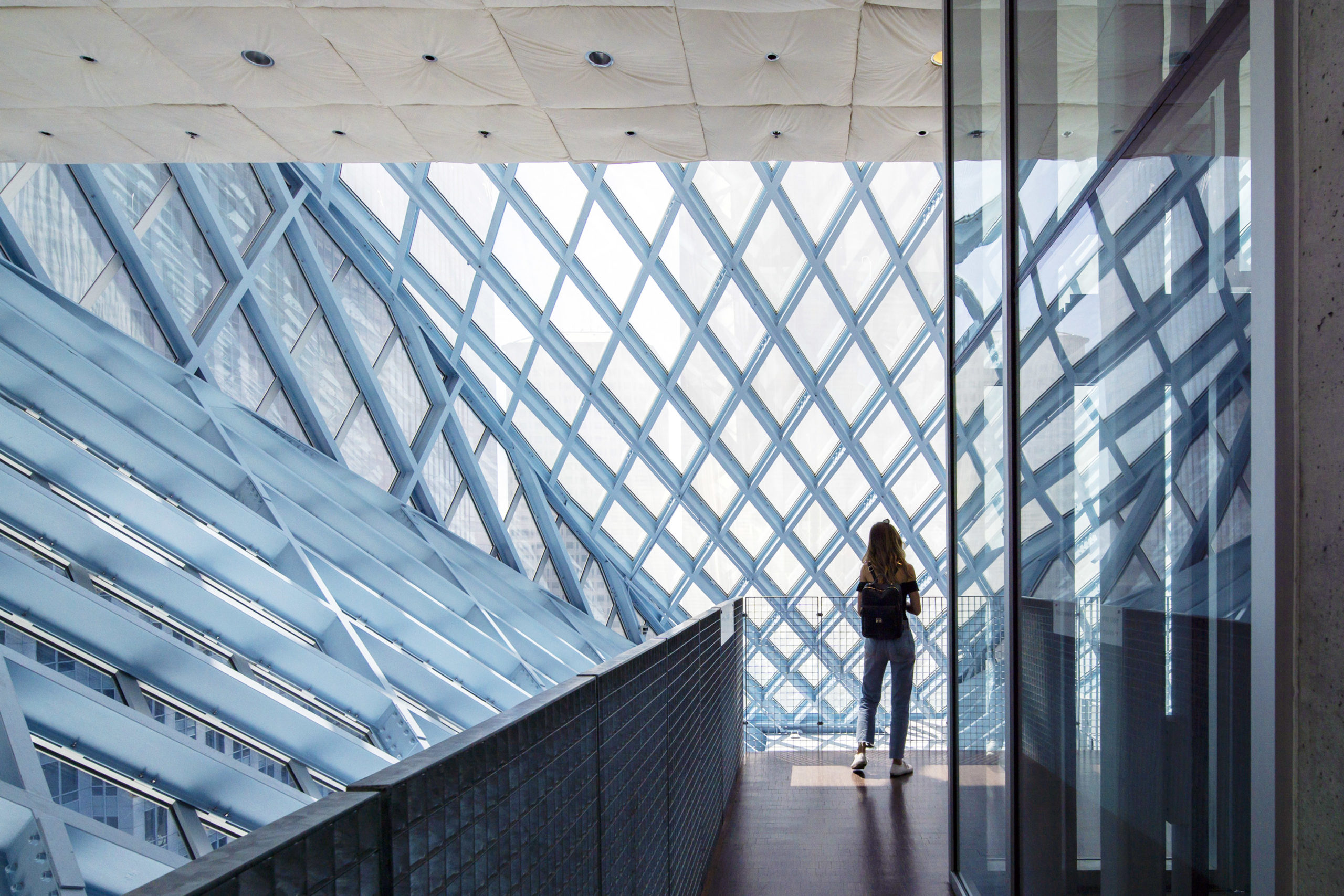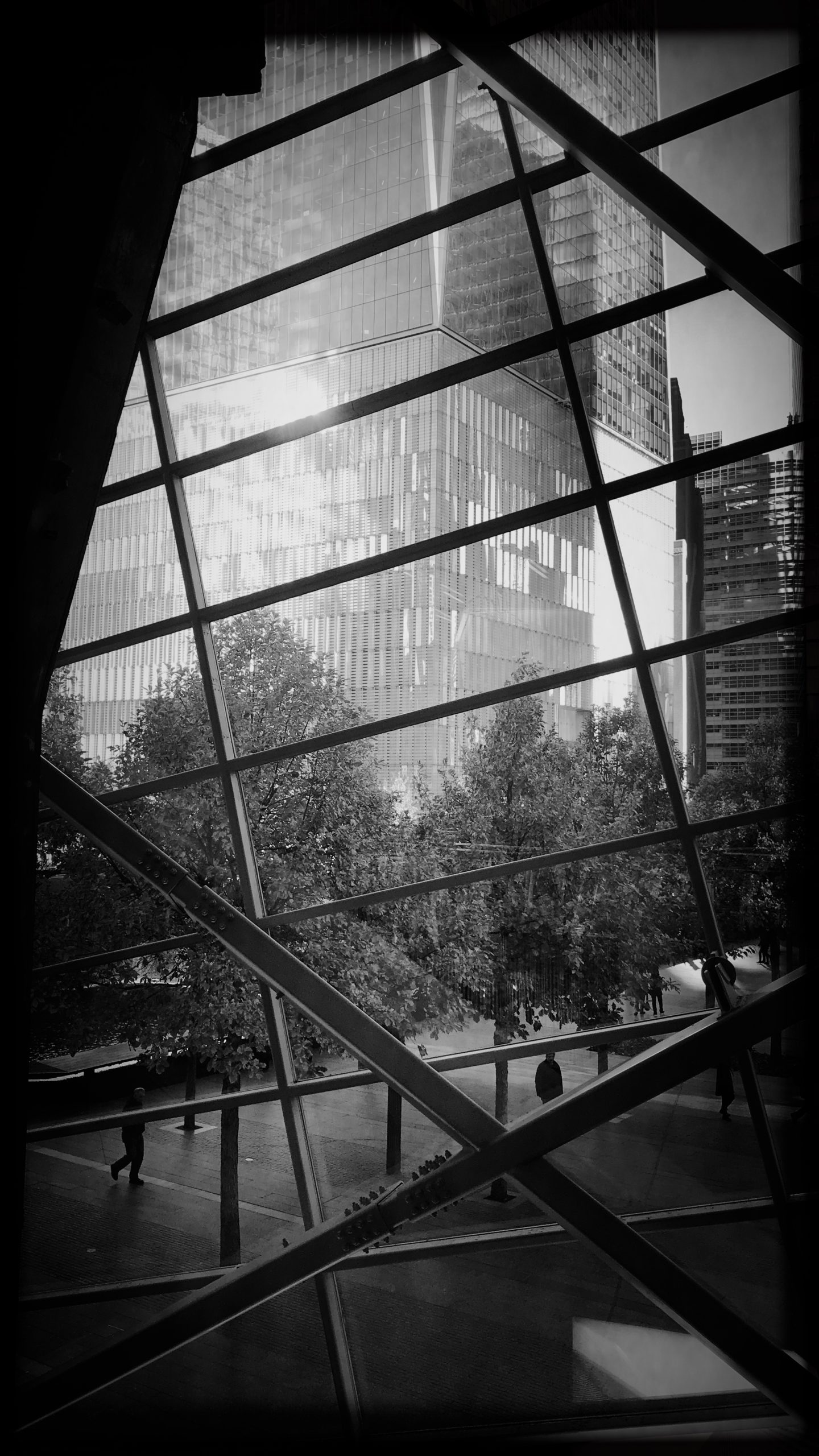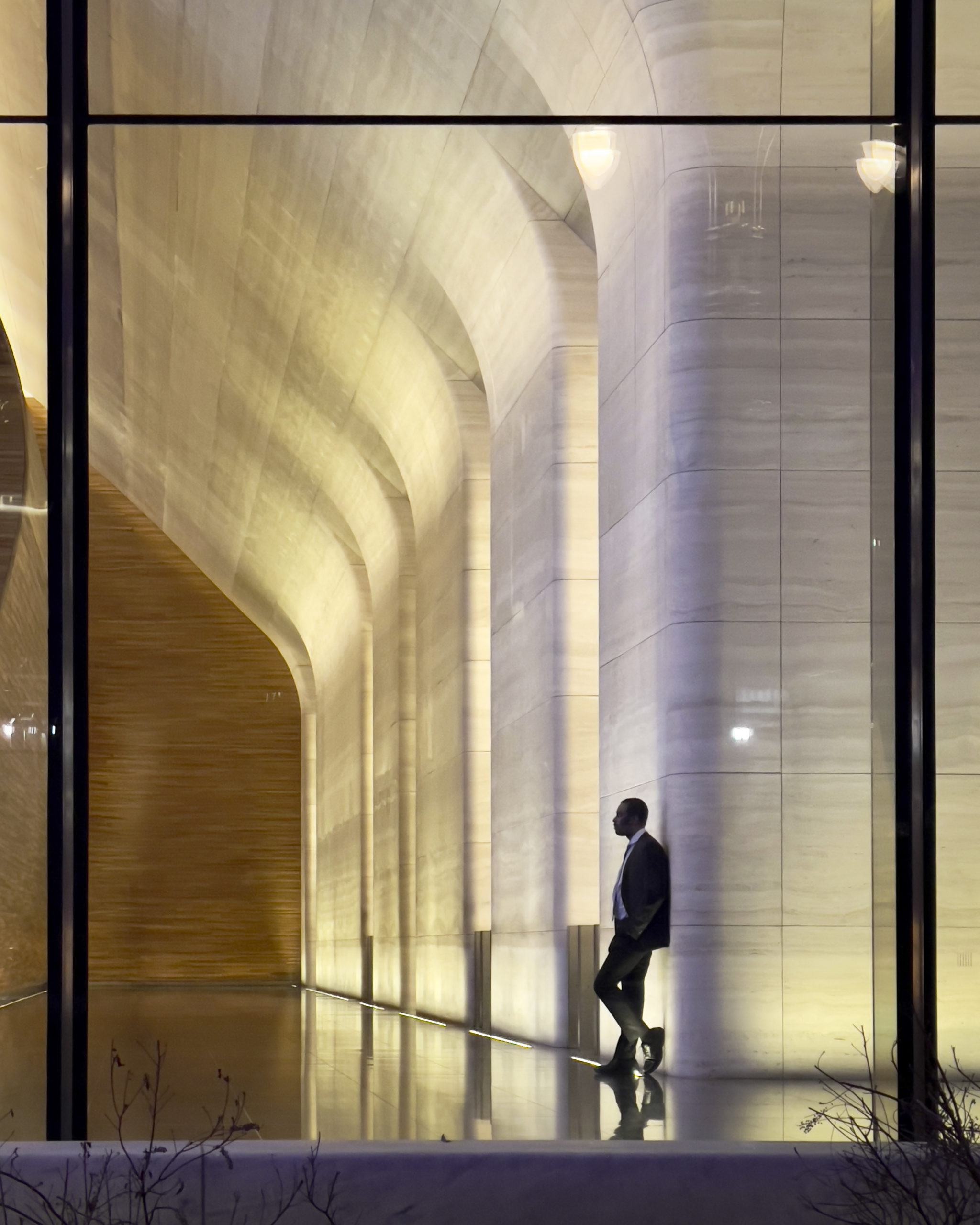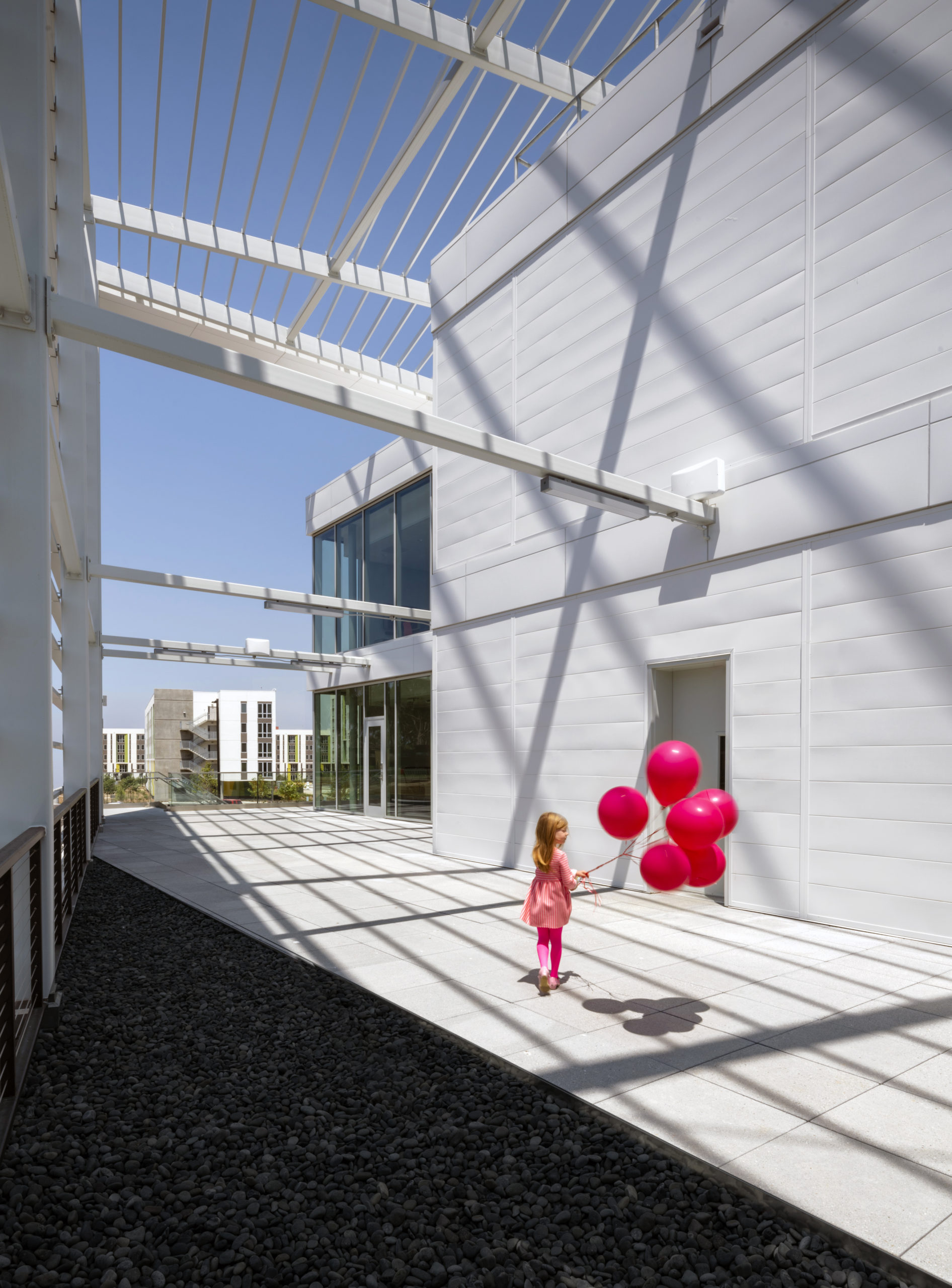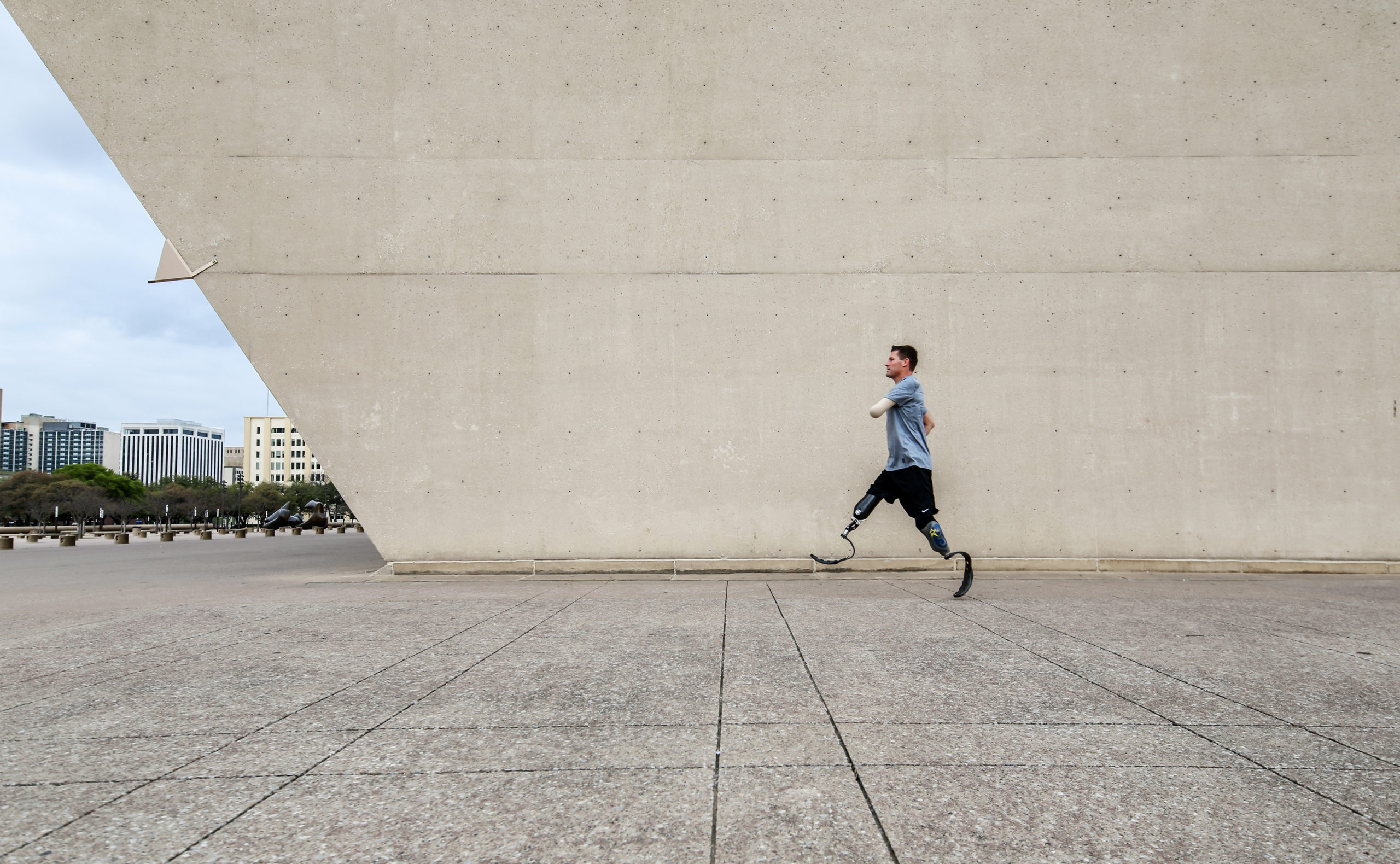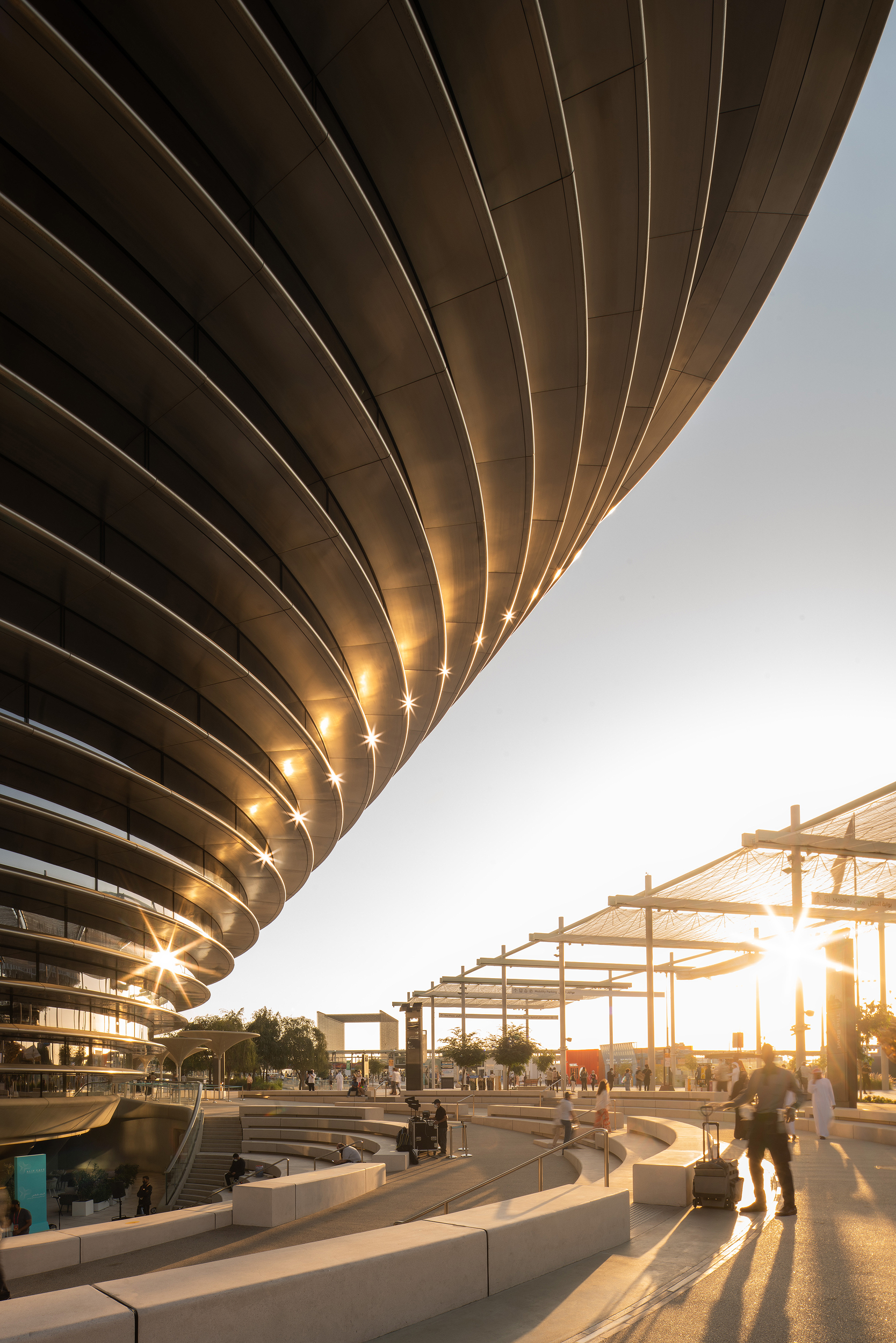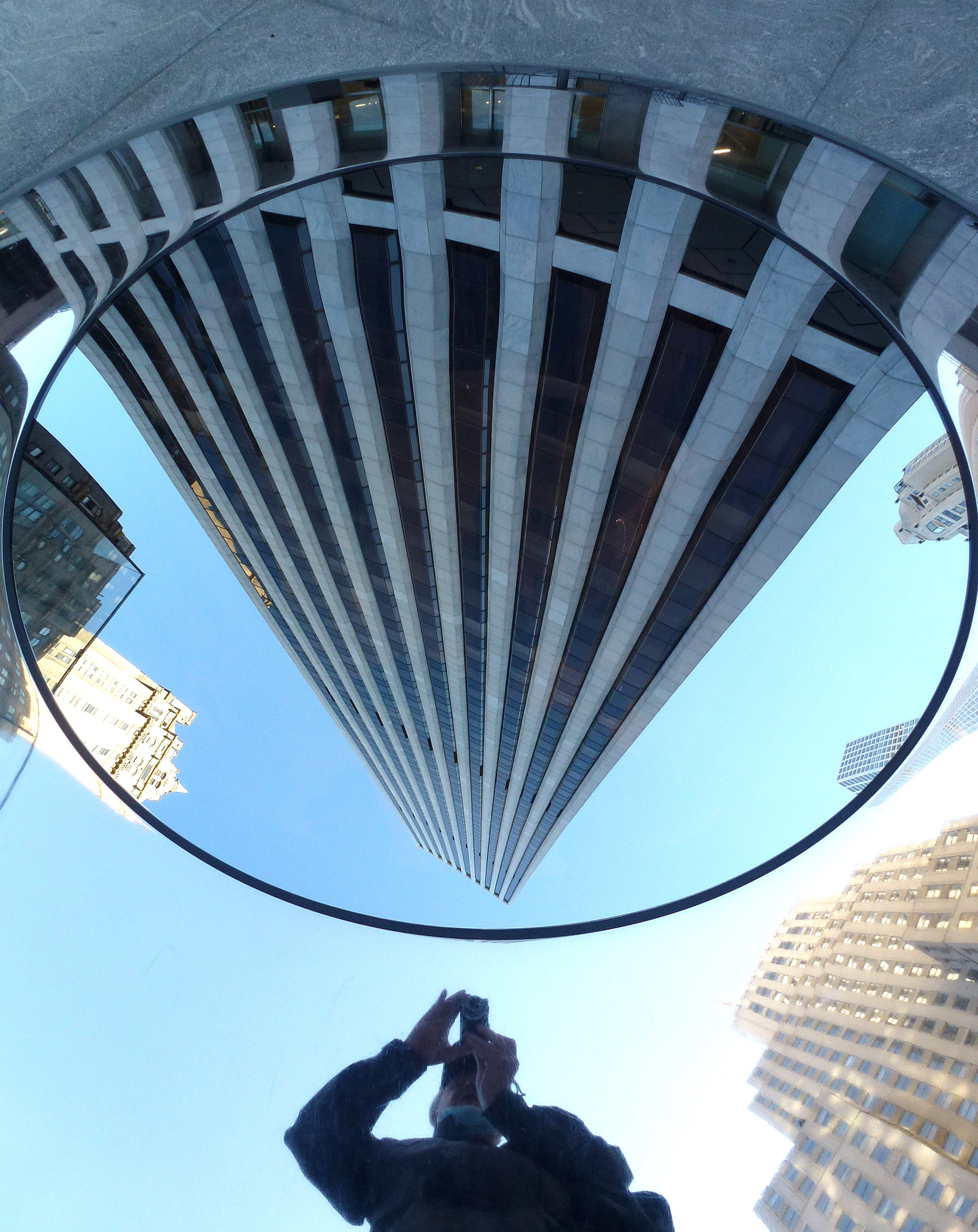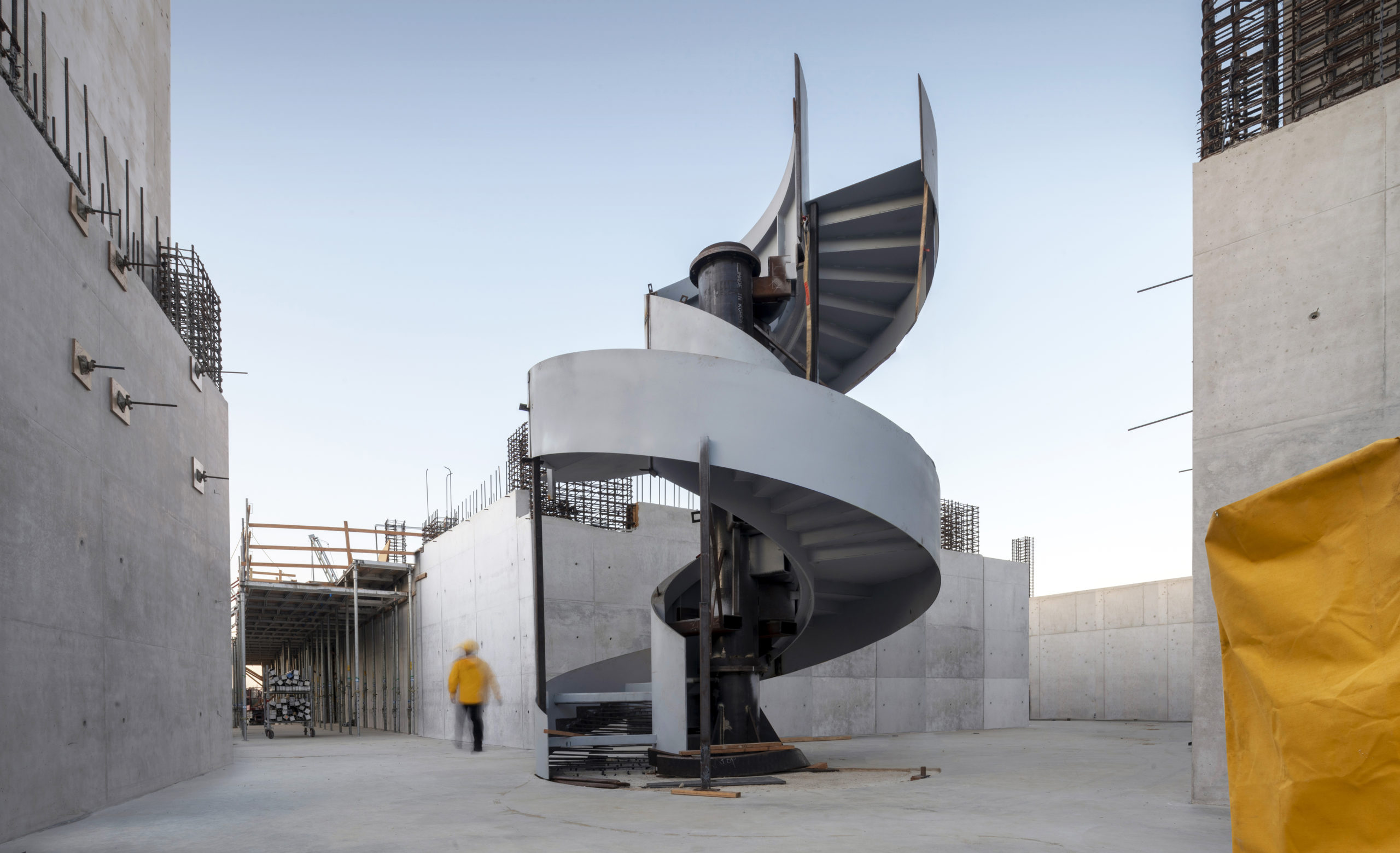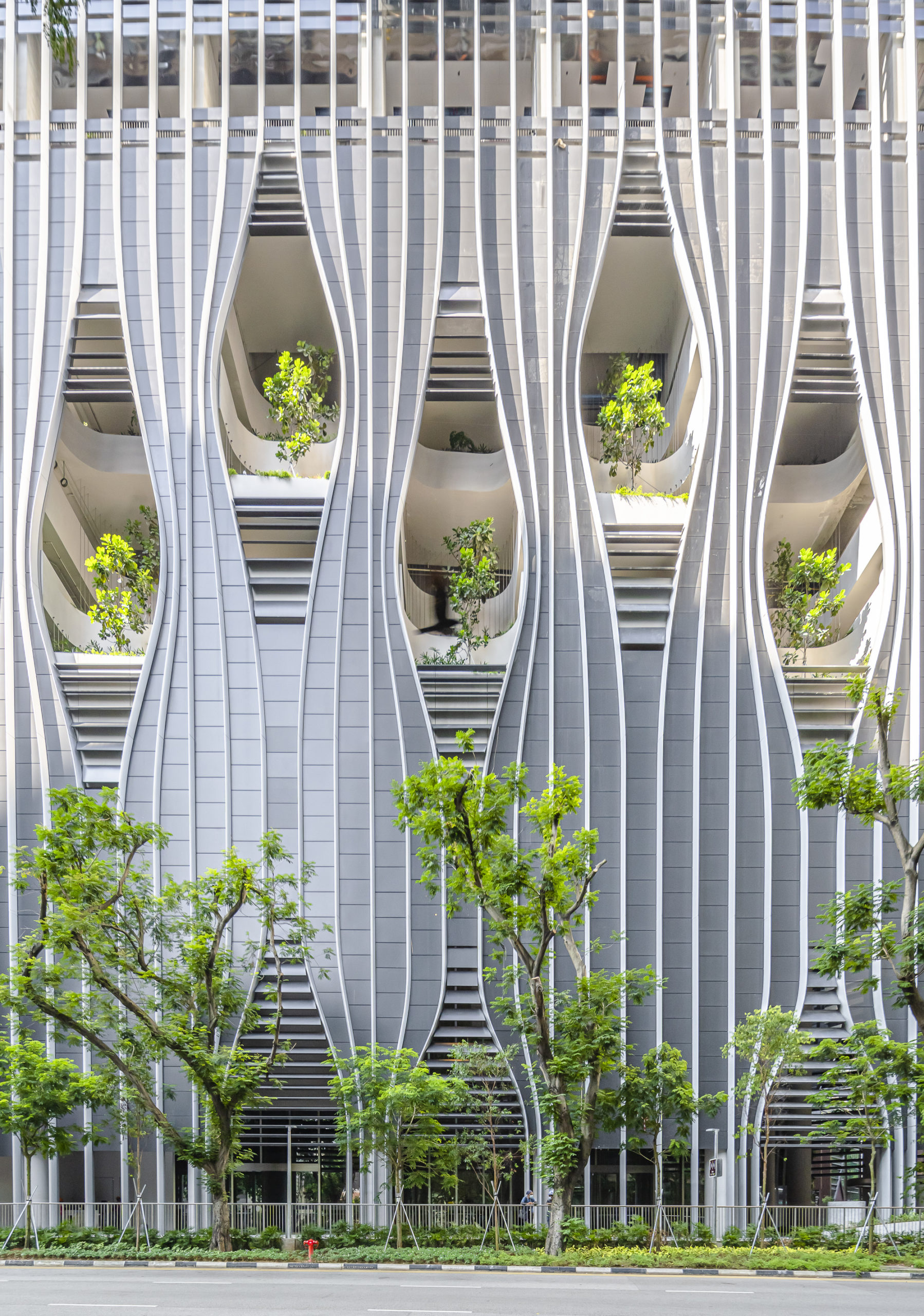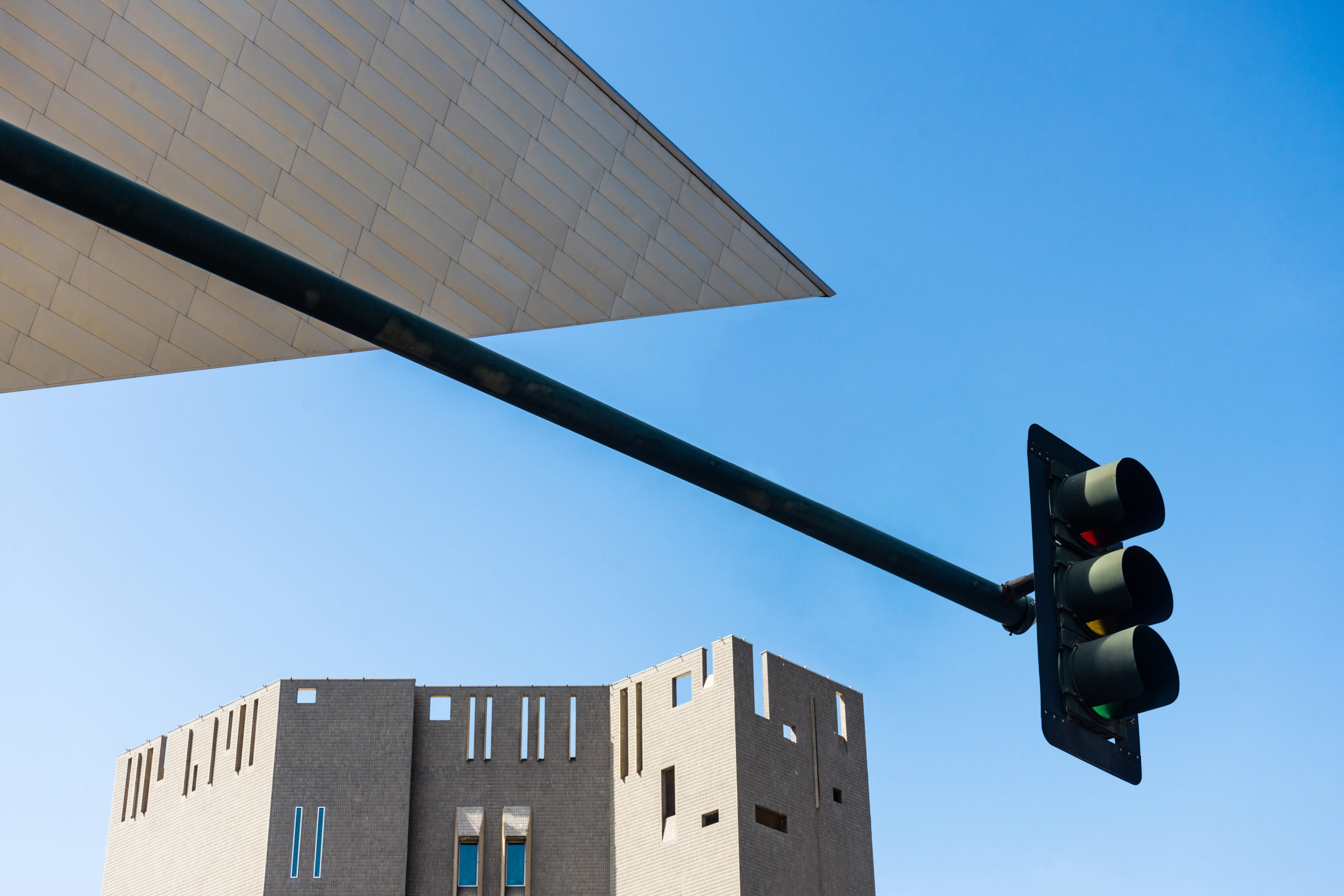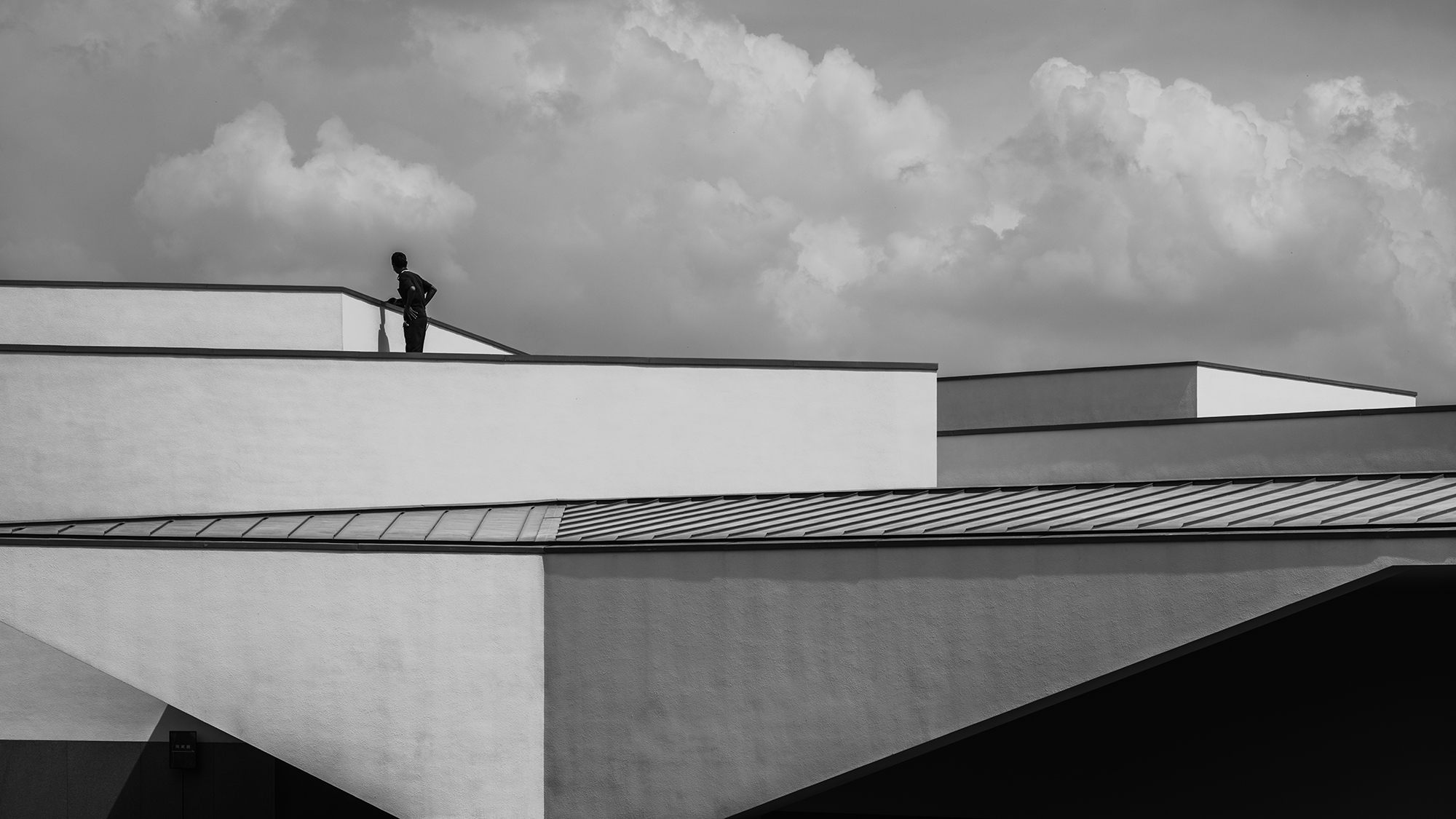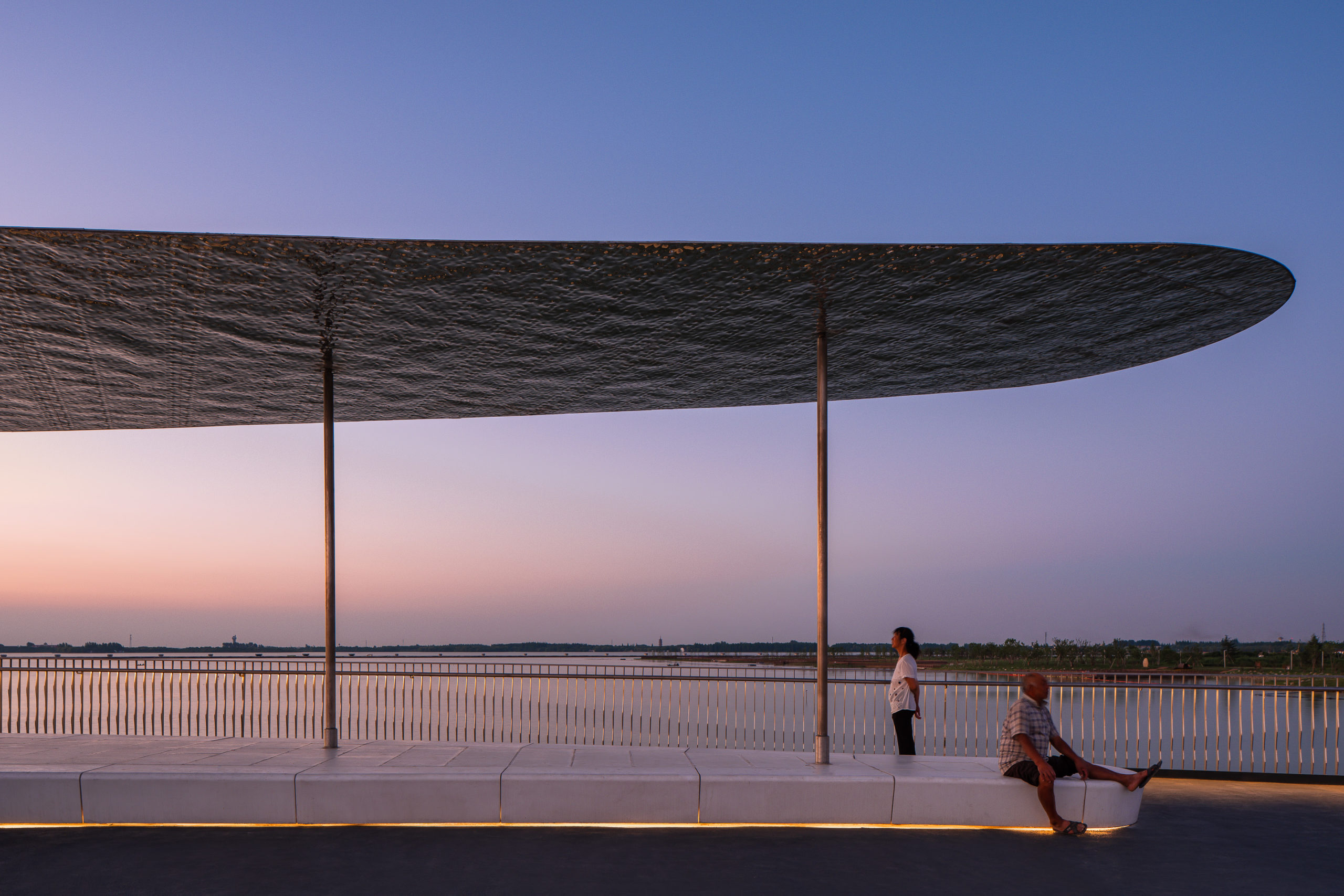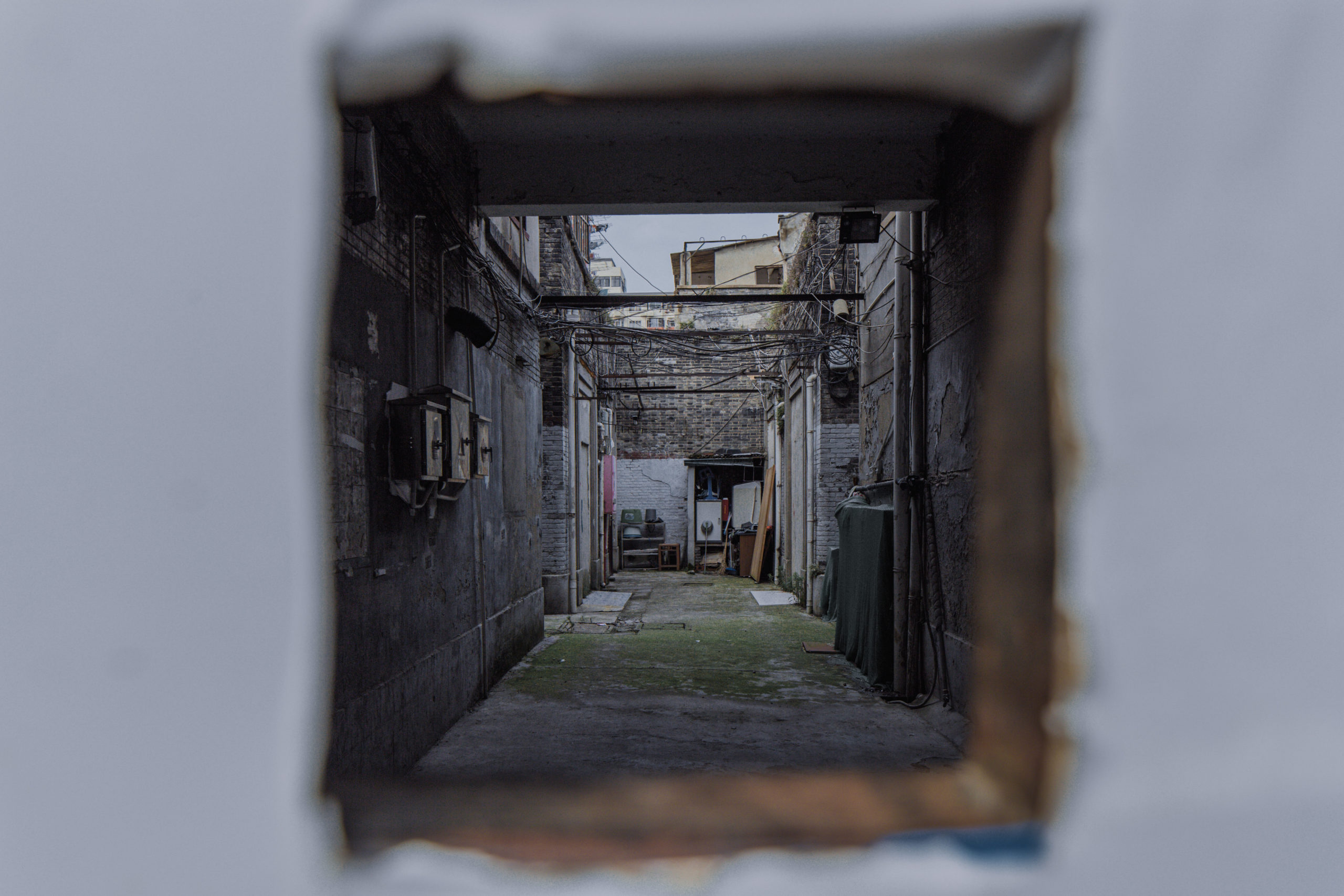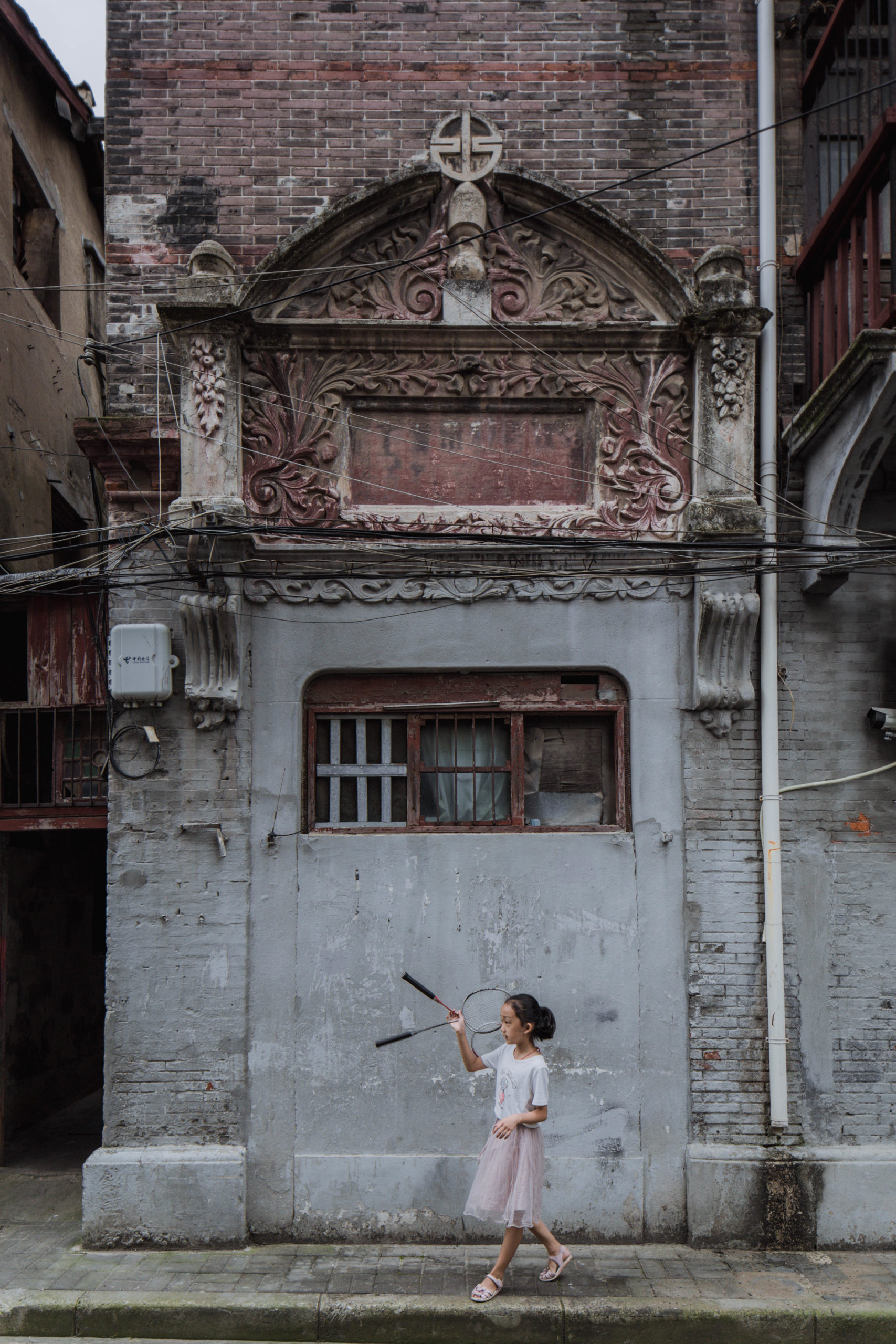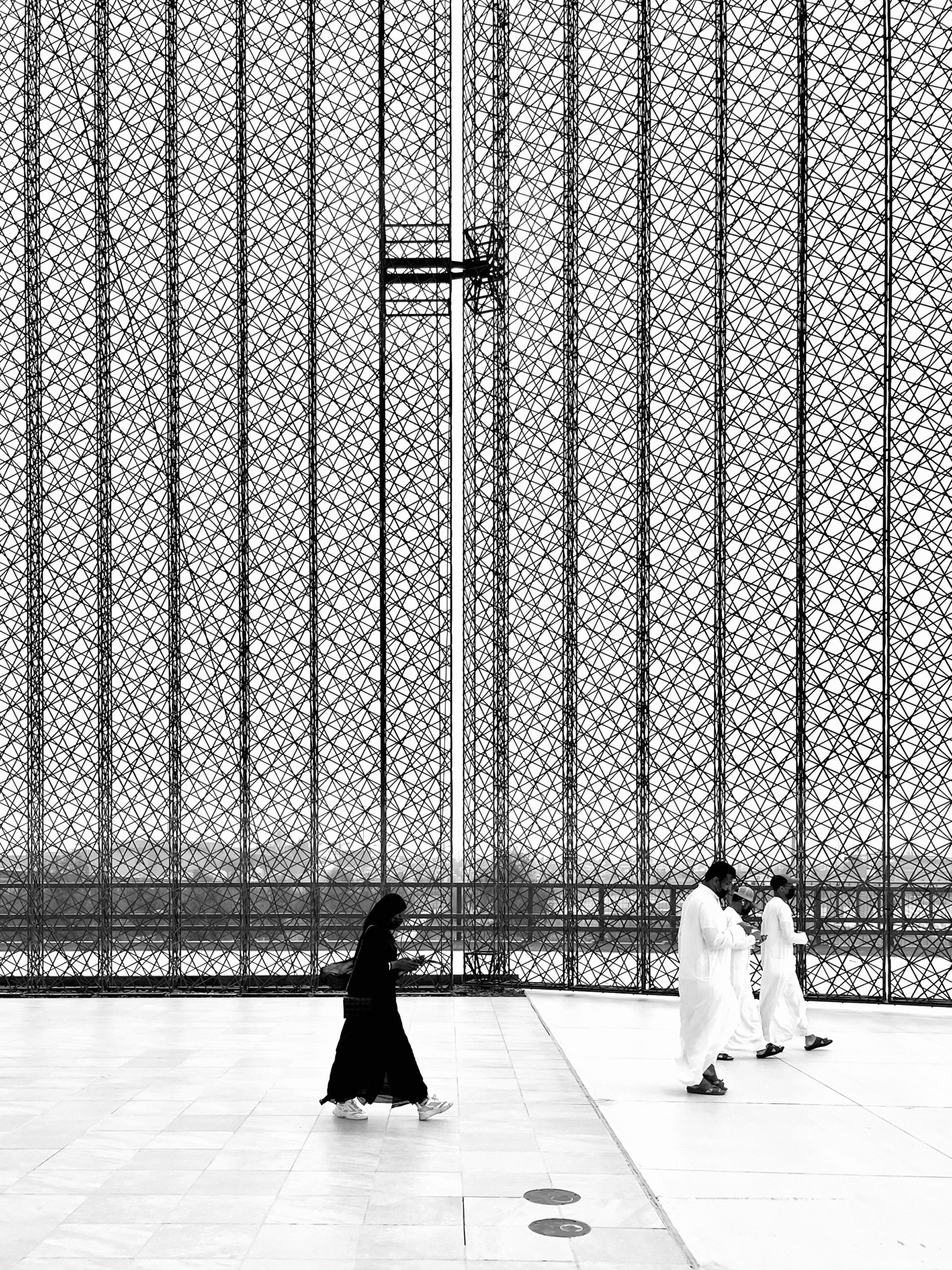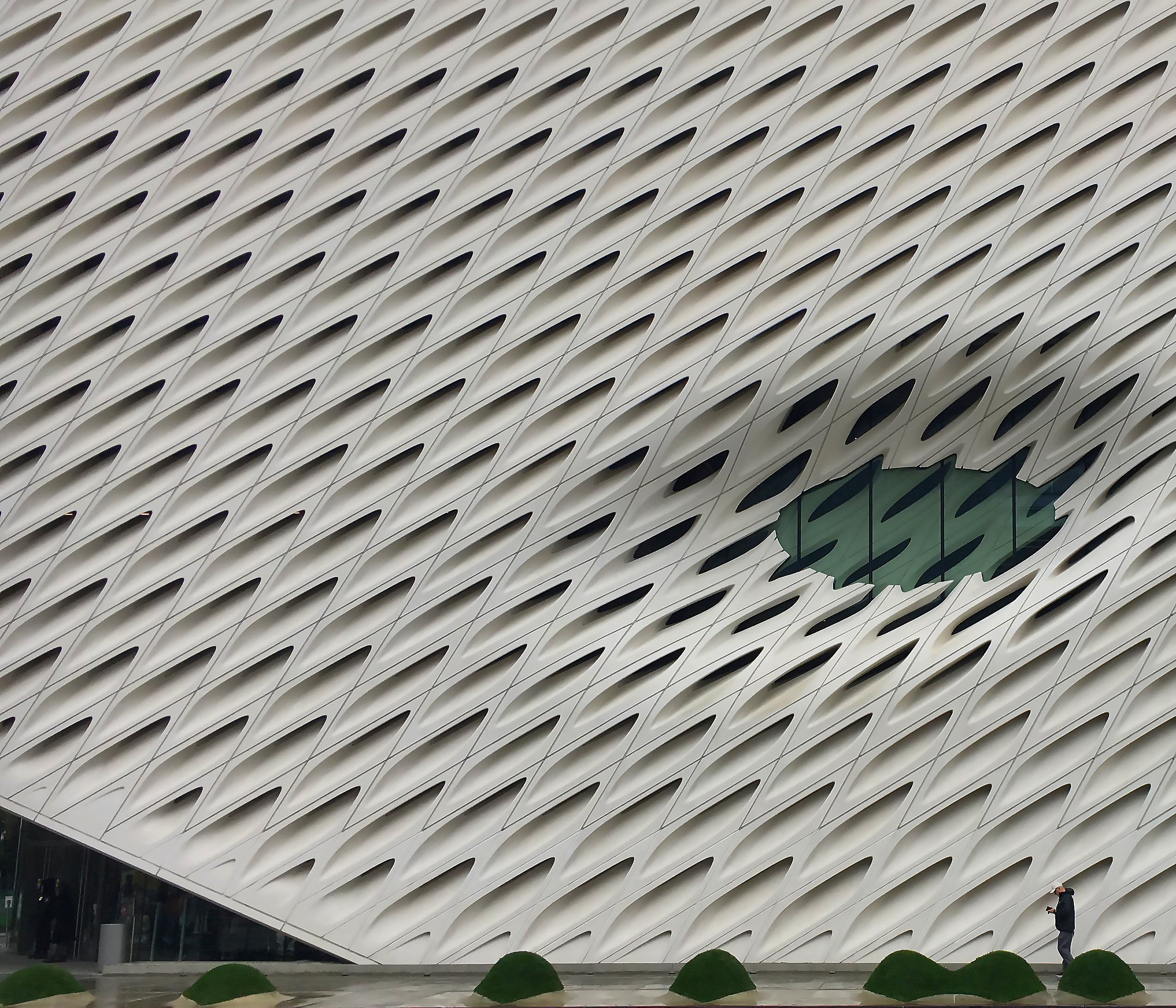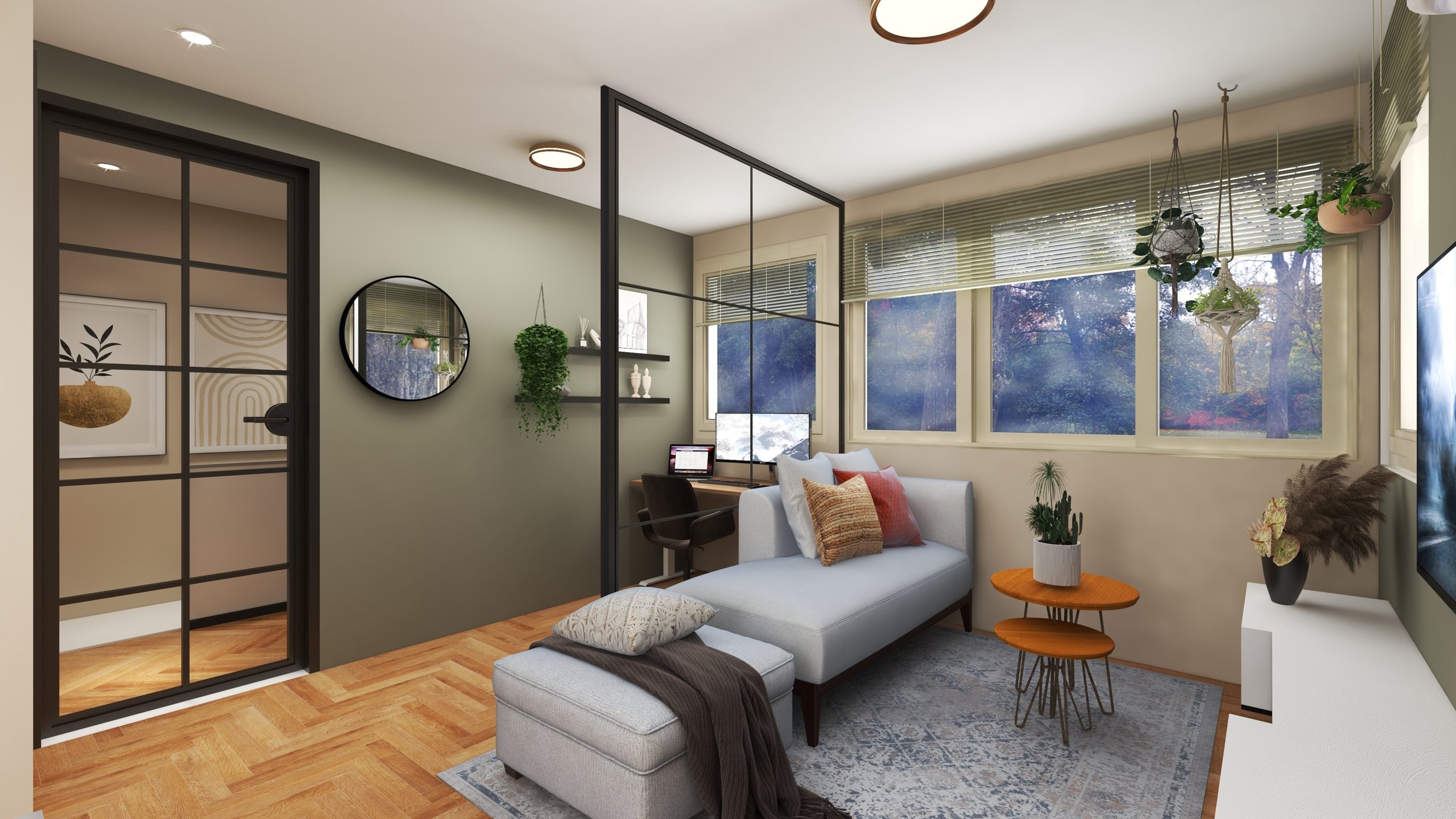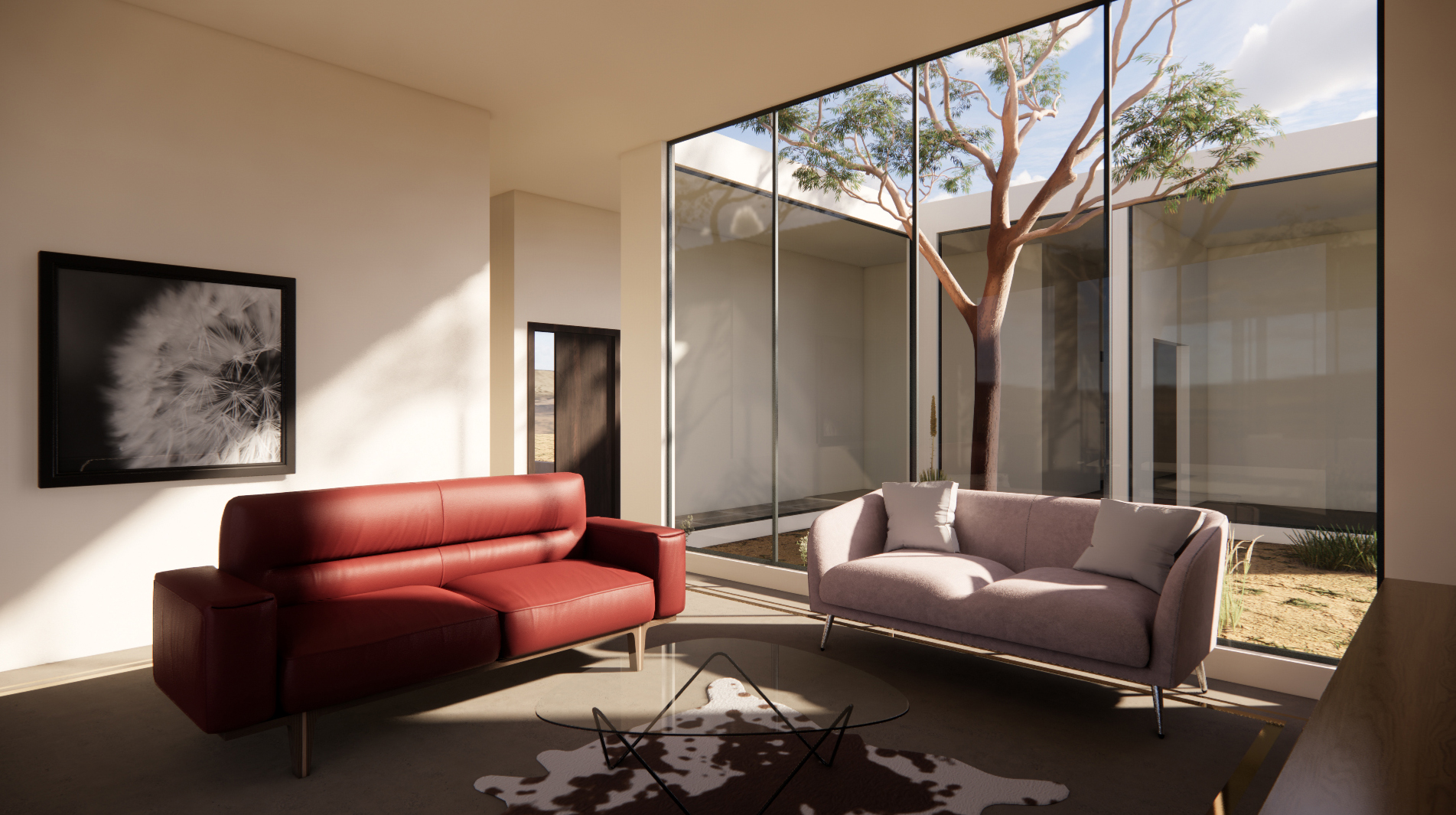One Photo Challenge 2022: The 100 Finalists (Part 3)
Explore a further 25 extraordinary architectural photographs, each one a Finalist in the 2022 One Photo Challenge. Let us know which are your favorites on Instagram and Twitter with the hashtag #OnePhotoChallenge!
“Dreaming While Awake” by Alex Nye
Alex Nye Art
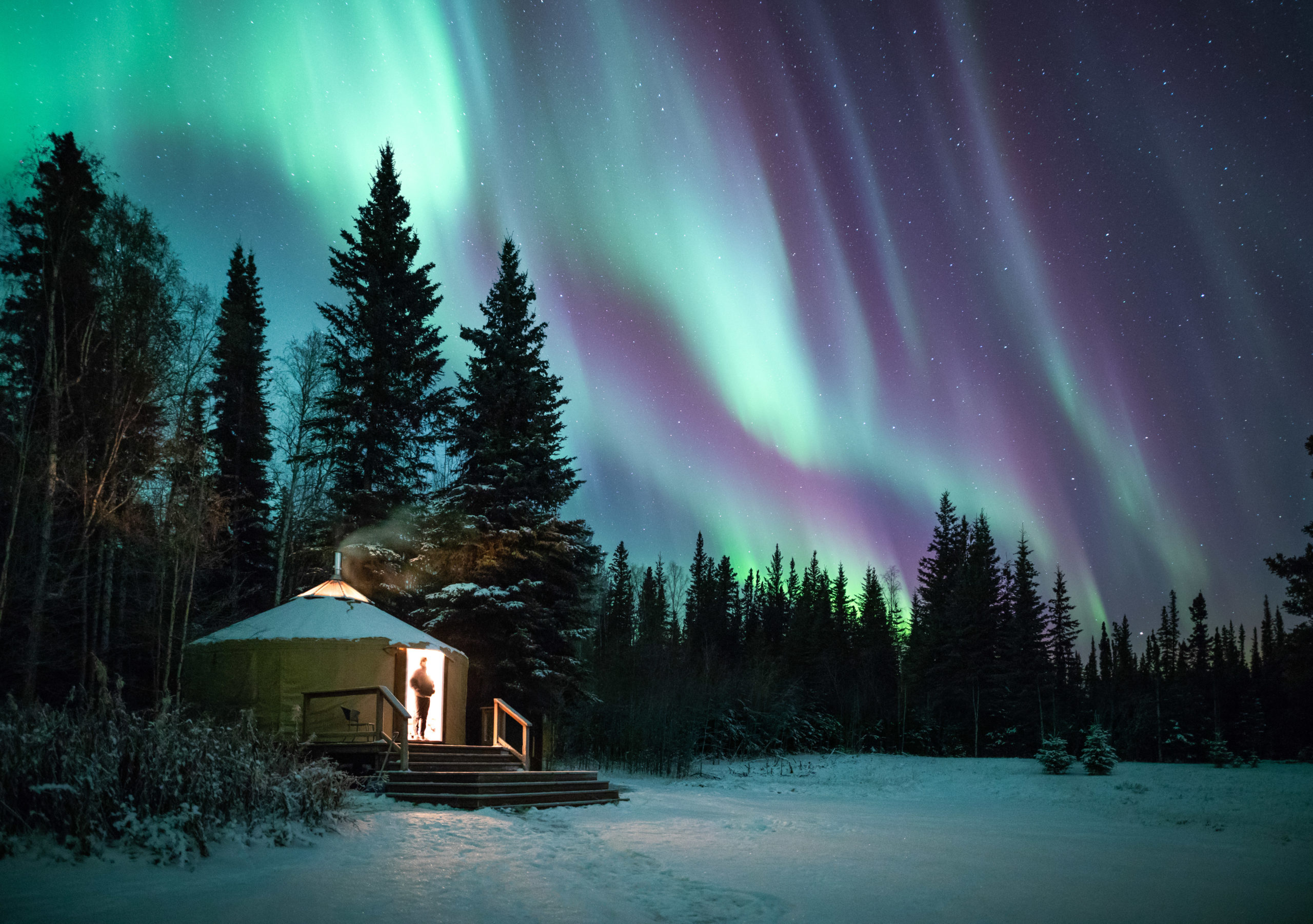
“A man is huddled inside of his isolated yurt in the dead of a frigid night in Fairbanks Alaska. He hears the sound of sled dogs barking in the distance. He’s interested to look outside but doesn’t want to leave the comfort of his cozy wood stove-heated space. Curiosity finally overpowers him. He opens the door and discovers a spectacular dancing aurora above his head. He feels the freezing cold air pour into his hut but is too awestruck to care. He loses track of time just staring at the light show. It’s like a firework show that doesn’t make a sound. Is he awake or dreaming? Is this reality? As fake and surreal as this moment feels, it is a powerful reminder of the stunning beauty that exists in our natural world. But sometimes, one needs to experience discomfort in order to fully appreciate it.”
Camera: Canon
“Guangzhou Opera House” by Yu Liang
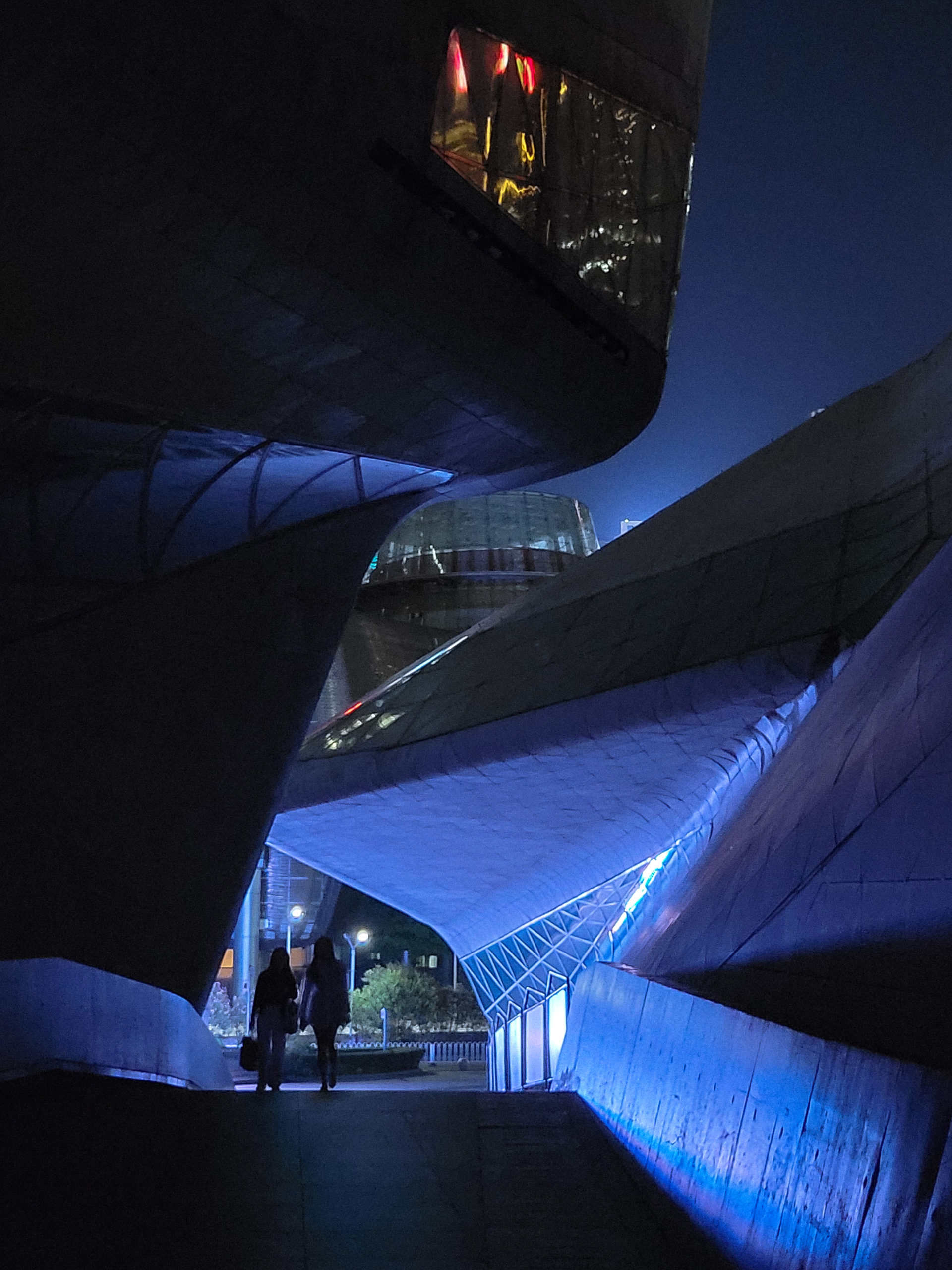
“Two women walked through the corridor of Guangzhou Opera House in the night. There was a kind of mystic atmosphere with the building when the light of an LED screen shined on the wall. It looks like they were walking into a space base. Guangzhou Opera House is located at the city center in Guangzhou City of China. It was designed by Zaha Hadid Architects.”
Camera: Samsung Galaxy
“Dreams come true – MüPa, Budapest” by George Palkó
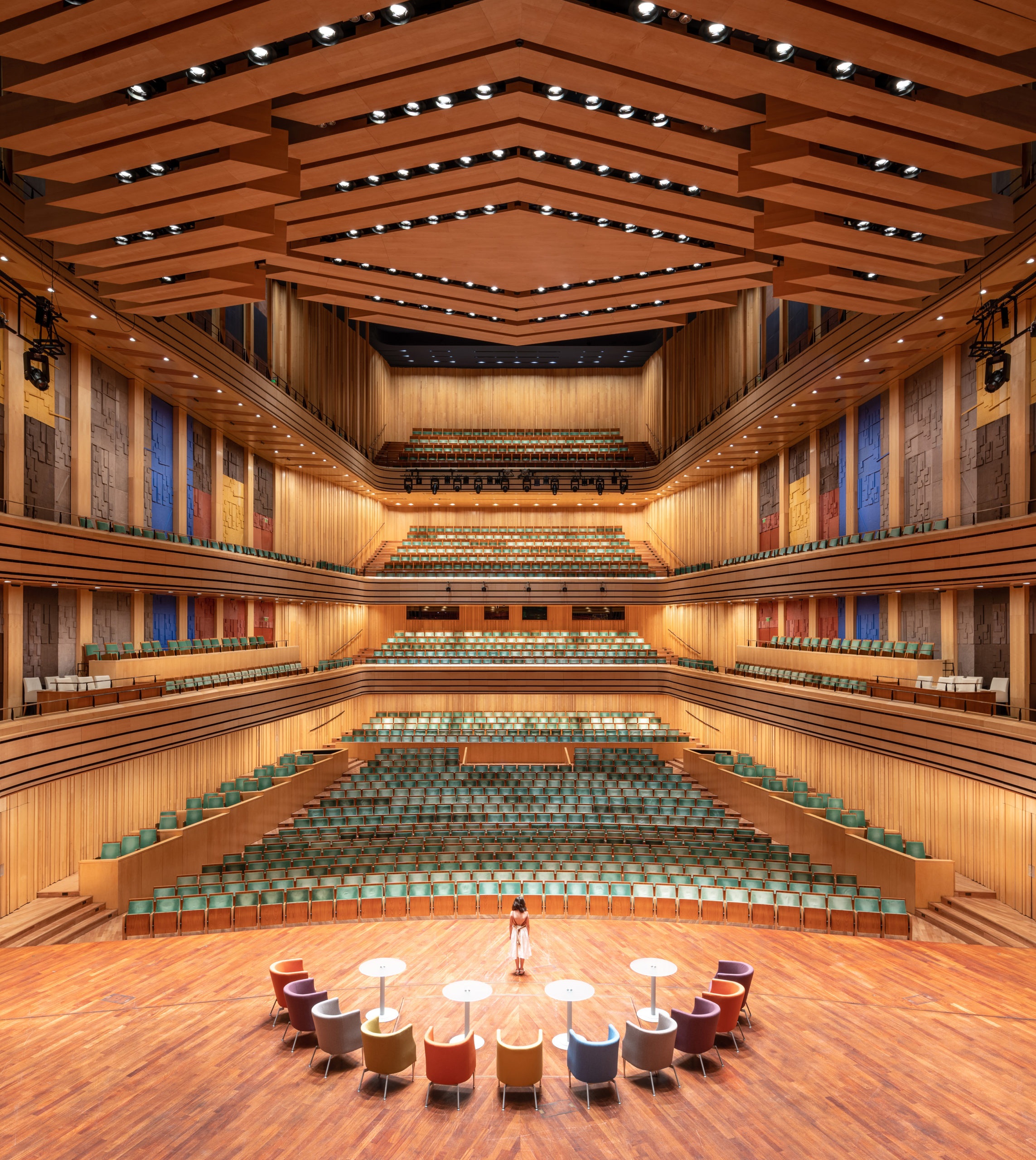
“This is the main concert hall of MüPa, Budapest (HU). I photographed the building for my first book – Budapest Architecture 2000-2020 – , and this image ended up on the cover of the book. You can see my little daughter in the middle of the stage, what makes this photograph my all time favorite for me. She accompanied me on this photoshoot and I could gave her the chance to feel the atmosphere of a huge concert hall from the main stage. She just stood there for a couple minutes and then she started to dance… (Her dream is to become a famous ballerina.) This makes that photoshoot unforgettable for me.”
Architect: Gábor Zoboki – ZDA Architecture
Camera: Nikon
“Nostalgia” by César Belio
Cesar Belio
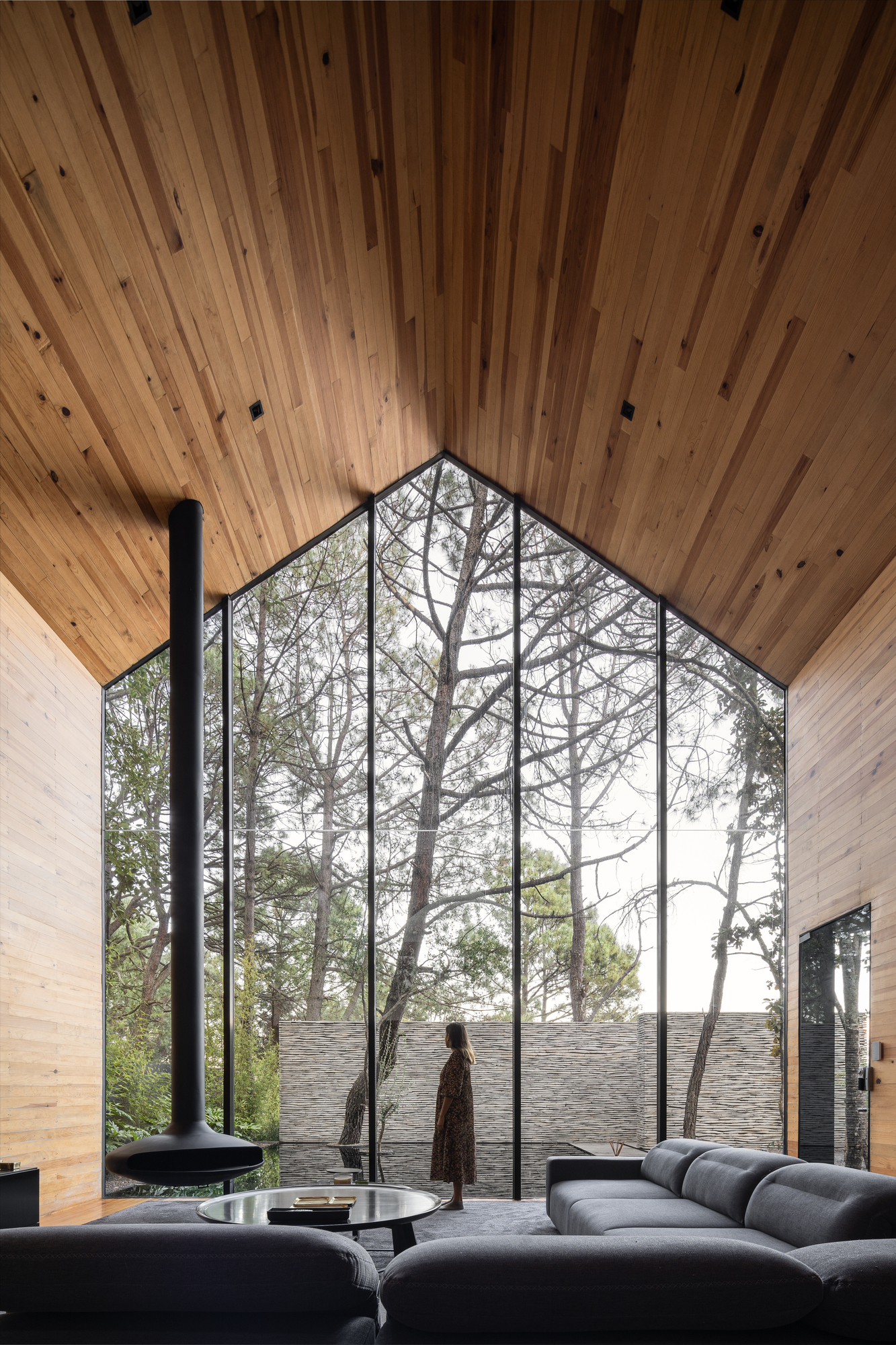
“Immersed in a forest of oak and pine trees, the house is protected by a wall of local flagstone, which separates the garage from the rest of the residence. The singularity of the formal language of this house is inspired by traditional Japanese architecture, designed in a single volume of apparent geometric simplicity where family activities are housed.
The protective vocation of the complex is evidenced through the use of wood as the main material, which in the interior is natural pine, covering floors, walls and ceilings, which generates a feeling of warmth, comfort and nostalgia, leaving a single opening that maintains a constant dialogue with its surroundings and is accompanied by a mirror of water that helps to enhance the essence of the place.”
Camera: Sony
“Reaching for the morning light” by Hugo Lütcherath
Hugo Lütcherath Photography
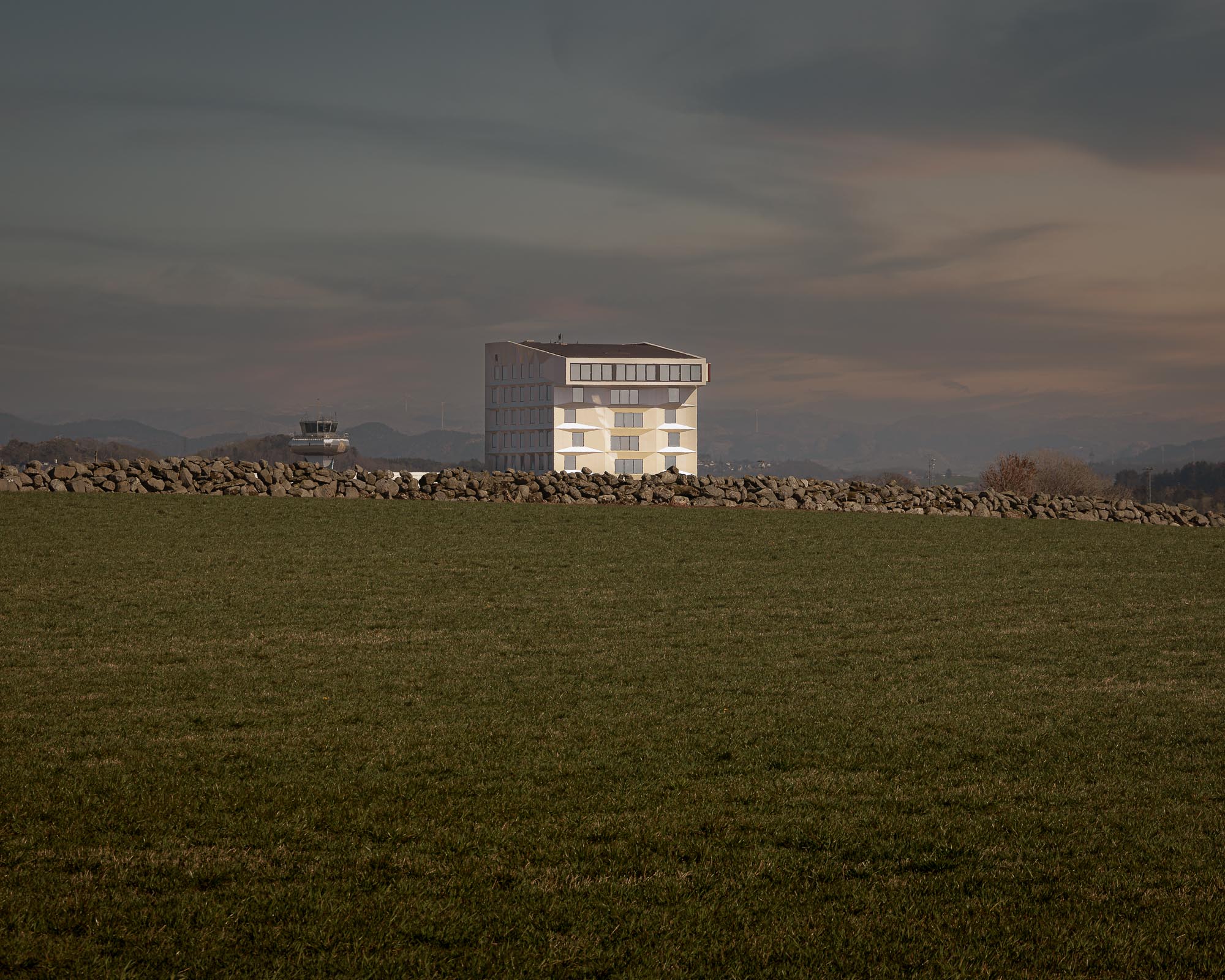
“I came around a bend, and there it was.. Playfully looking over the ridge together with it´s friend. It was reaching for the morning light, looking to see if the new day was bringing something good their way.
So I made the picture…”
Camera: Canon
“Portal to the World” by Matthew Buchalter
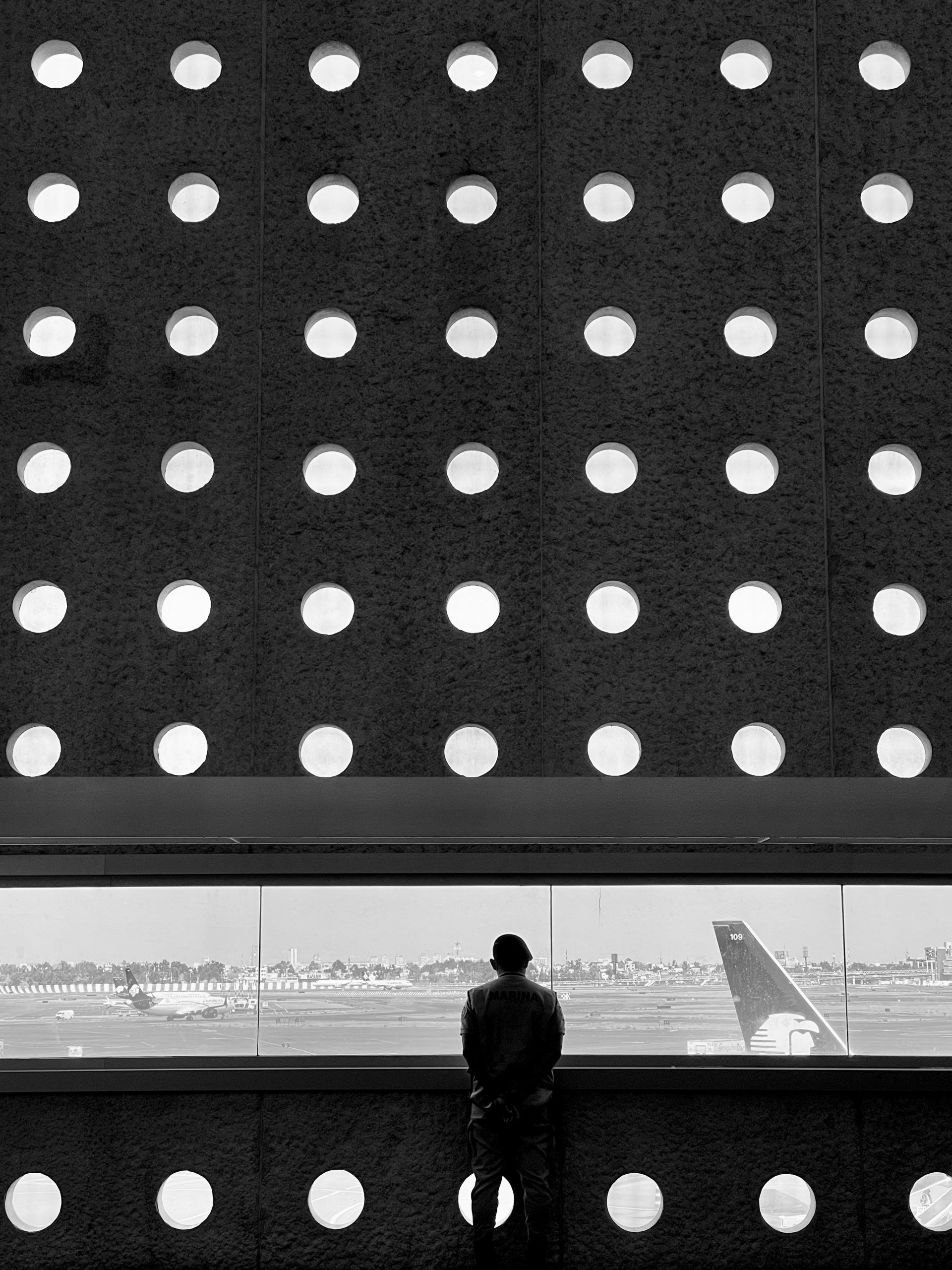
“Architecture helps us separate the internal from the external, the finite from the infinite, the actual from the theoretical. This traveler at the Mexico City Airport reminds us how confined we’ve all been these past two years and how cut off we’ve been from each other, while allowing us to imagine what might be. I like the idea that he takes a moment from his routine journey to contemplate other pathways he might follow. The portholes, perfectly arranged glimpses of the world beyond, capture the feelings of entrapment at the airport, while the large picture window reminds us of the infinite possibilities that airline travel allows.”
Camera: iPhone
“Less laws, more freedom” by laetitia Khachwajian
Architectural Association school of Architecture
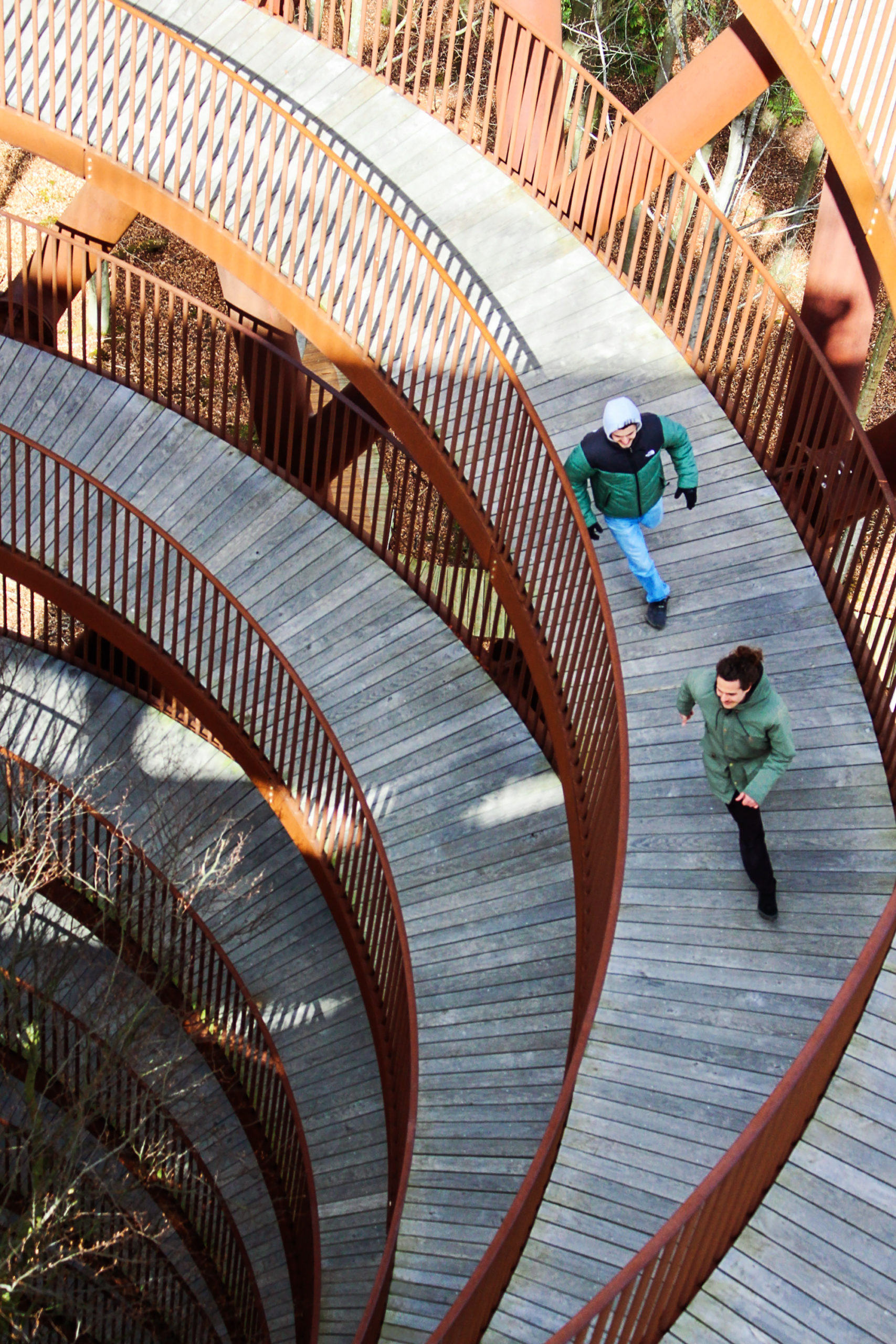
“I’ve had a fascination in seeing buildings not as static, yet as a moving expression, as a playful language awaiting for interaction with the wind, light, and people. Oftentimes there is a misconception of architecture being characteristic of rigidity, differentiation, but there is life between buildings, in its essence and how we interact with it which has the power to break these barriers.
This intimate moment of two brothers chasing each other I captured at the forest tower in Denmark reveals the raw emotion of release; of purity and the adrenaline that comes from letting go in the arms of the structure. Located in the middle of nature, the continuous ramp allows for escape from the laws and noise of the city and provides a more inclusive, accessible sensory experience of freedom. The rhythm in the vertical patterns of the railings accentuates fluidity, translucency and harmony between architecture and oneself.”
Camera: Canon
“A Song Dedicated to Cangshan Mountain” by Terrence Zhang
Terrence Zhang Photography
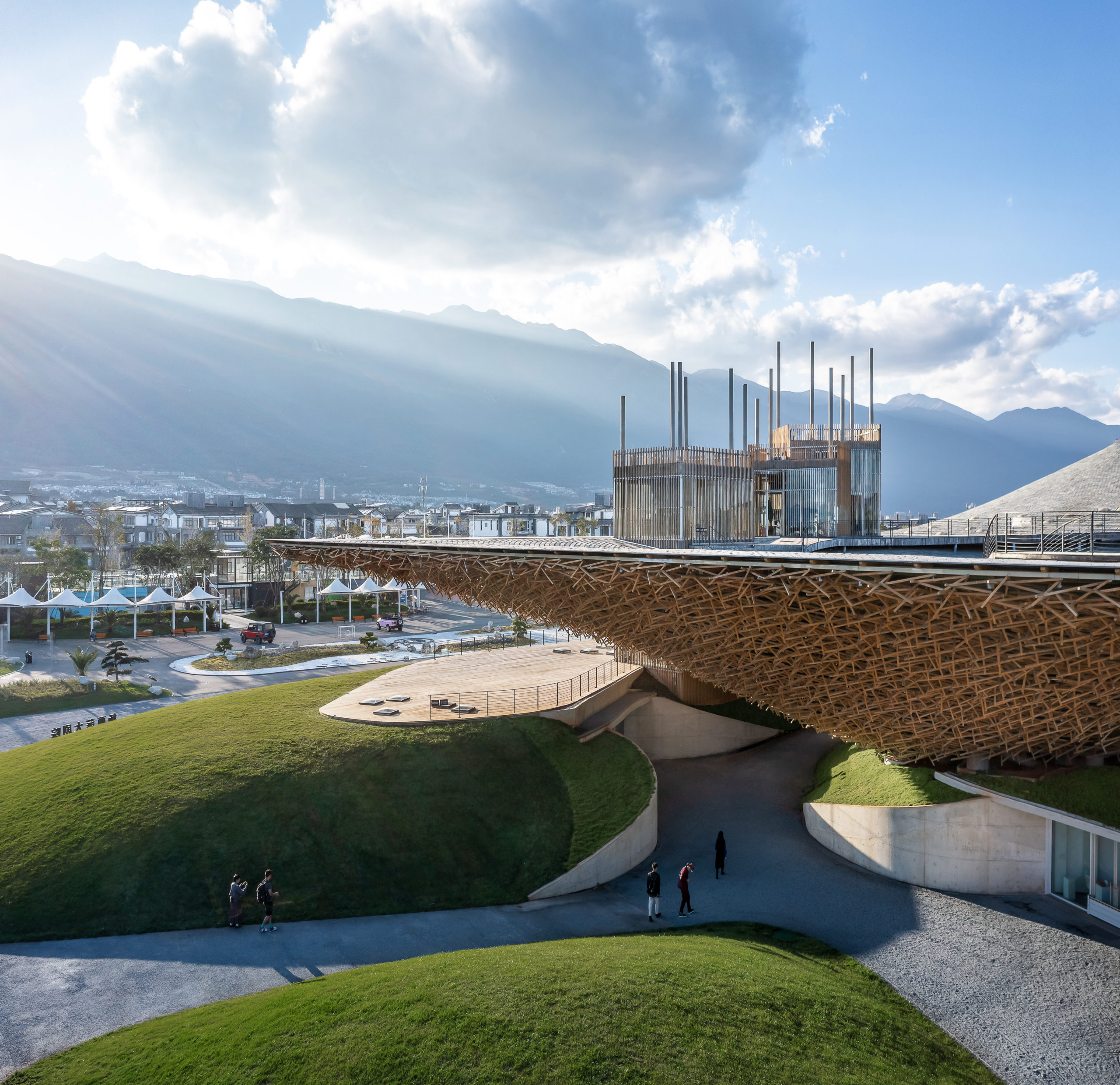
“The Yangliping opera is located in the artist’s hometown, Dali city, Yunnan province. The architecture itself is like a symphony which composed for local Cangshan Mountain. The near is hills and lawn, to the far is the famous Mountain, height of 4000 meters. As a reflection of the mountain and Erhai Lake, Yangliping Opera, immersed in the sunshine, is opening her arms to welcome citizens who coming for joy, leisure and arts appreciation.
Yangliping Opera is one of the most breath-taking completed architectures in domestic China during recent years. The opera is always open to the public except only its interior stage. The outdoor area forms into an open view platform, which can be also used for a stage for performance.
In this photo, photographer carefully captures lights to make the opera visually elevating from sunken plaza, creating an inner connection among the opera, visitors and nature.”
Camera: Other
“The Weekend House – By Knut Hjeltnes Arkitekter” by Mark Elst
Mark Elst Photography
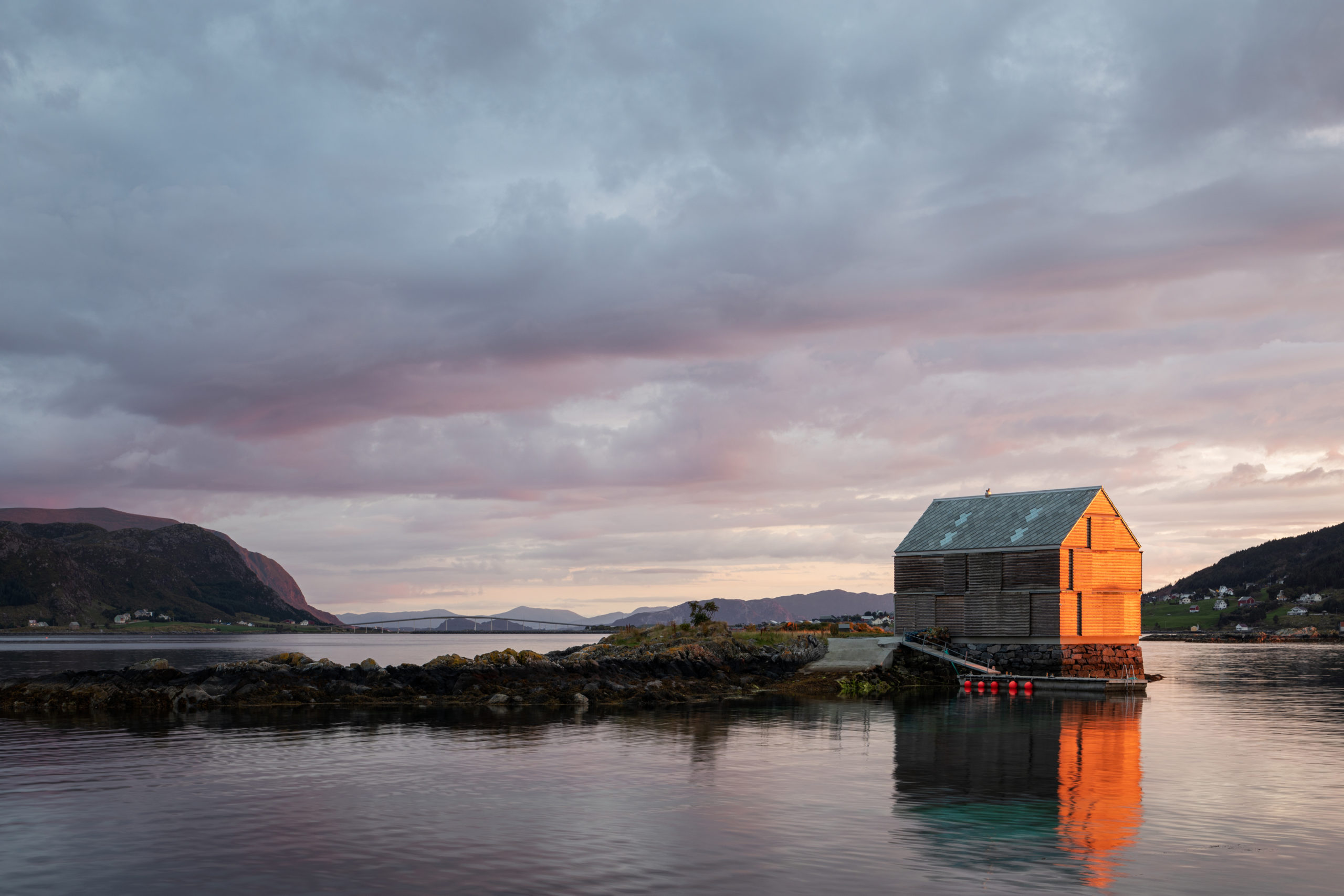
“This photo of the ‘Weekend House’ (also shown in Netflix’s documentary “Most extraordinary homes” is photographed for Knut Hjeltnes Arkitekter. Situated on a small island from the coast of Remøy.
The Weekend House is a modern interpretation of an old fishing hut. Captured during a late summer evening with a vary dramatic sky and a low sun rays that creates a focus on the house and shows a reflection in the water.”
Camera: Canon
“BEYsometrica” by Peti Lipták
BPLA
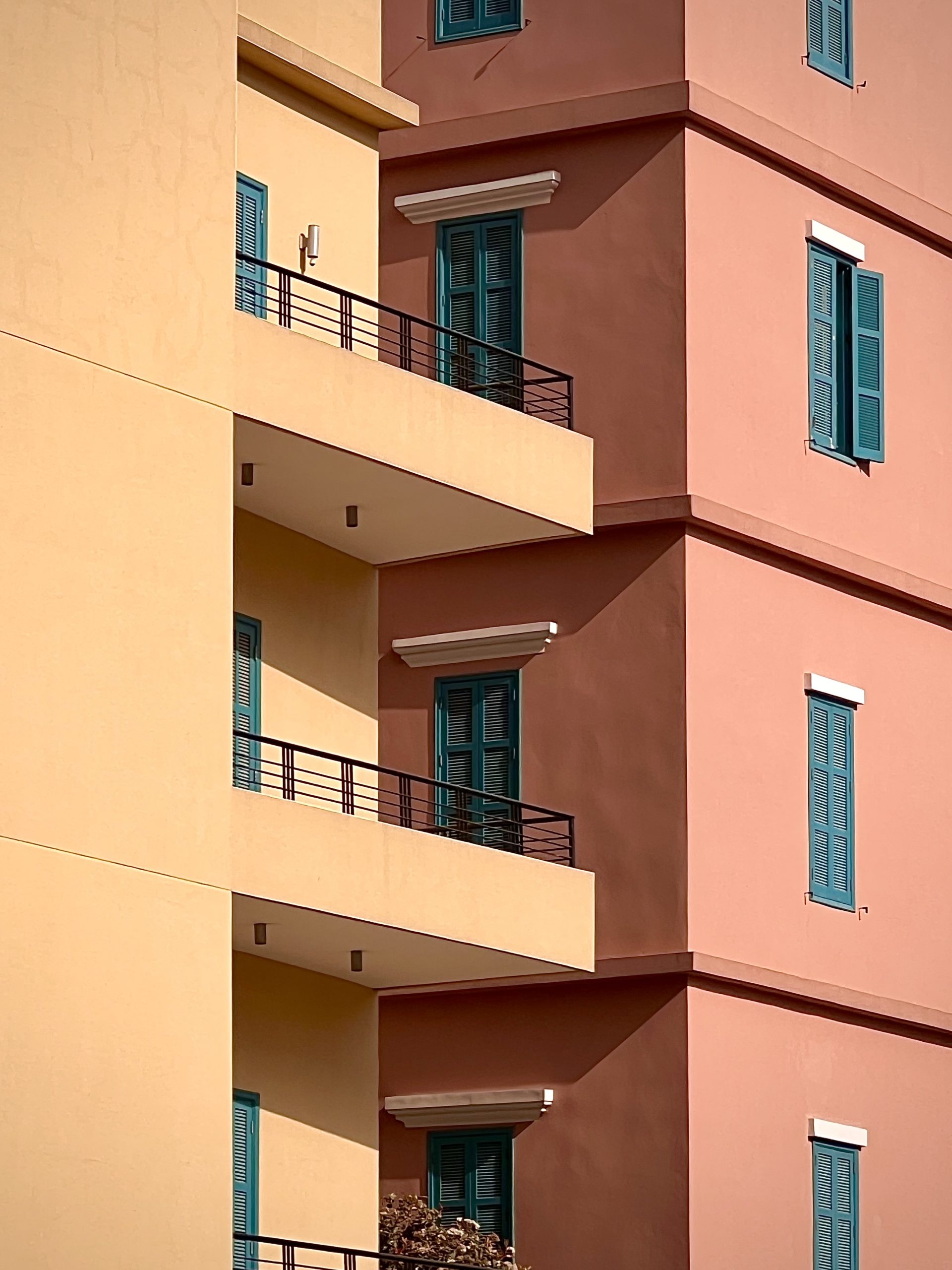
“Beirut went through a lot of things lately, but as Lebanese people, we always have to see the best in every situation. Beautifully renovated buildings, amazing colours and hopeful vibes are all around — marking the next chapter of the city and it’s effort to put its darkest day behind /4.8.20/!”
Camera: iPhone
“Arc de Triomphe Wrapped” by Mathieu Fiol
MFL Photo
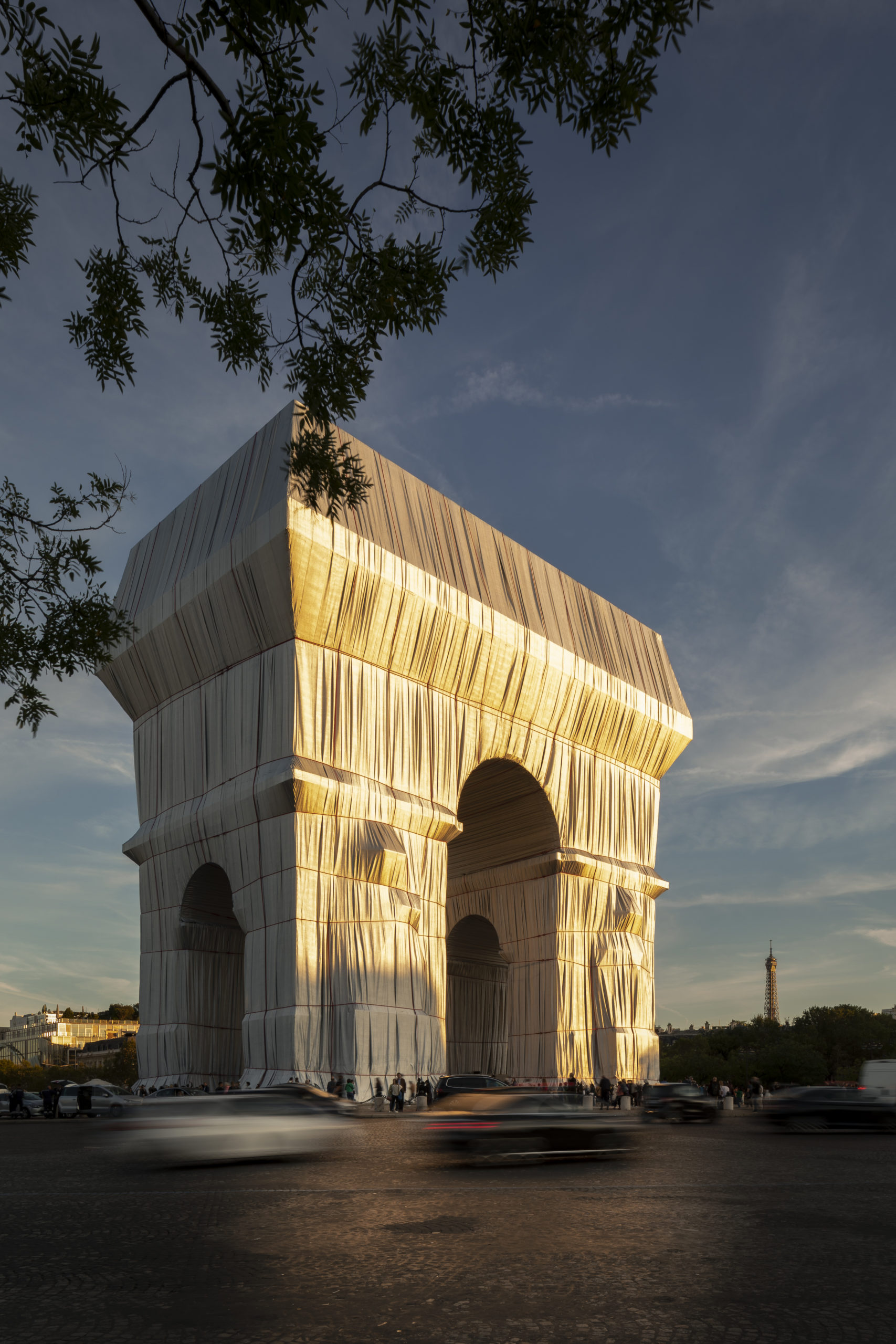
“Being part of history, living it, at the same time, in the same place as it’s happening, that’s what you feel in a big city, where there is always something incredible happening. That time (septembre 2021) was Christo and Jeanne-Claude’s new temporary work: the Arc de Triomphe Wrapped. Even more meaningful because it was Christo’s posthumous work of art.
I went with the idea of capturing the Sunset as the background for my picture. While the sun was going down, and i was turning around the arch, the reflection of the Sun setting on the metallic fabric seemed more interesting and appropriate. As the art installation, that moment too, was temporary.”
Camera: Canon
“To Love Karachi” by Rabbiya Ahsan
Indus Valley School of Art and Architecture
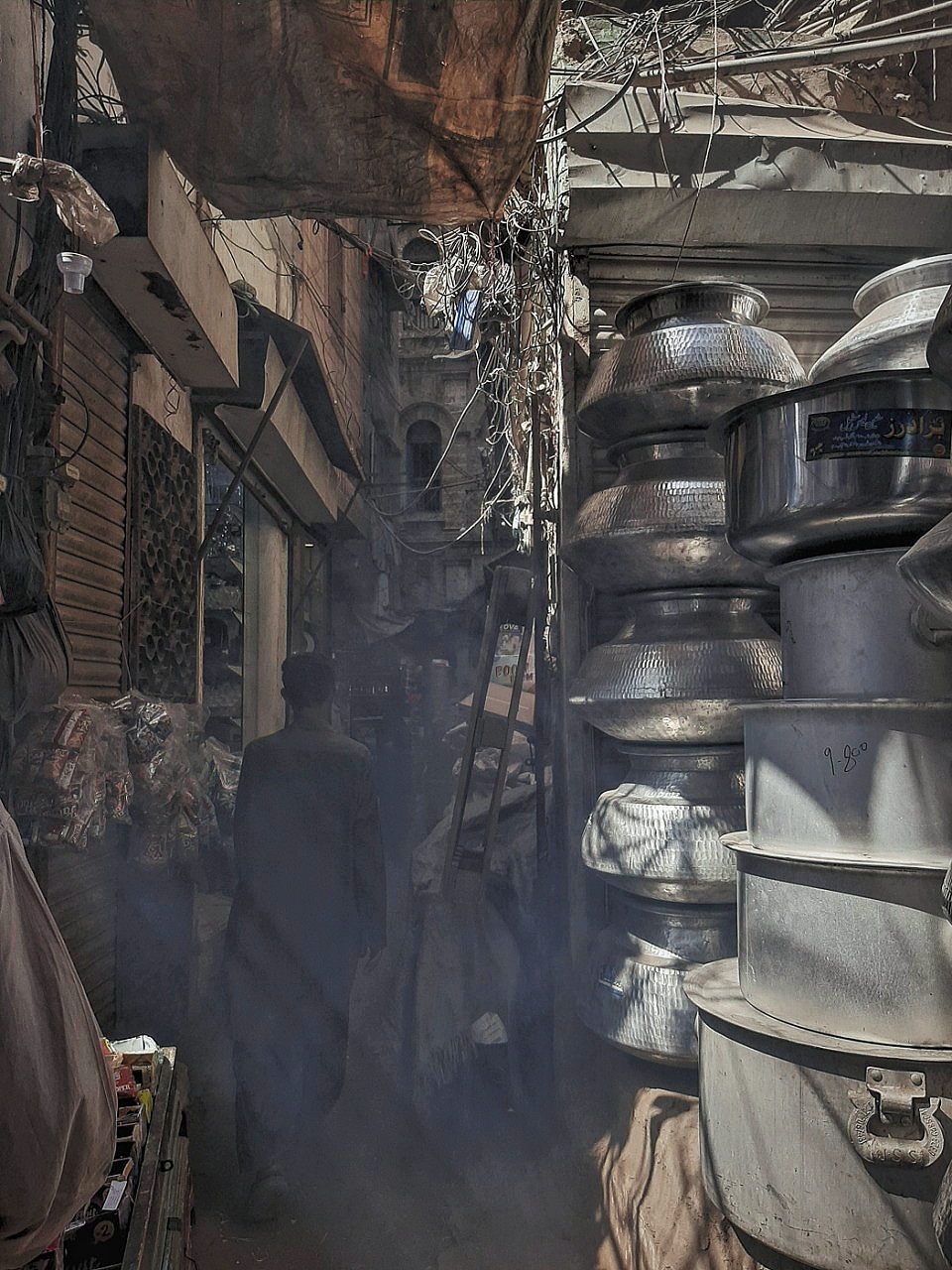
“It is hard to love my city. It is hard to love a city with a tragic story, its constant battles and its broken structure. To love Karachi is akin to loving a broken person, and yet the citizens do it every day. They have held the city’s hand and walked with it through the worst of times. They have sat and mended the city when it broke. And in turn, Karachi has provided them with hope. The dilapidating structures and the polluted markets have become home. Pictured here is Peetal Gali in Saddar, one of the oldest markets of the city which deals in copper. Those who work there in the hot and cold face several challenges, but they still give their all. It is hard to applaud that determination. This city stands tall in the face of turmoil every time. This city is resilient. This city is home.”
Camera: Samsung Galaxy
“Hotel Marcel from IKEA Cafeteria” by Andrea Brizzi
Andrea Brizzi Photography LLC
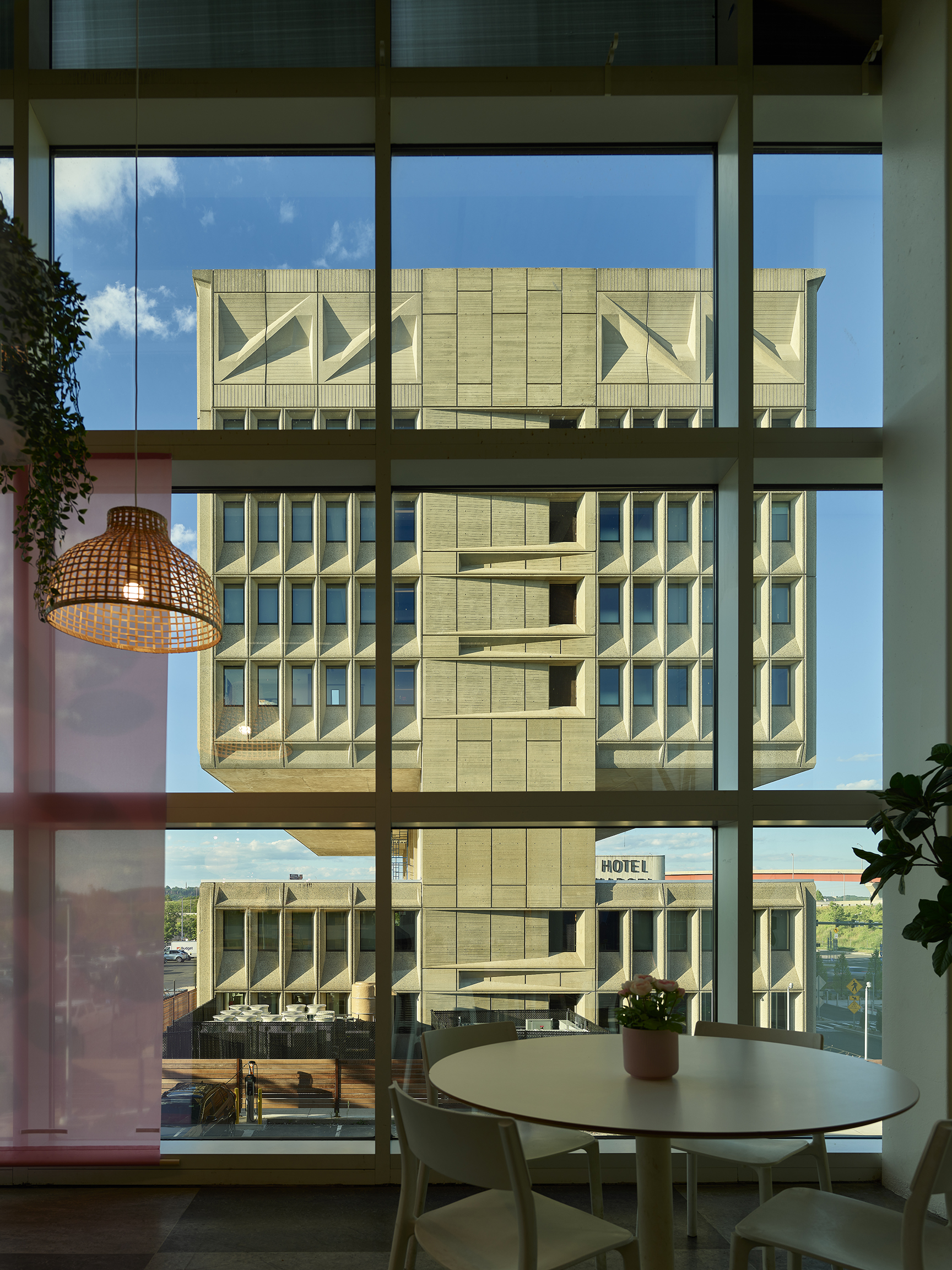
“A case of successful repurposing. Marcel Breuer brutalist building in New Haven, CT, completed in 1970, originally known as the Armstrong Rubber Building, later as The Pirelli Tire Building, now converted to a high tech hotel. It opened this year. The building is listed on the National Register of Historic Places. The picture is taken from the cafeteria of the adjacent IKEA. The camera I use, a PhaseOne XT with a 150MP IQ4 digital back, delivers the highest resolution available commercially.”
Camera: Other
“Thirst for shade” by Valeria Flores
Handel Architects
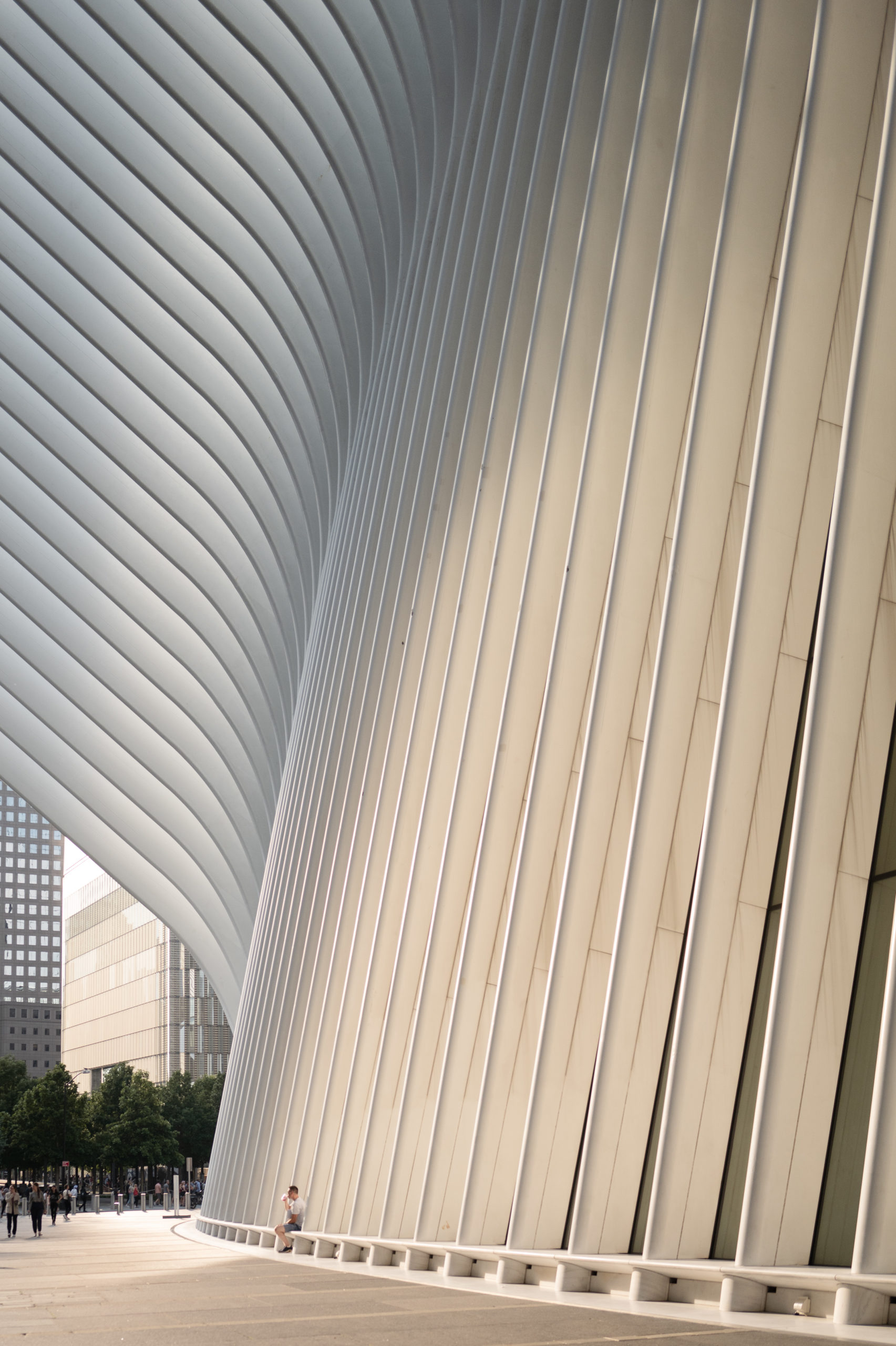
“Summers in NYC are eagerly awaited by most but can also be particularly daunting to the vast majority… With overflowing public transit and towering buildings that reflect back concentrated beams of heat unto unforgiving concrete surfaces, the scattered plazas and public spaces around the city are burdened with a heavy task. Surely, they provide a pocket to break free from the city’s relentless grid but, at times, they fall short to shape an adequate environment for enjoyment. A number of these, with their manicured planting and their lackluster attempt to give some space back to the public, are remnants from a modernist era. Herein, they fail to be a desperately needed oasis for the thirsty citizens of an increasingly warming concrete jungle.”
Camera: Leica
“Loughborough estate” by Rui Nunes
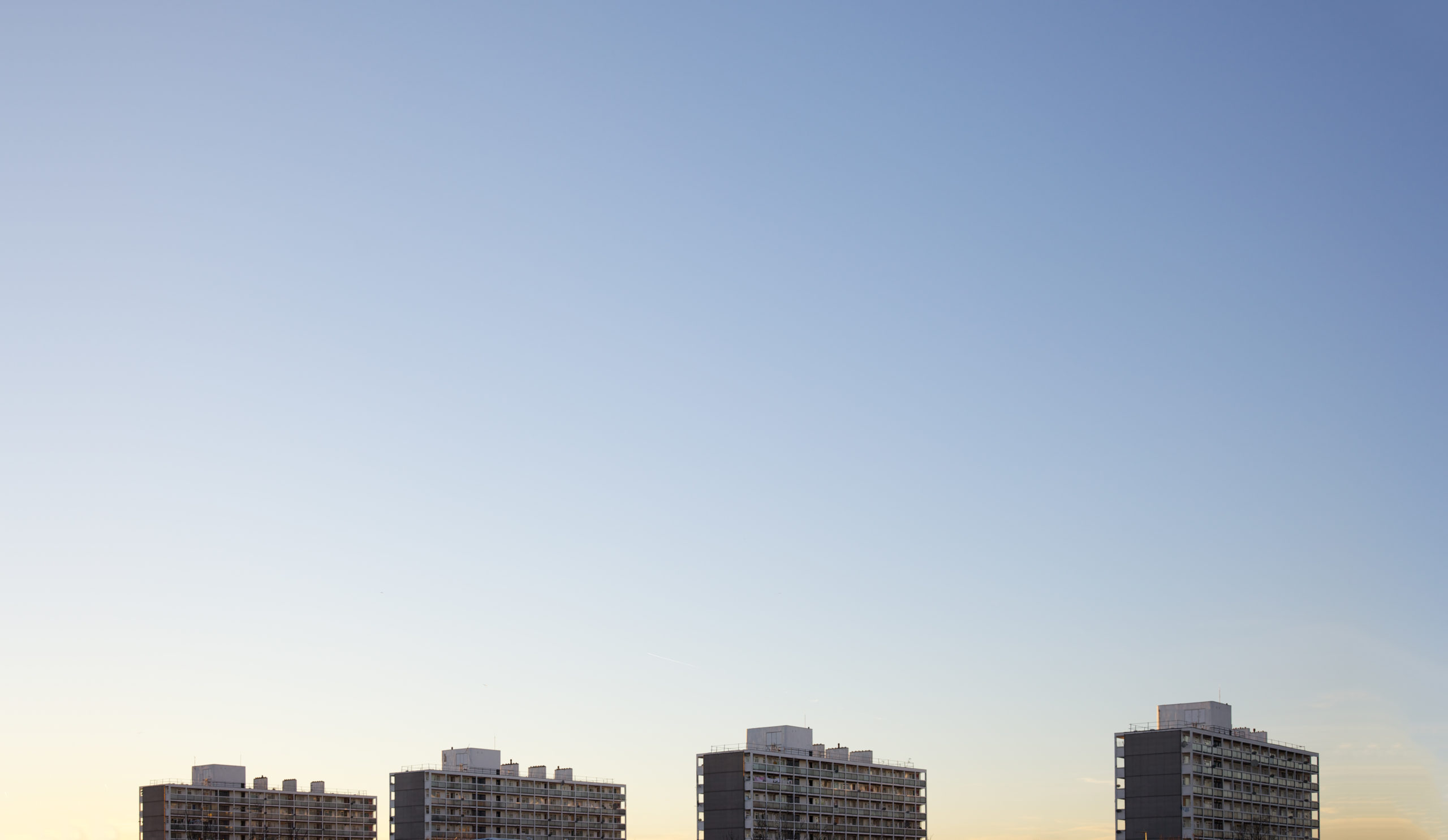
“The photograph depicts a group of 4 slab buildings at the Loughborough Estate in London. These are just one of several post war brutalist housing estates distributed throughout the City. The photograph detaches the buildings from the surrounding urban fabric, allowing them to exist in their utopian Modernist form and obscuring their ambivalent relationship with the context and its inhabitants.”
Camera: Canon
“Parkaden” by Tõnu Tunnel
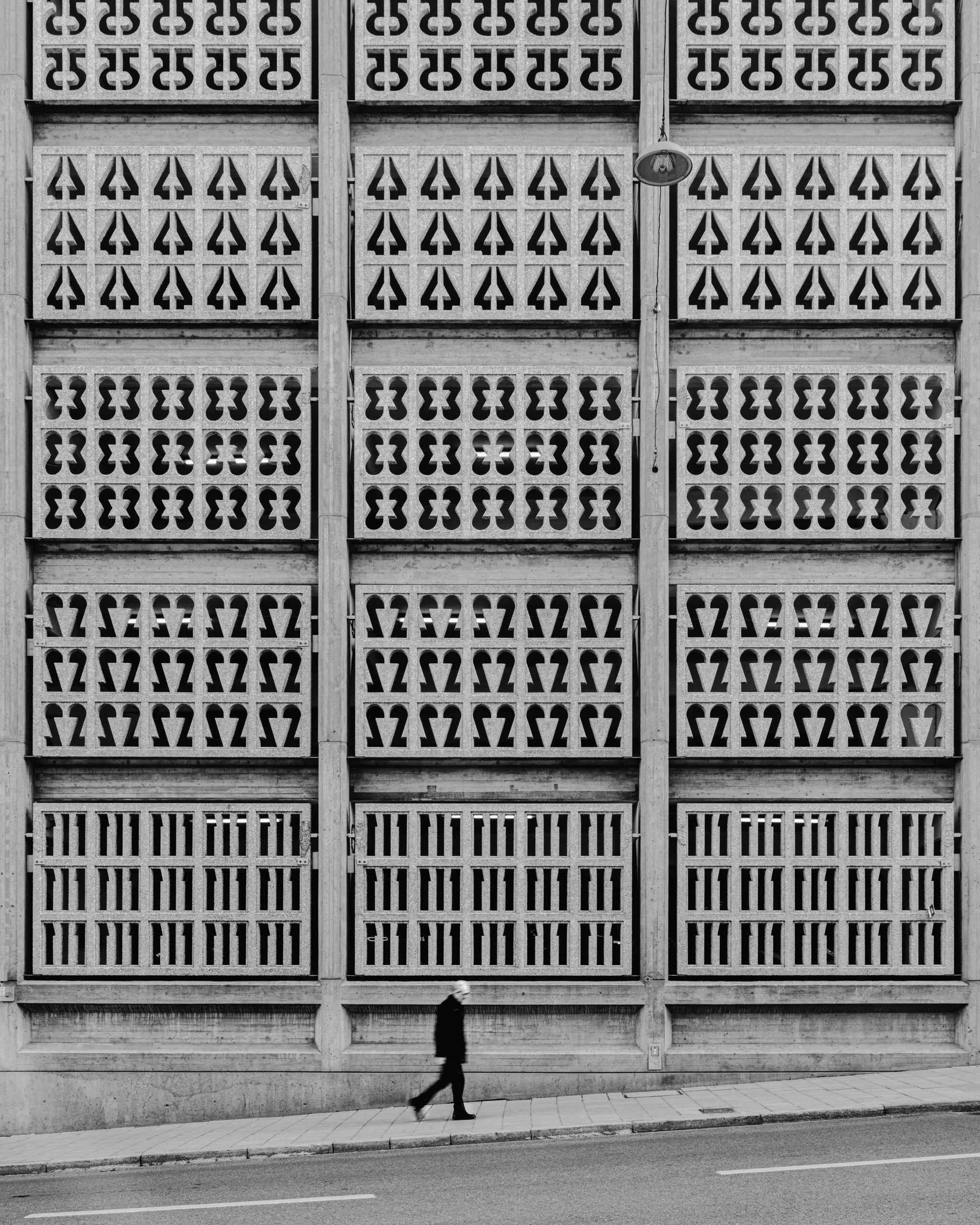
“Parkaden (Car Park) 1964 by Hans Asplund in Stockholm, Sweden
Between a steady flow of cars going through the centrum, there was a 1-2 second moment with this man walking. One of the two shots I managed quickly was this.
It was only later that I noticed that the patterns in the wall are floor numbers in mirror!”
Camera: Fujifilm SLR
“History of Toronto” by William Wong
WILLIAM WONG ARCHITECT
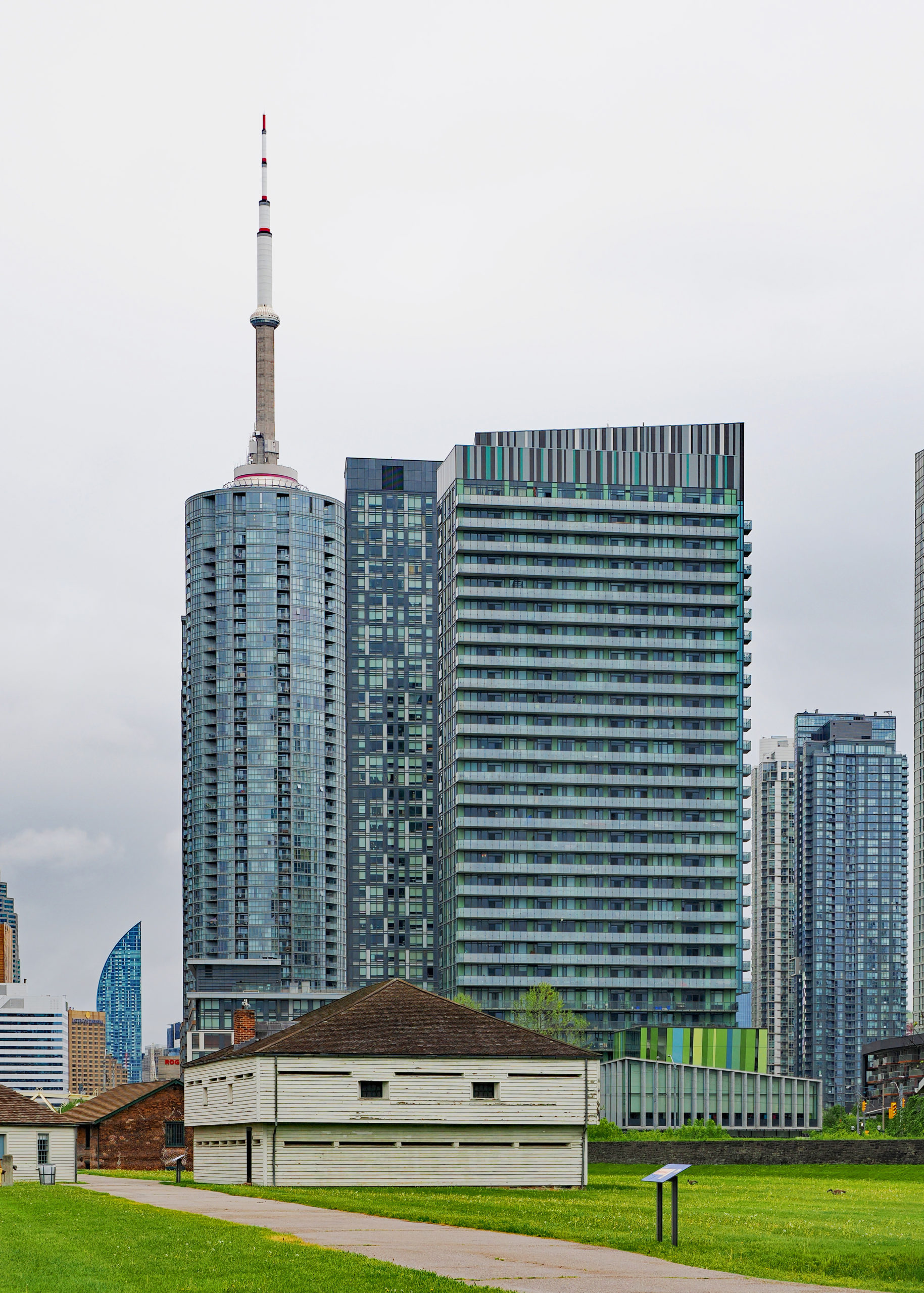
“The British established the town of York in 1793 with the installation of Fort York. The Town of York was later incorporated and renamed as the City of Toronto in 1834. This photo was taken standing on the Fort York historical site looking east towards the iconic CN Tower which is the world’s tallest free-standing structure since construction in 1975 to 2007.
The foreground/closest structure is one of Fort York’s Blockhouses with the CN tower as the furthest structure at approximately 1.5km to the east. There are a number of recent residential developments ranging from stacked townhouses to a 38-storey tower along Fort York Boulevard that are coincidentally compressed into one photo.”
Camera: Olympus
“Morning view” by Jose Davalos
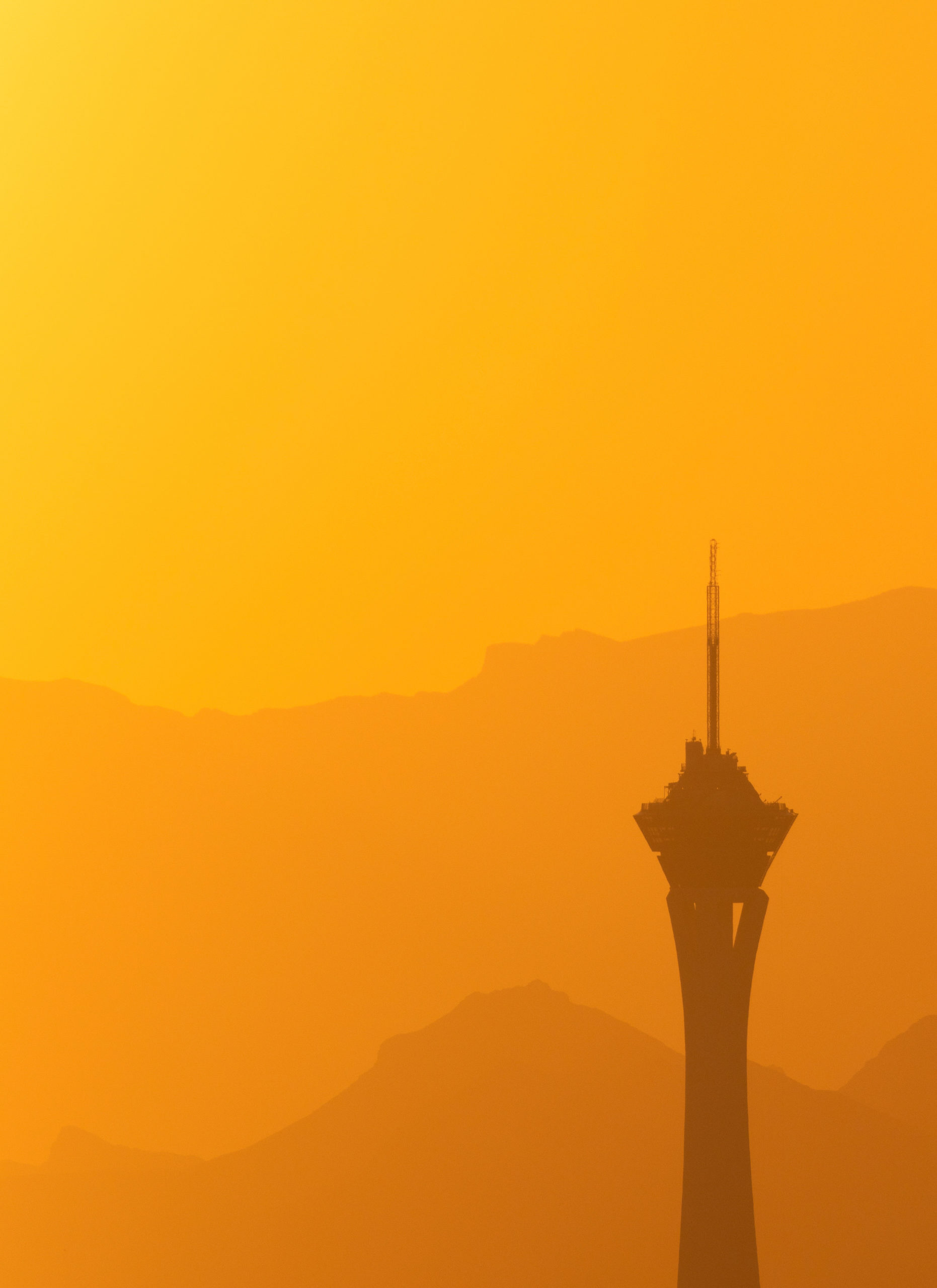
“From my roof deck, I see what makes this city great…Las Vegas. The photo was taken early in the morning, when the yellows and ambers of summer were in full bloom. My location is within approximately 8-miles of the Stratosphere. These iconic buildings have a created an oasis in the desert, a mecca for everyone looking for entertainment and just a little more. Standing at 1,149 feet it’s the tallest building and a beacon of some sorts to many. It stands as an idea of what a dreamer can achieve in a city of no limits, Mr Bob Stupak was that dreamer. All the major resorts create and outline in this desert valley, being the tallest structures in the area. These structures not only depict strength and longevity but also possibilities for travelers trying their luck for riches. Sipping on my coffee I glance at the horizon and dream BIG.”
Camera: Canon
“Future & past” by Damir Otegen
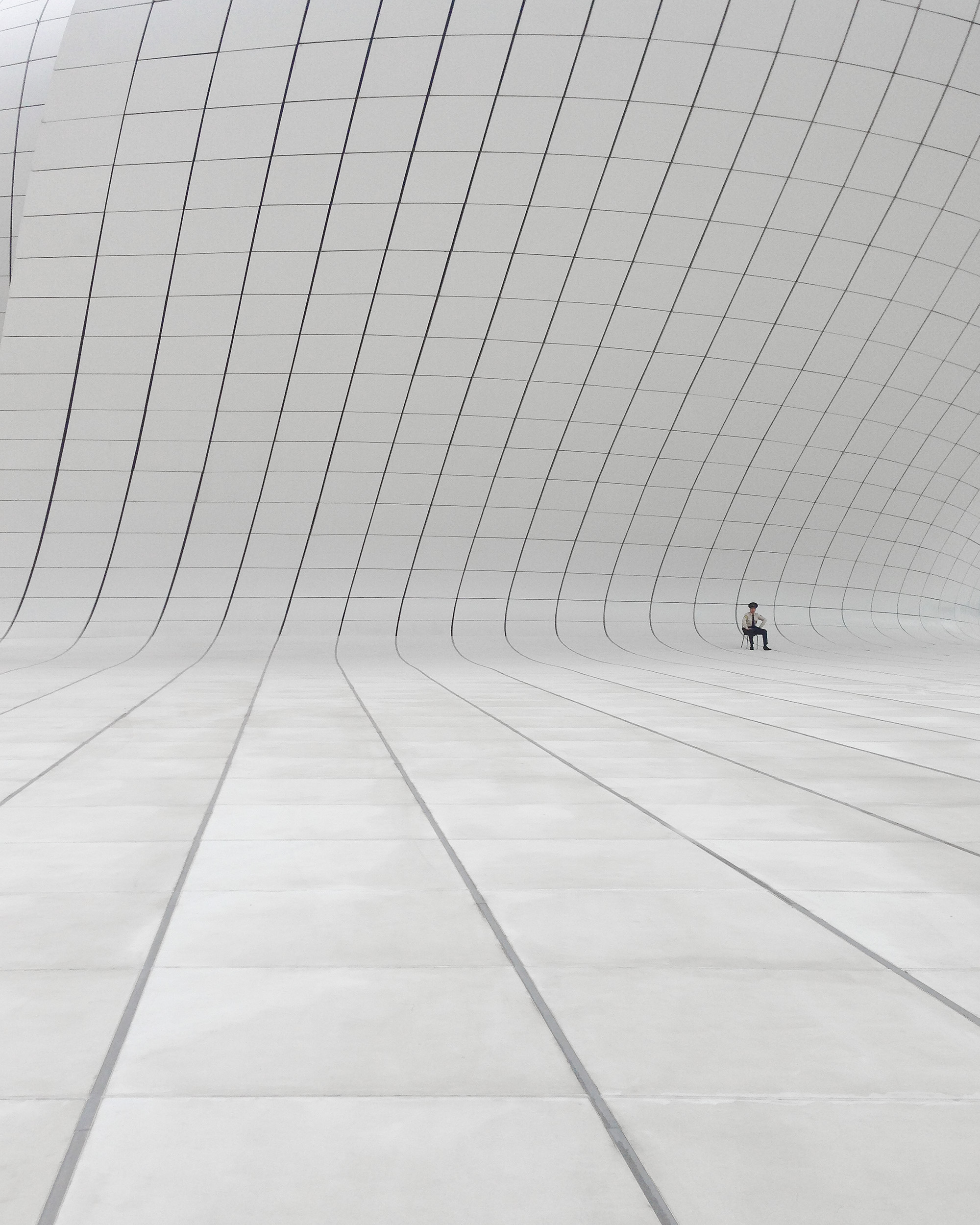
“Baku is a rapidly developing but still quite conservative city. The neo-futuristic Heydar Aliyev Center built by Zaha Hadid Architects expresses technical development and an optimistic look to the future. However, security watches this high-tech building while sitting on an old chair.”
Camera: iPhone
“Neighbors” by Adam Kroll
HLB Lighting Design
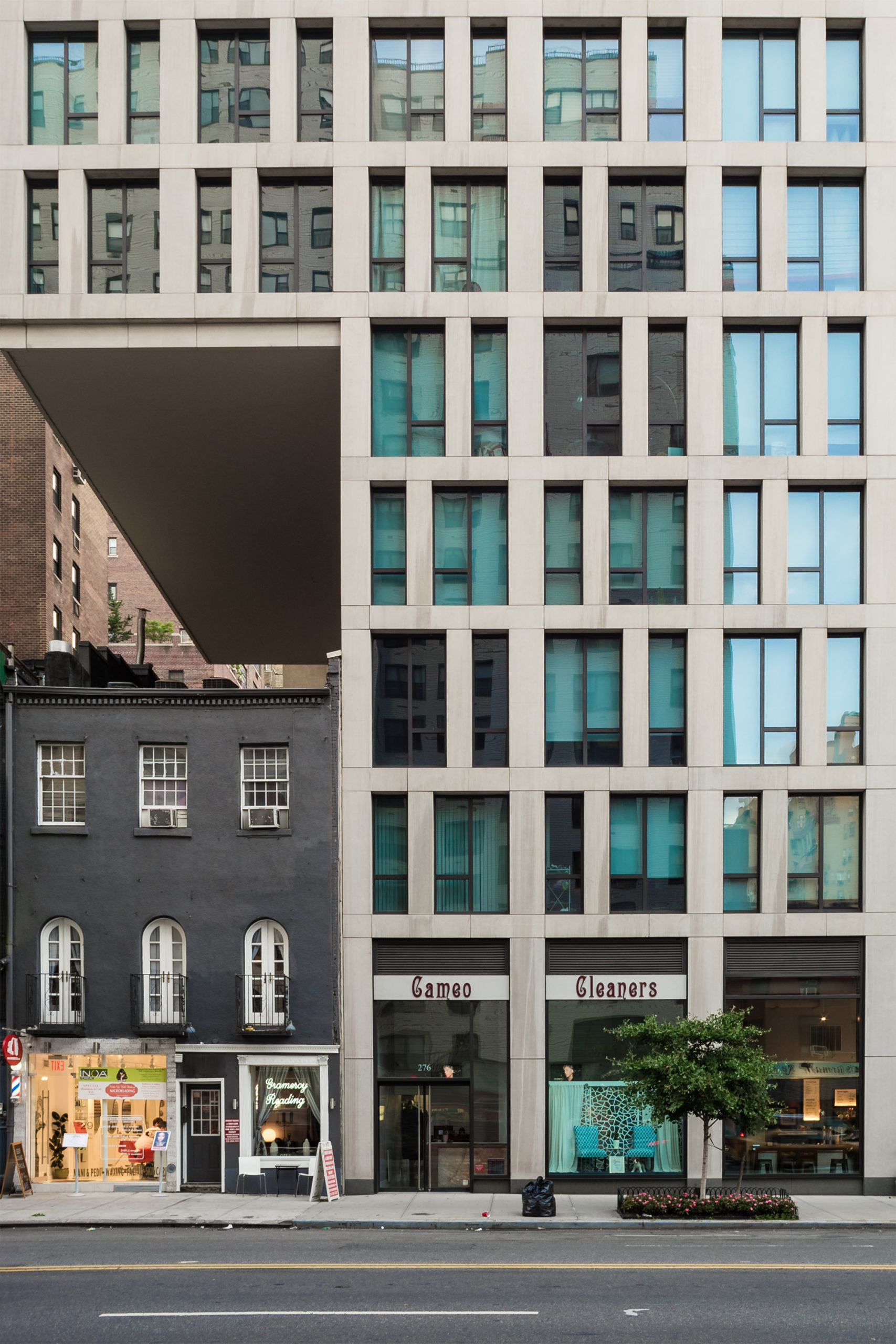
“In the Gramercy neighborhood of Manhattan, a new residential tower dominates its neighbor, appearing ready to engulf it. The buildings fit together geometrically like Tetris blocks, but in every other way seem to share nothing except their physical location. The regularity of the monolithic glass and stone tower contrasts with the diminutive scale and ornament of the older structure. What does the owner of the Tarot reading shop think about the new neighbor? Do the tower residents visit the Mani/Pedi salon in the smaller building? Or do the occupants reside in different worlds despite their proximity.”
Camera: Sony
“Home alone” by Damir Otegen
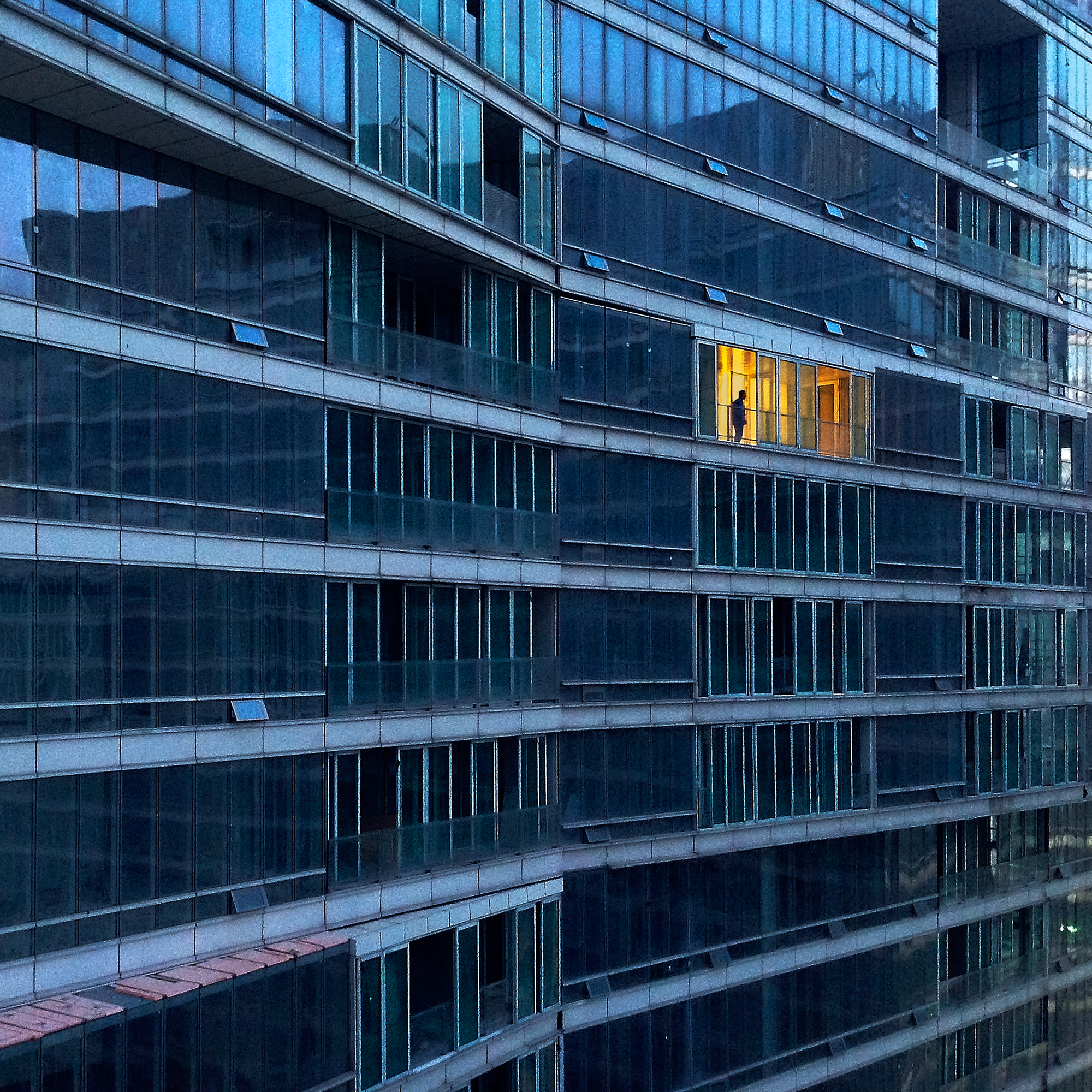
“Esentai Apartments is a unique residential complex in Almaty city. The complex is part of one of Kazakhstan’s most ambitious projects – Esentai Park, developed by the world-famous Skidmore, Owings & Merrill.
Esentai Apartments is the embodiment of global construction trends and an exclusive luxury lifestyle in the neighborhood with the world’s leading brands such as Dior, Louis Vuitton, The Ritz-Carlton, etc.
This complex is a striking piece of urban architecture. But despite the above, almost no one lived there for many years.”
Camera: iPhone
“56 Leonard” by PAUL TURANG
Paul Turang Photography
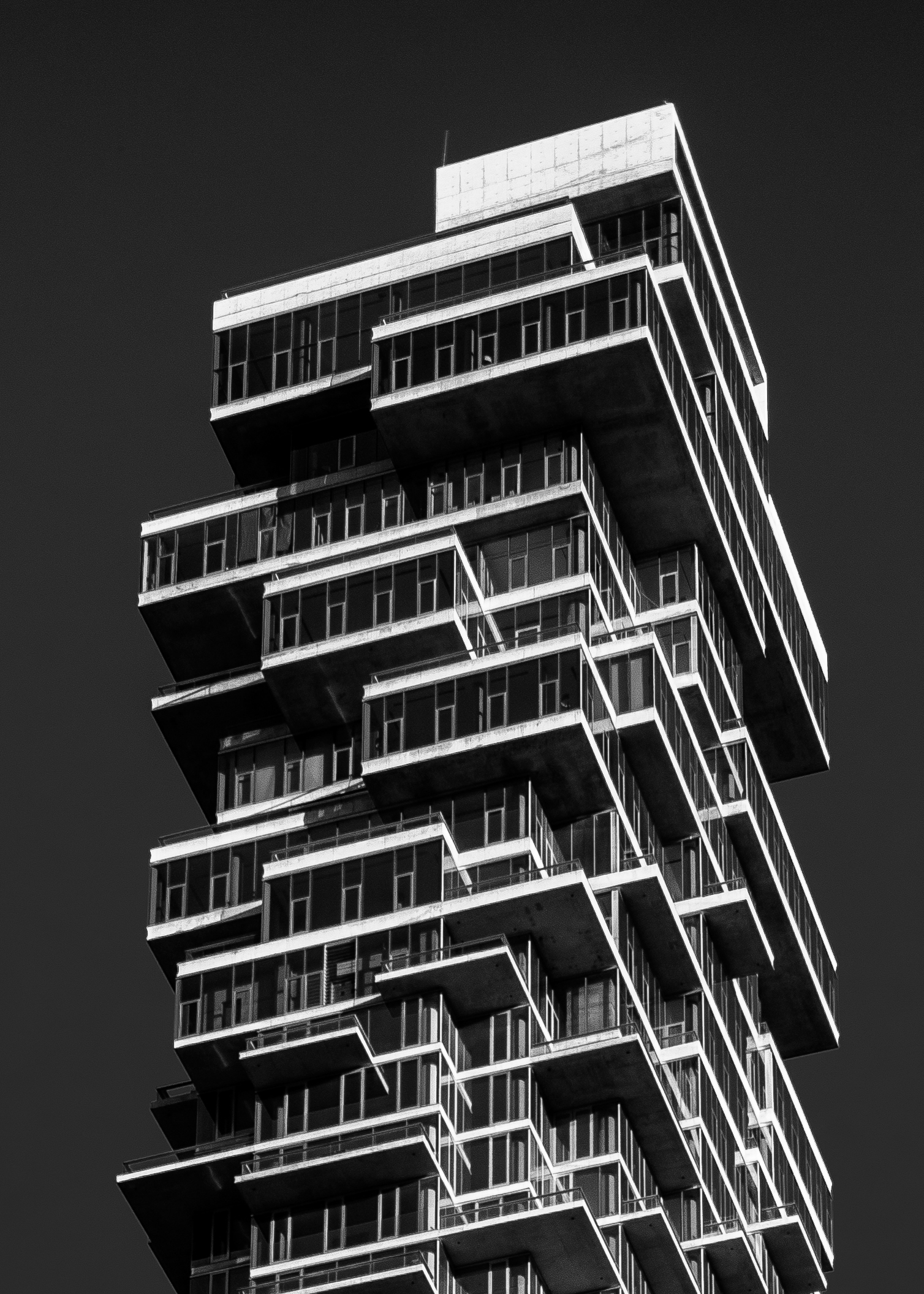
“56 Leonard Street is an 821-foot-tall, 57-story skyscraper on Leonard Street in the neighborhood of Tribeca in Manhattan, New York City, United States. The building was designed by the Swiss architecture firm Herzog & de Meuron, which describes the building as “houses stacked in the sky.”
Camera: Canon
“Saddleback Sports” by PAUL TURANG
Paul Turang Photography
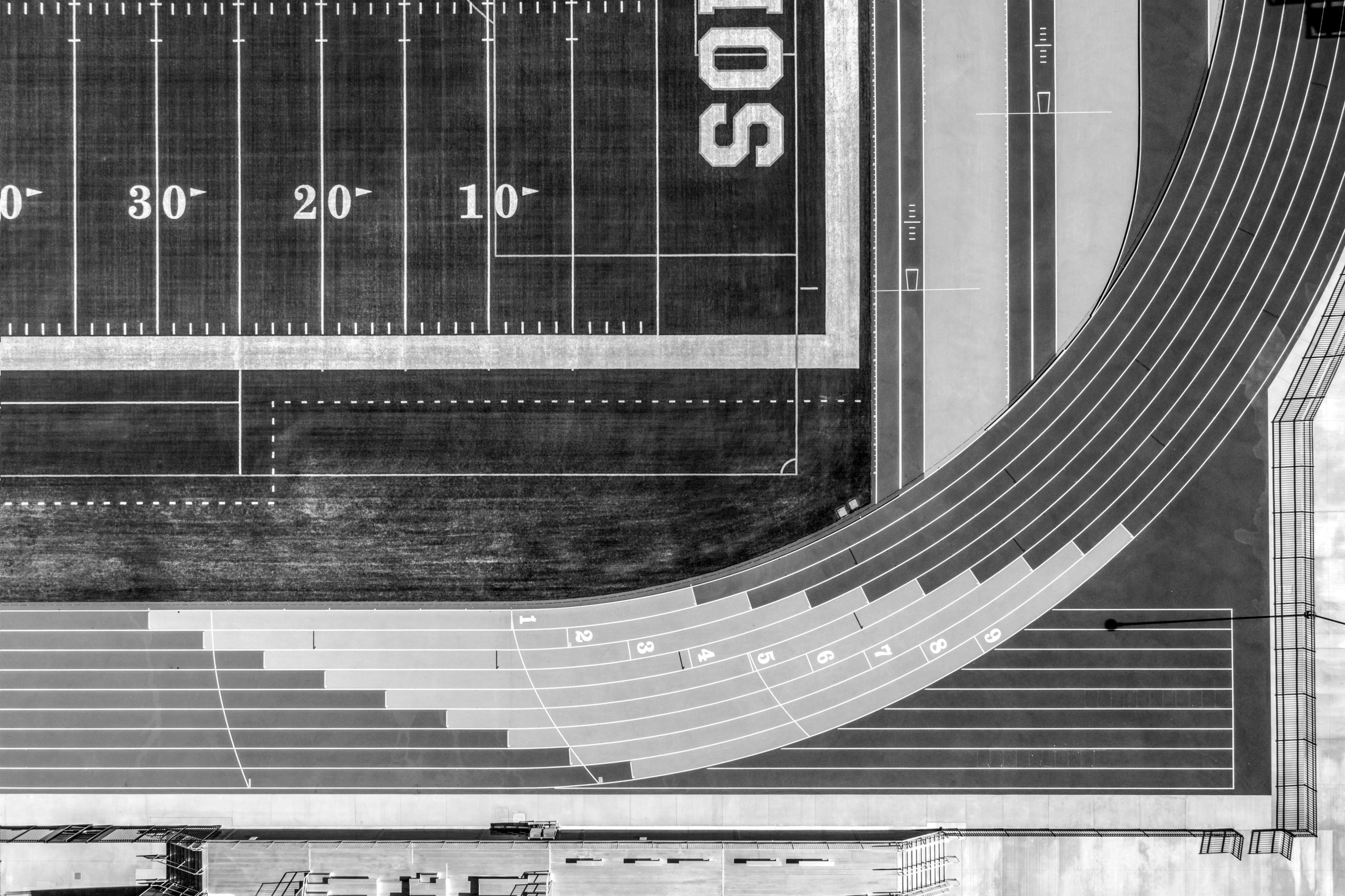
“Aerial detail of new Sports Complex.”
Camera: Canon
“Post-Pandemic?” by Nathan Swords
Virginia Tech
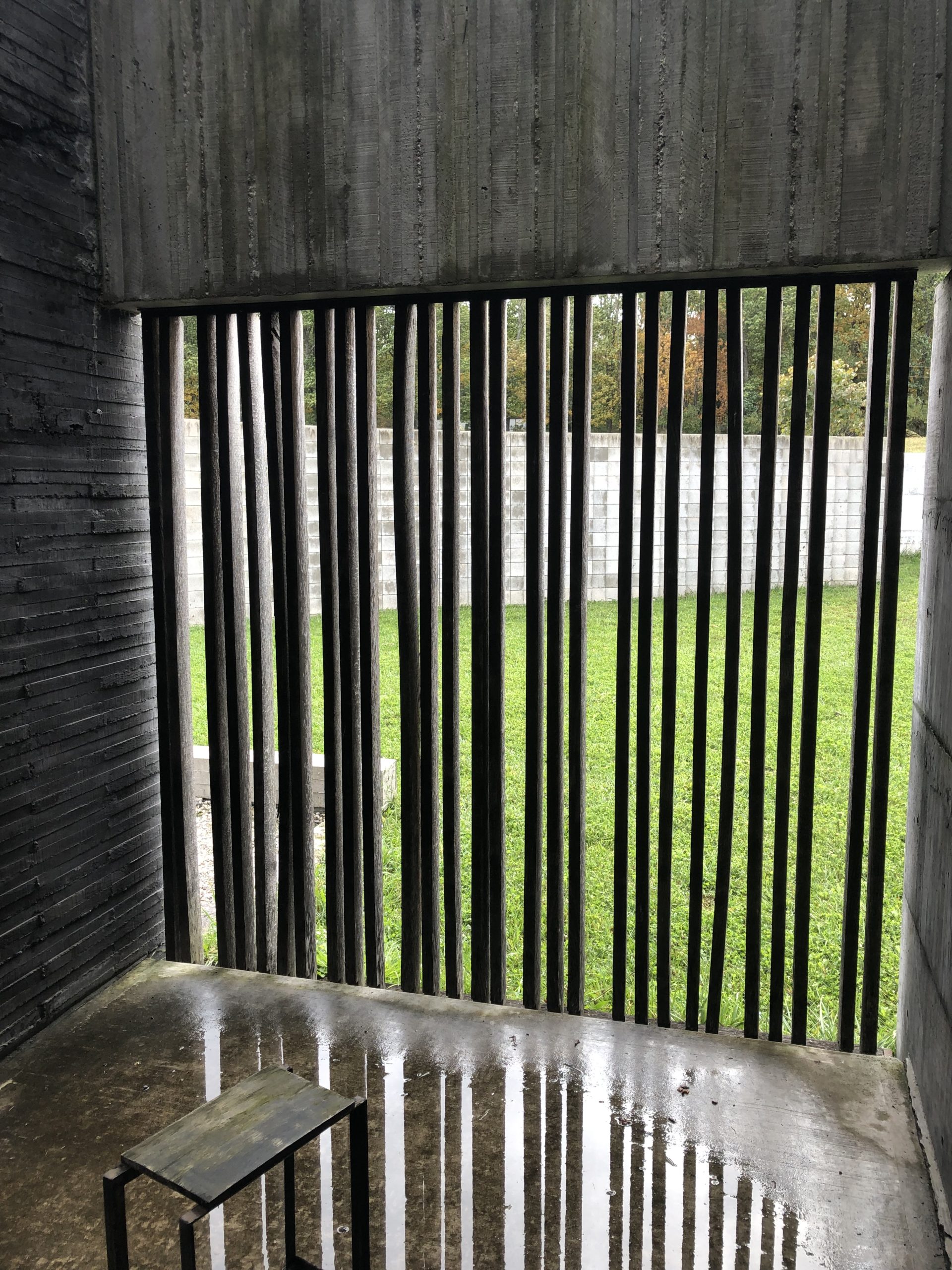
“There is an architectural graveyard at Virginia Tech. It is not on any map.
Beyond the scrapped solar houses and rotting models is a large concrete cube. I visit this cube frequently, especially during or after interesting weather. It is a space to experience time.
Even though it can seem like the pandemic is behind us, if we look closer we can see that the world we once knew has changed. Moving forward, we will always see things through the lens of the pandemic.”
Camera: iPhone
“Homerton College Dining Hall” by David Valinsky
David Valinsky Photography
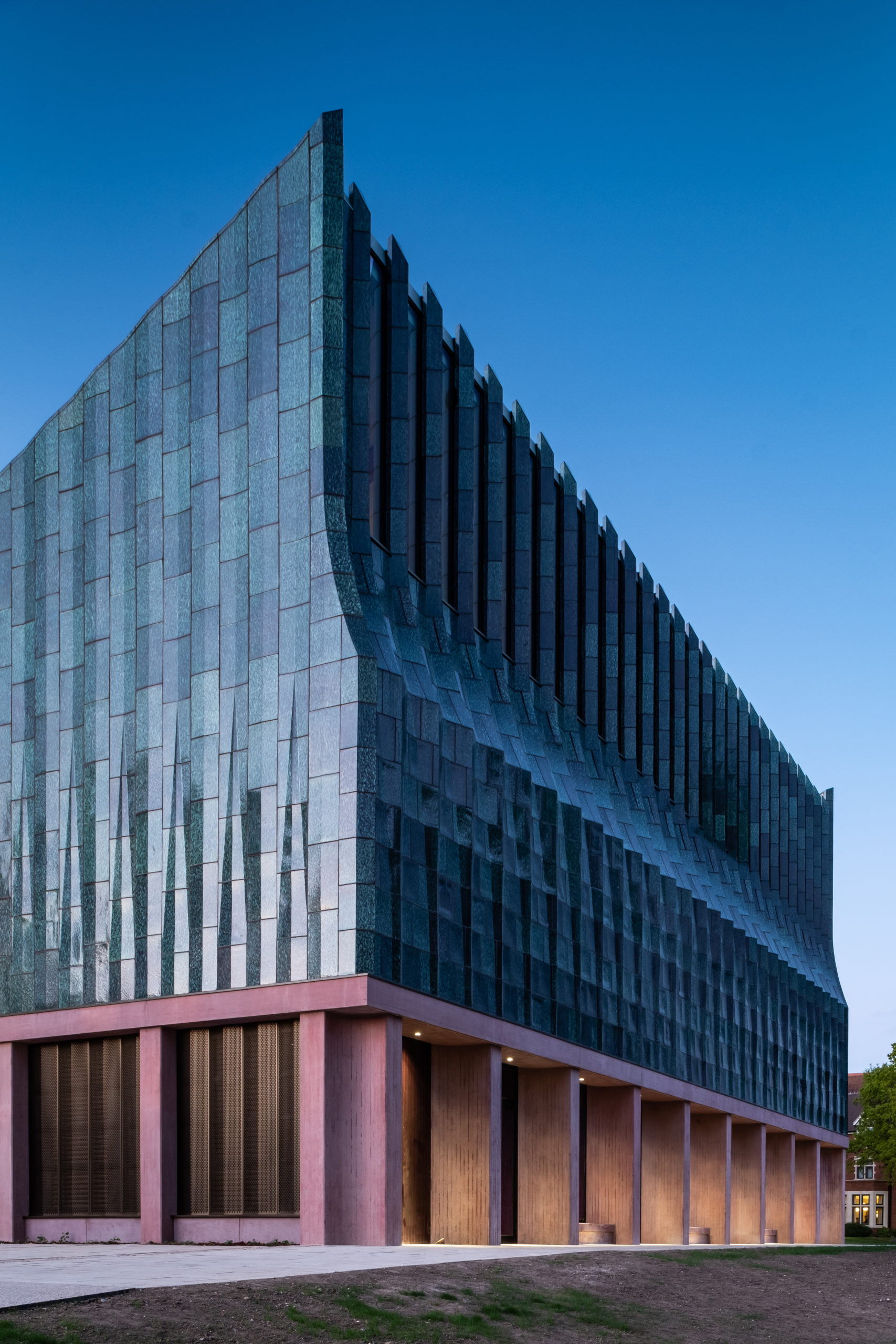
“Feilden Fowles’ dining hall for Homerton College in Cambridge is an enigmatic creation, a celebration of bespoke materials and textures that is undoubtedly one of the most significant architectural contributions to an architecturally-rich city in recent years. The rough, board-marked concrete loggia provides a robust base for a cliff-like wall of glassy ceramic that is delicately pleated, absorbing and reflecting the light around it, more so without direct sunlight.
From this sharp angle, however, the folds, pleats and sculpted upper level become a rugged monumental mass. All glazing on both levels is all but hidden by deep reveals: extenuated fins to the clerestory and deeply sculpted concrete to the loggia. At blue-hour the material qualities and rich coloring of this sculptural object are brought to the fore, heightened by shooting angle that all but denies the fenestration. Only the lighting implies the inhabitation of this beautiful form.”
Camera: Fujifilm SLR




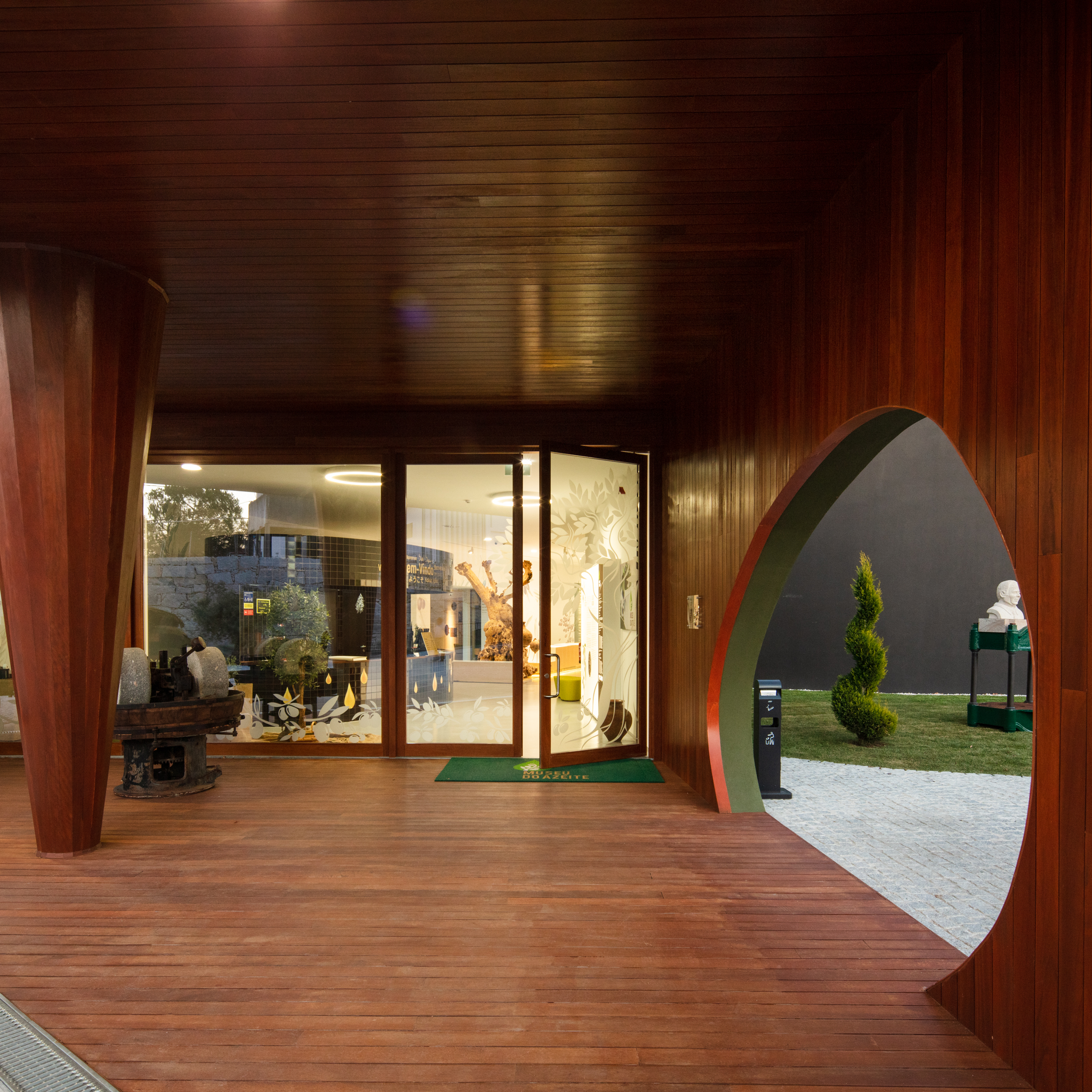
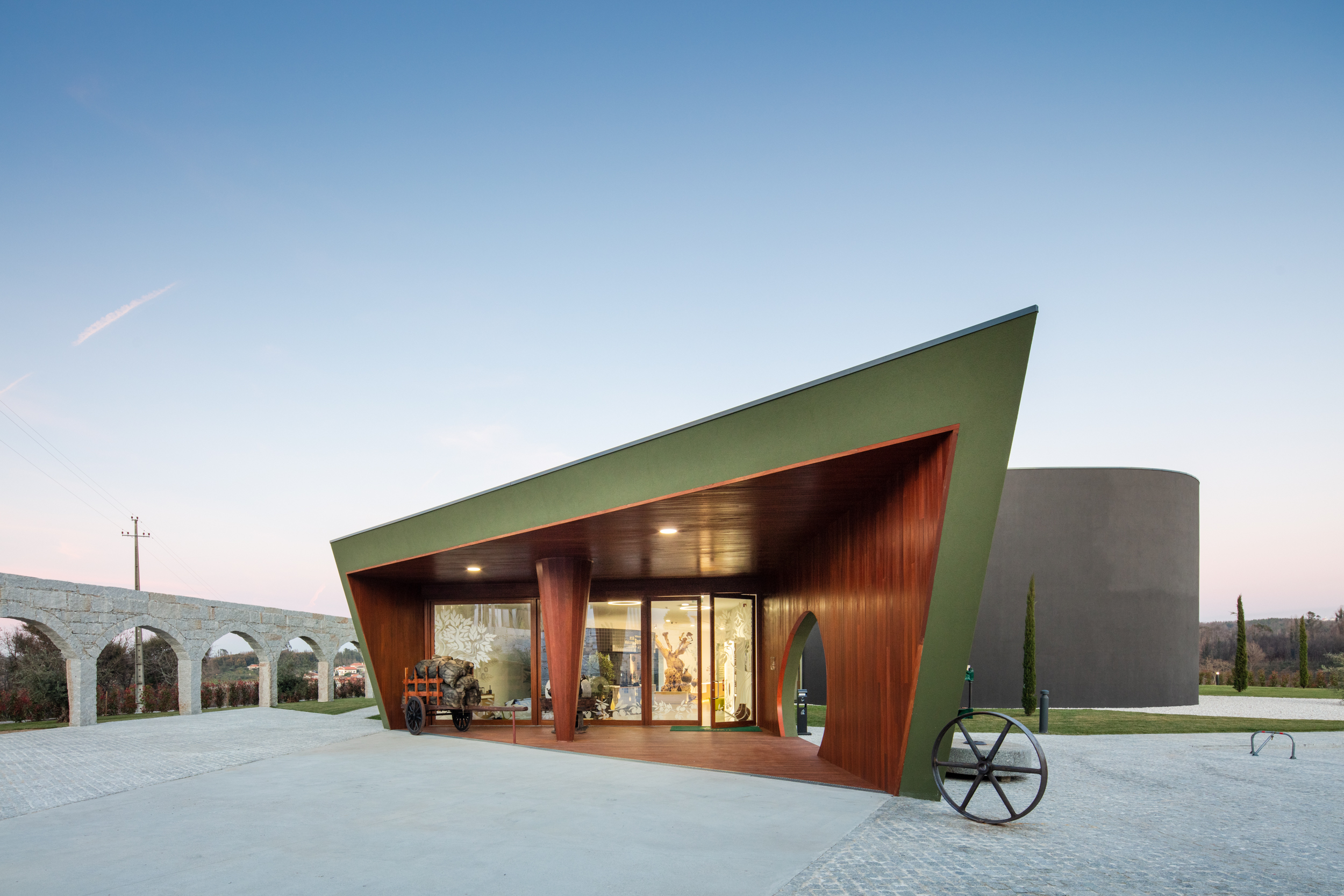
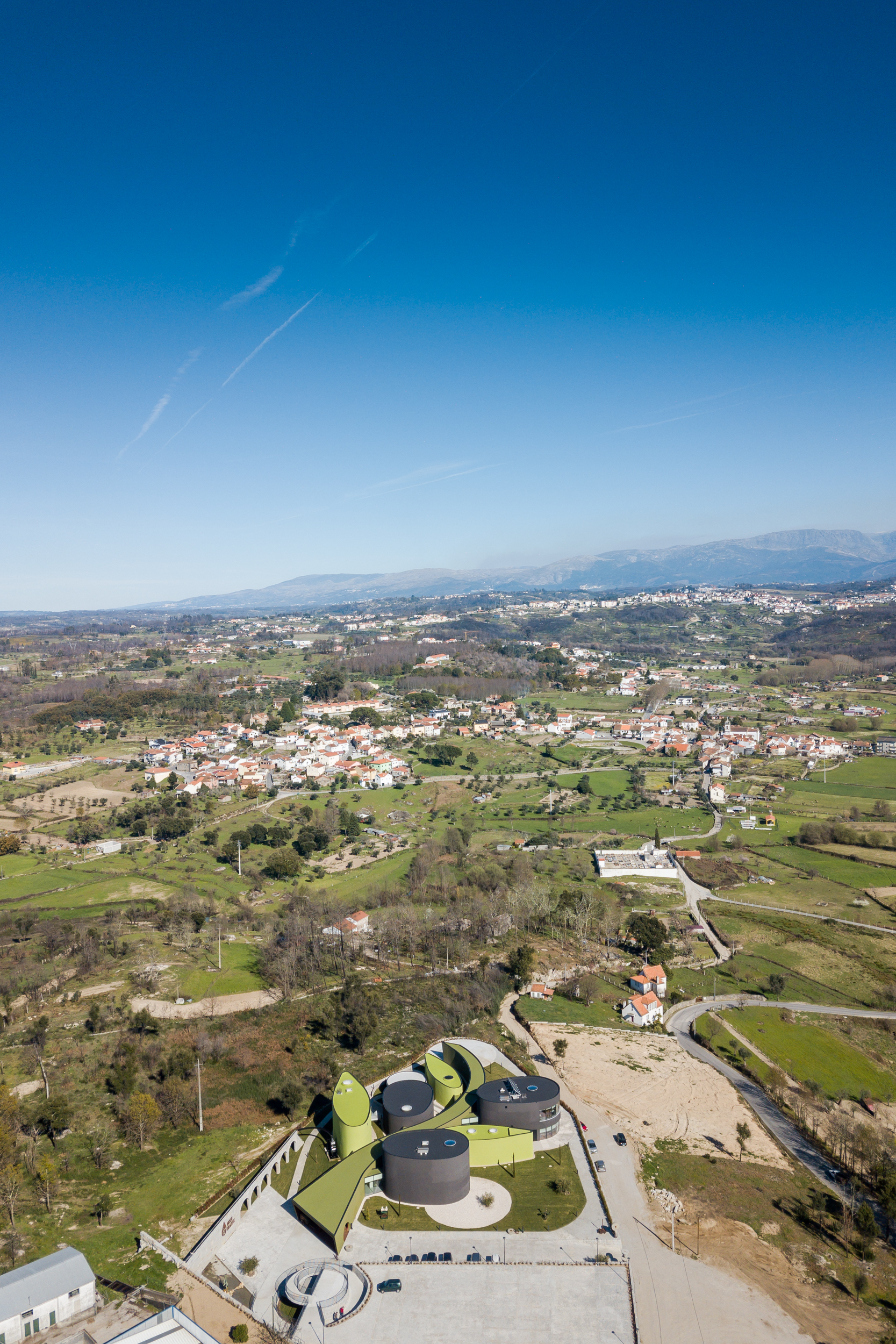
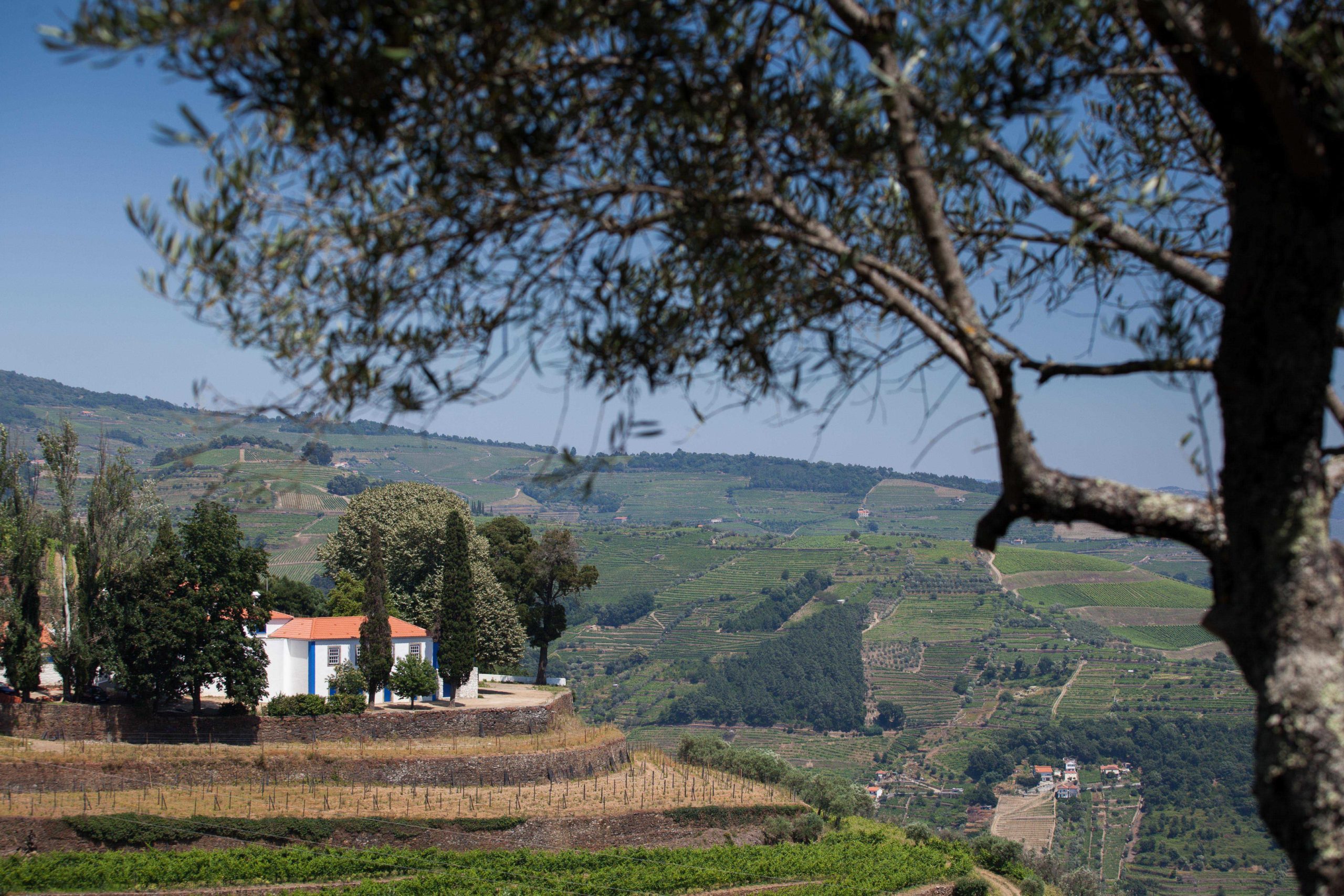
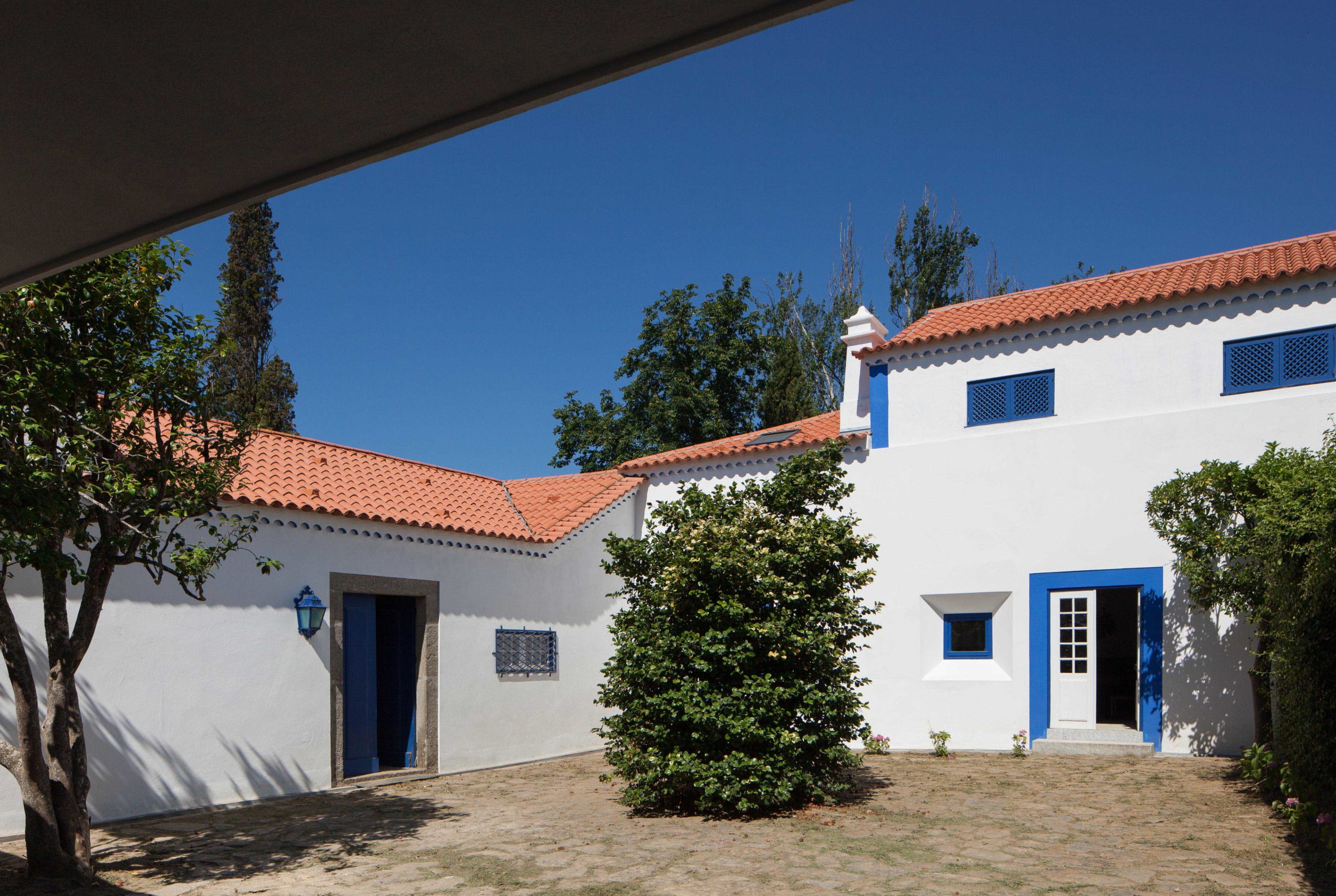
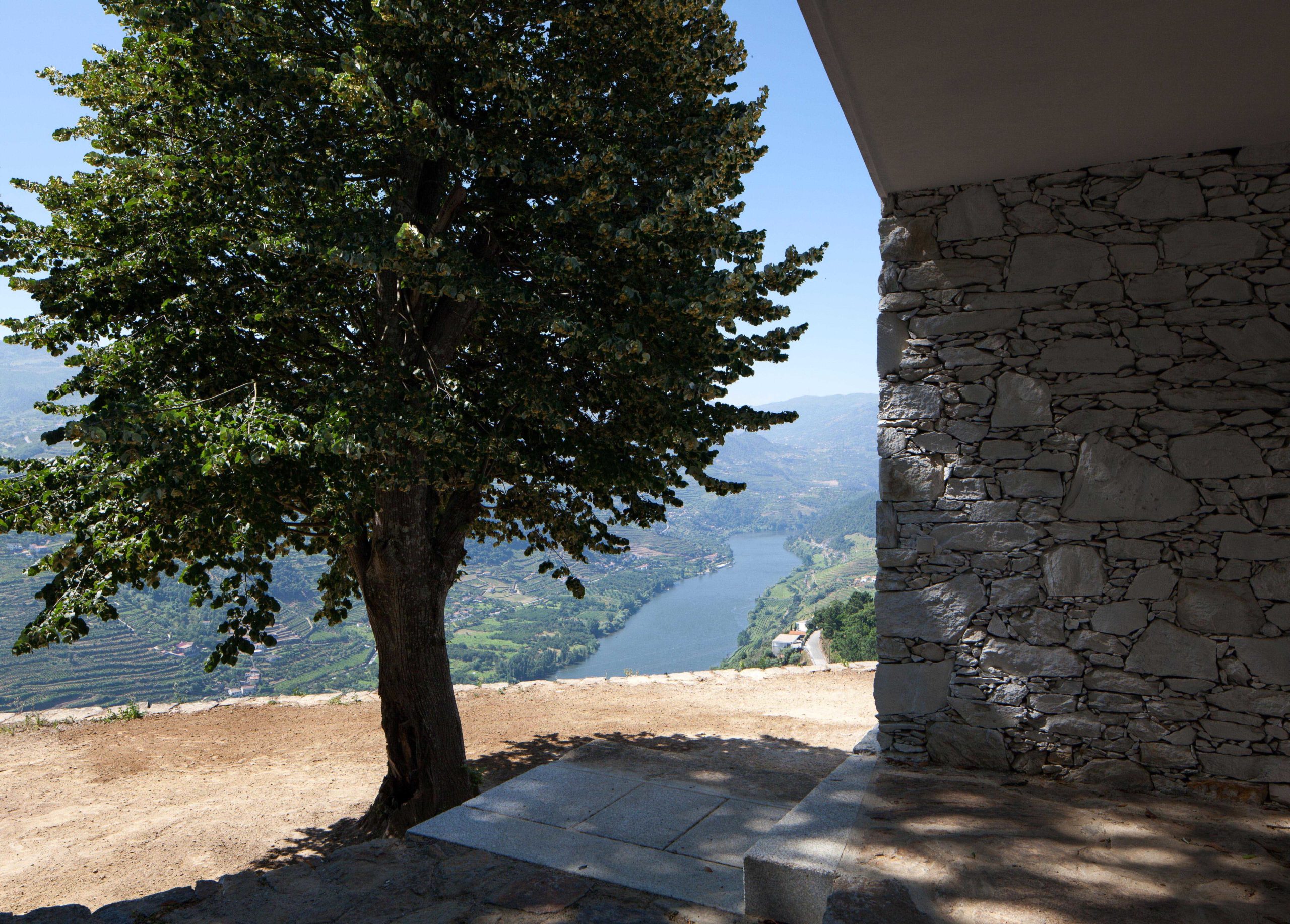 One does not need to venture far to be immersed in Portugal’s expansive history. From the eighth century, Muslim communities dominated the Iberian Peninsula and have left their mark in today’s modern-day Portugal. Moorish architecture can be spotted by simply browsing the streets of Lisbon, while others incorporate traditional Moorish elements into their contemporary builds.
One does not need to venture far to be immersed in Portugal’s expansive history. From the eighth century, Muslim communities dominated the Iberian Peninsula and have left their mark in today’s modern-day Portugal. Moorish architecture can be spotted by simply browsing the streets of Lisbon, while others incorporate traditional Moorish elements into their contemporary builds.
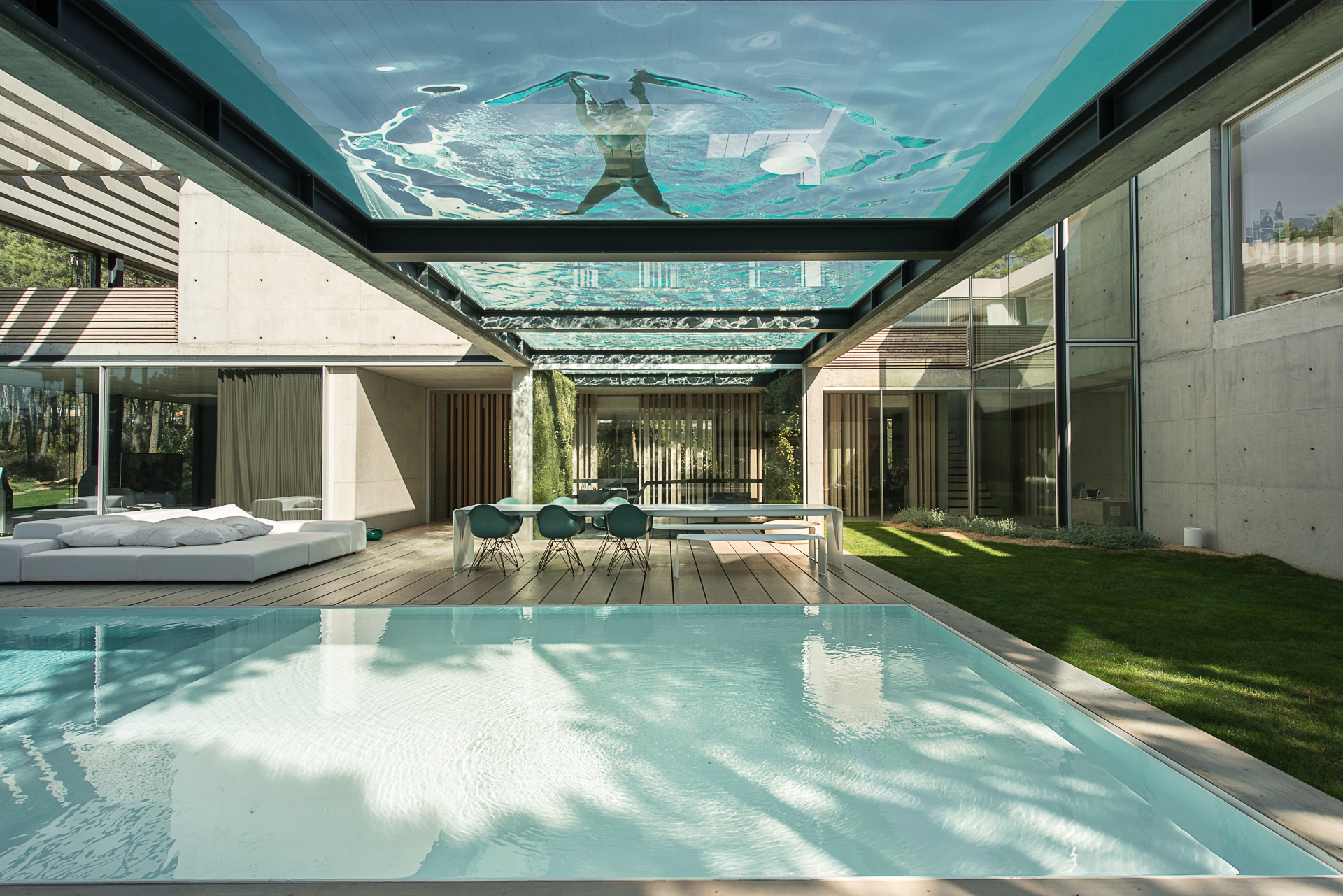
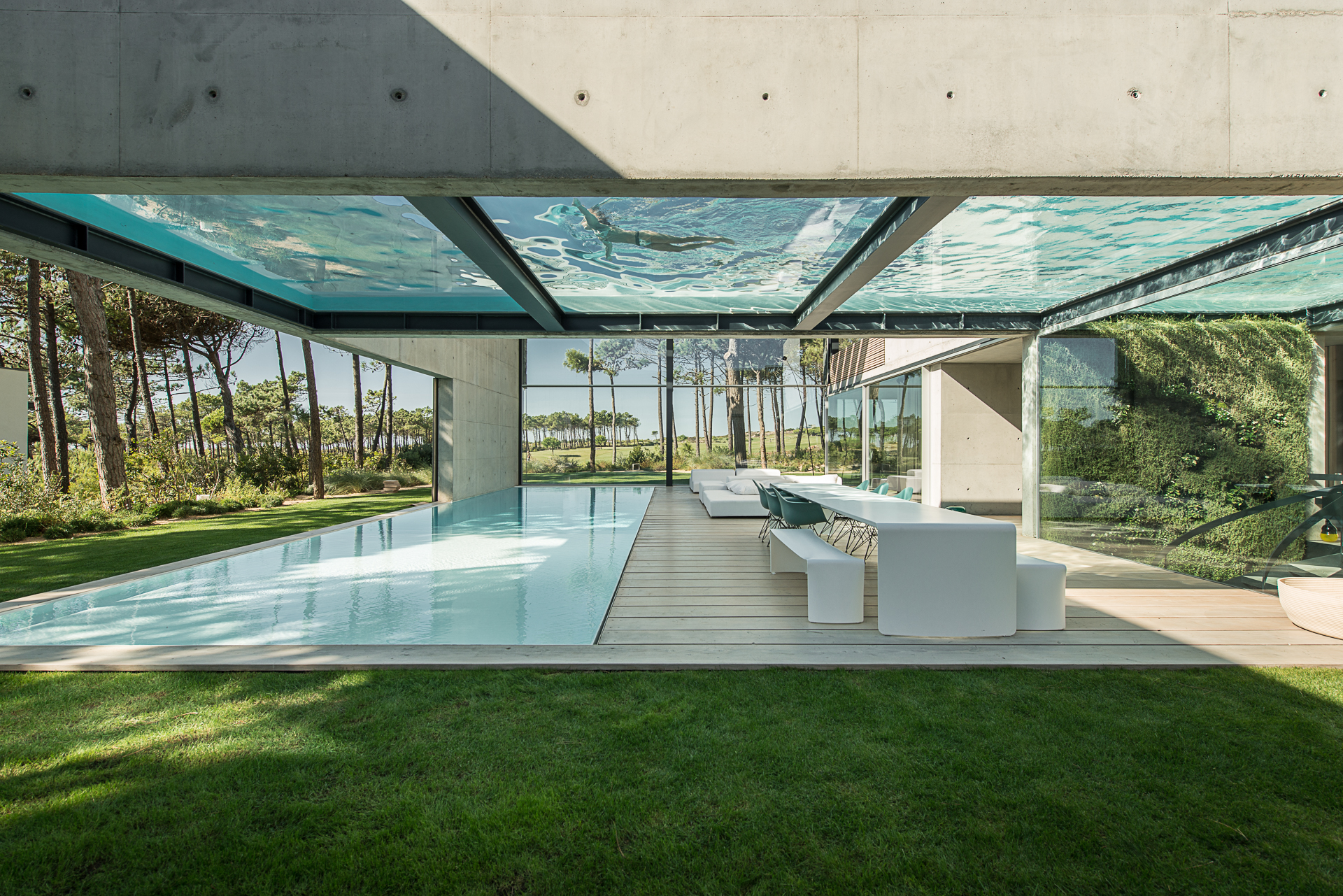 Portugal’s visual language is rich in well-preserved historic architecture and innovative contemporary design. This marriage of old and new makes for a special place to explore.
Portugal’s visual language is rich in well-preserved historic architecture and innovative contemporary design. This marriage of old and new makes for a special place to explore.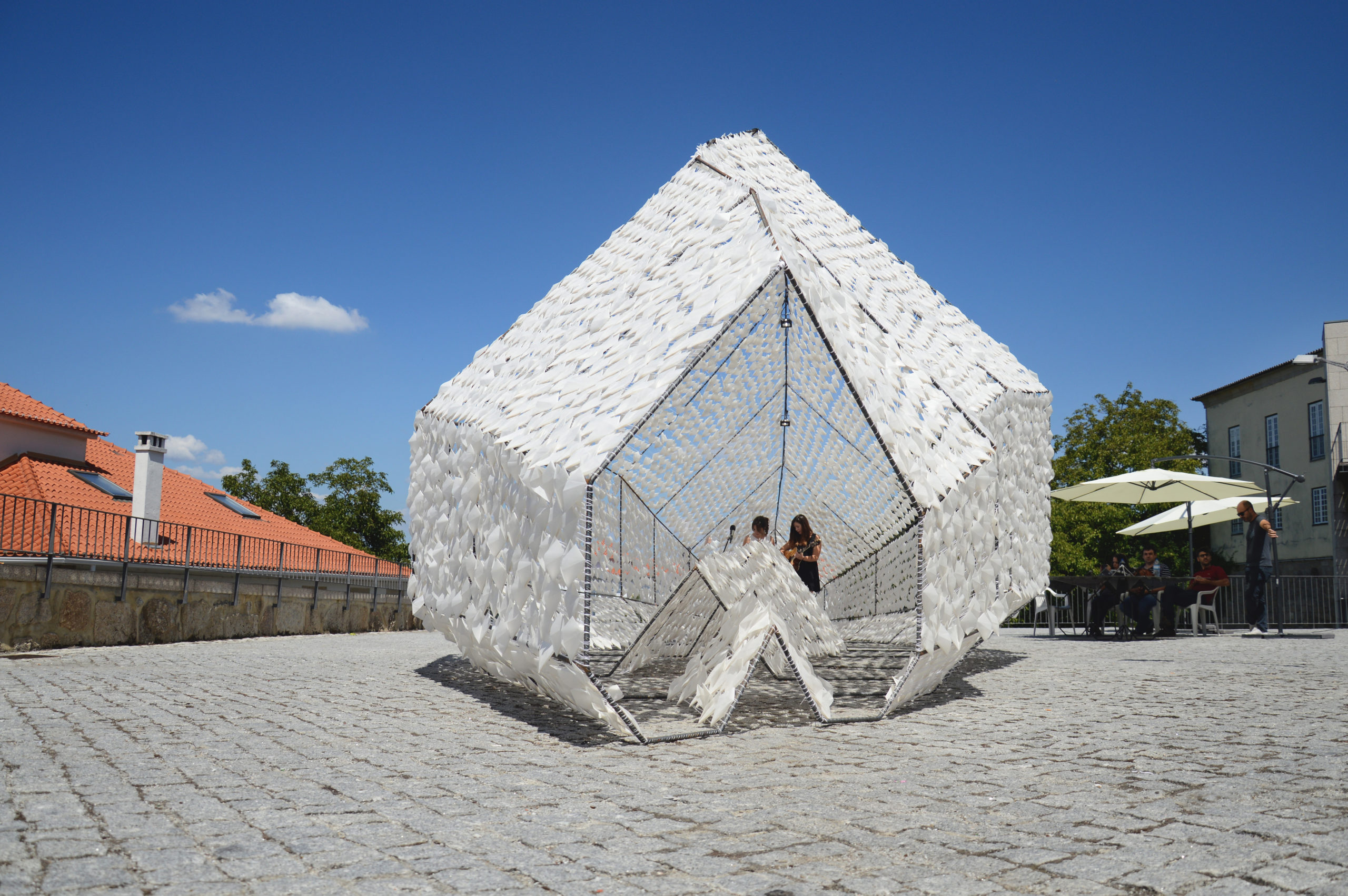
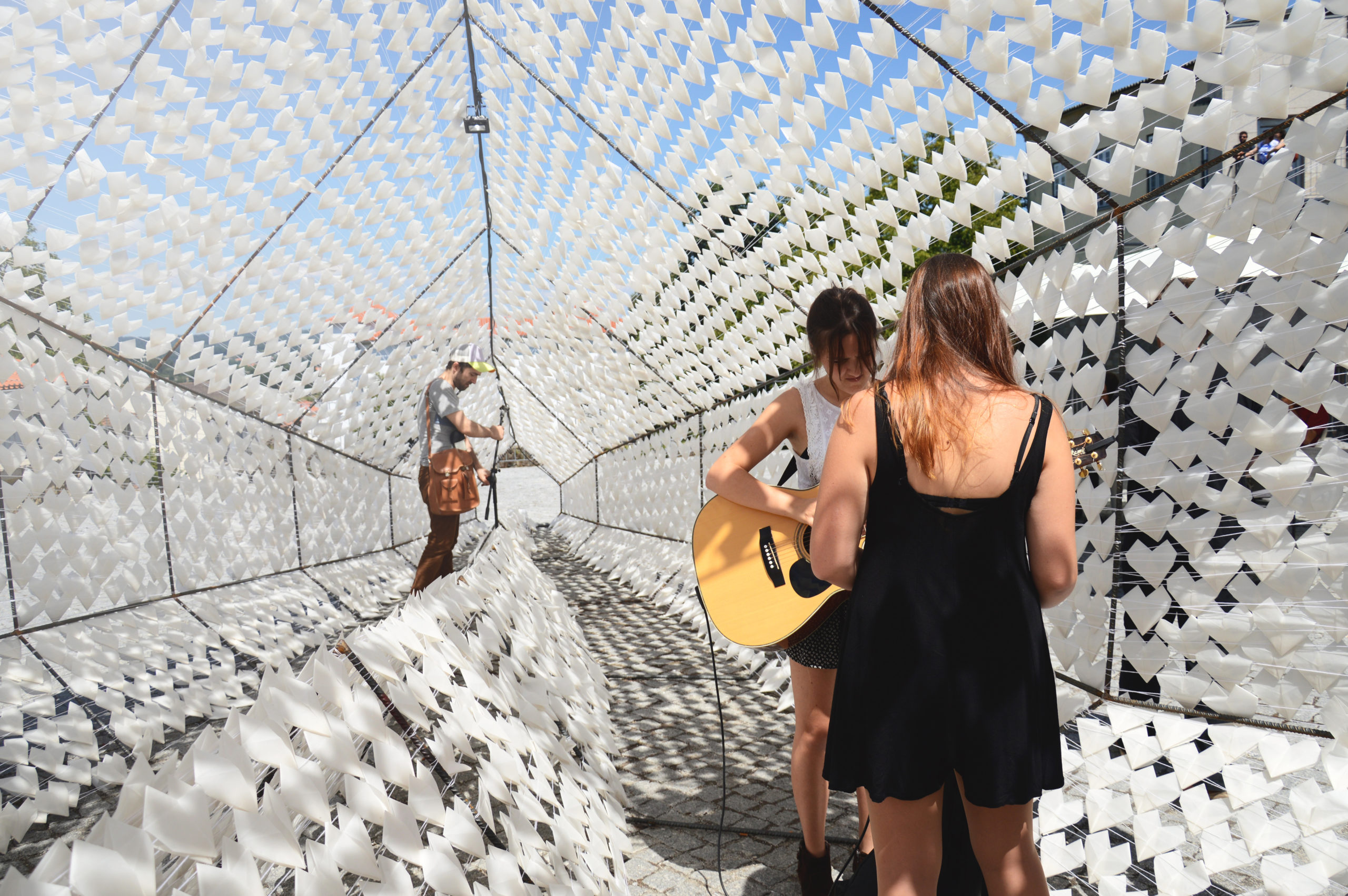
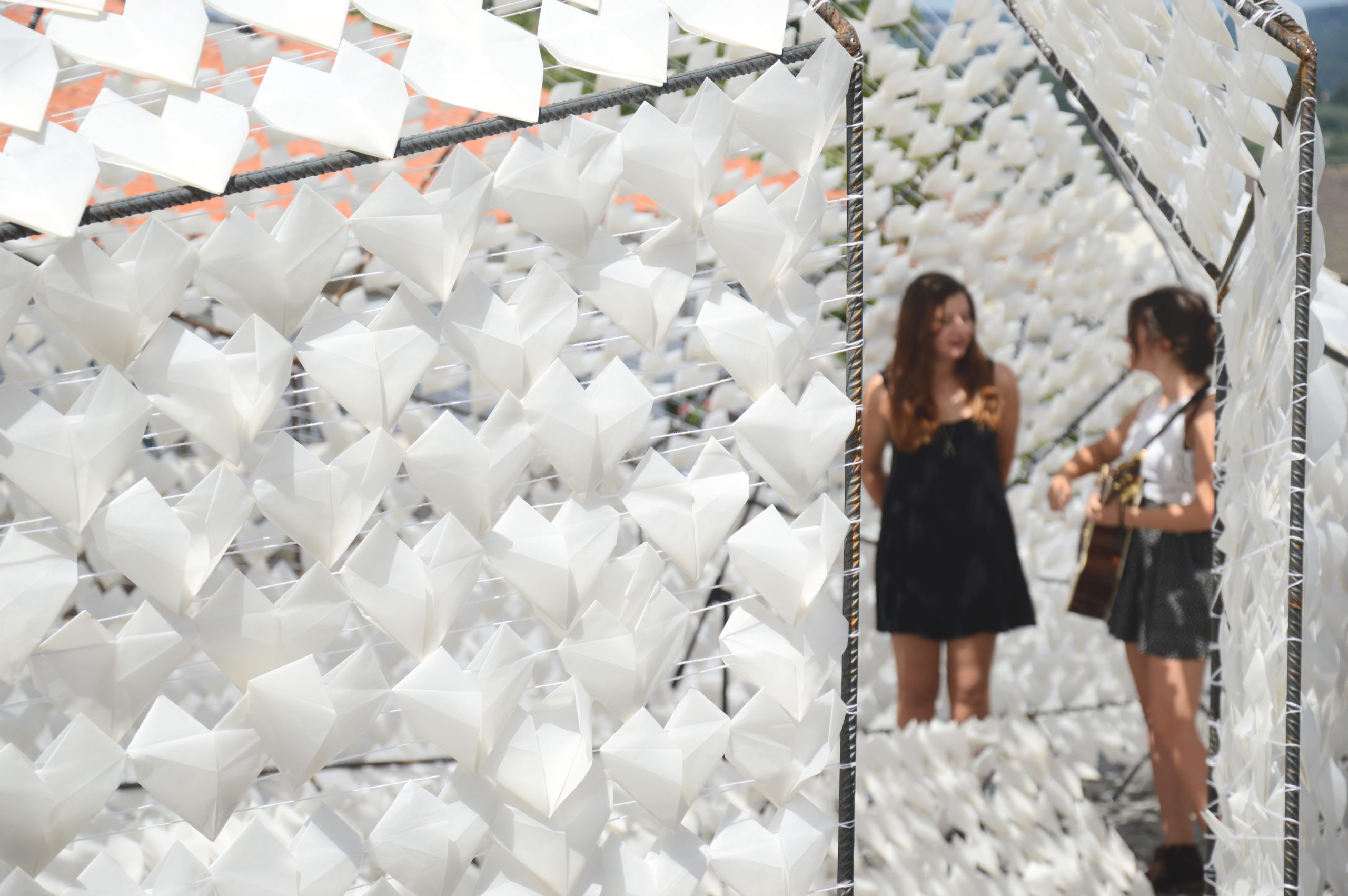 Portuguese designers utilize public spaces in a very special way. With the goal of strengthening community and encouraging interaction, public structures can be found throughout the country.
Portuguese designers utilize public spaces in a very special way. With the goal of strengthening community and encouraging interaction, public structures can be found throughout the country.